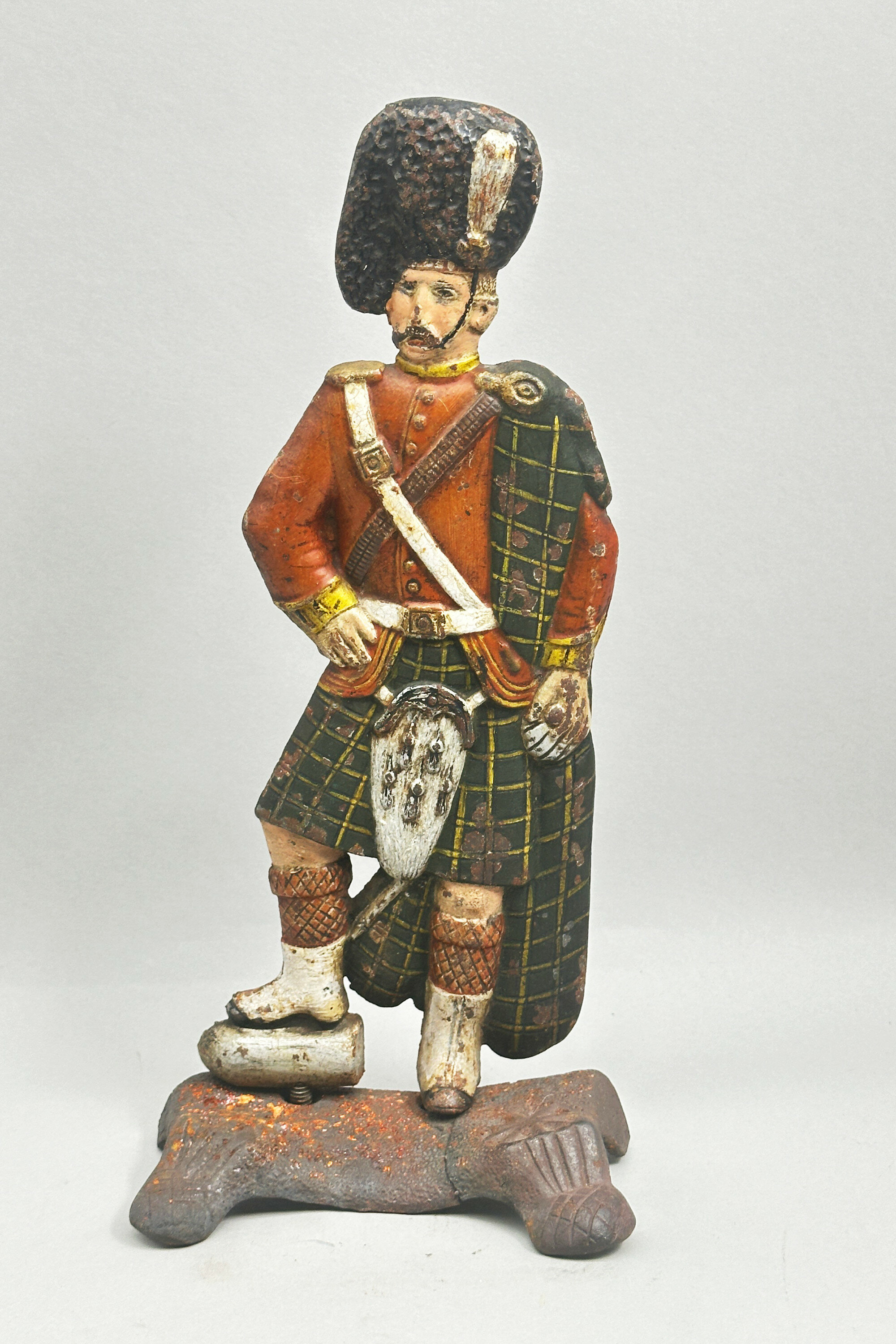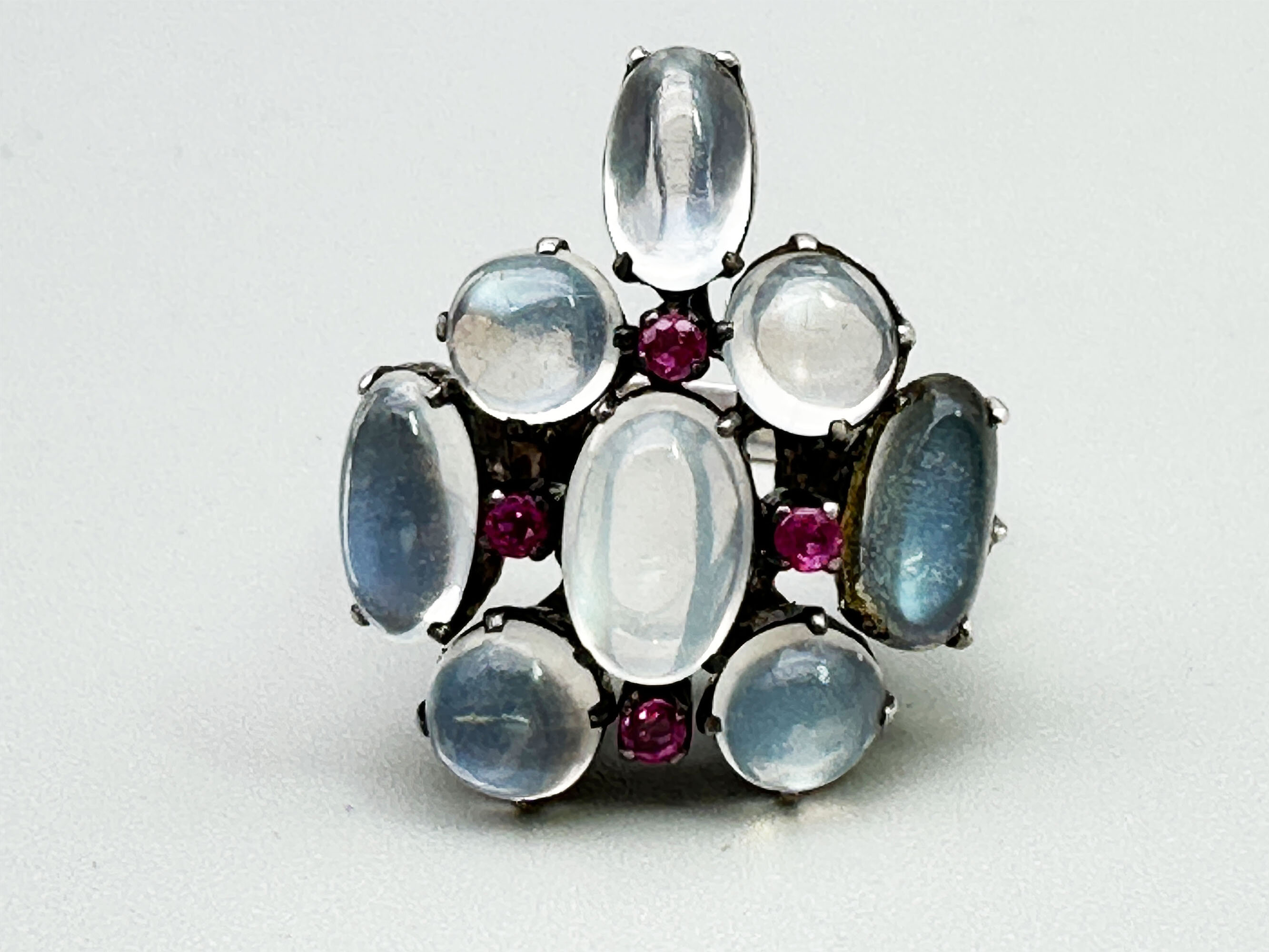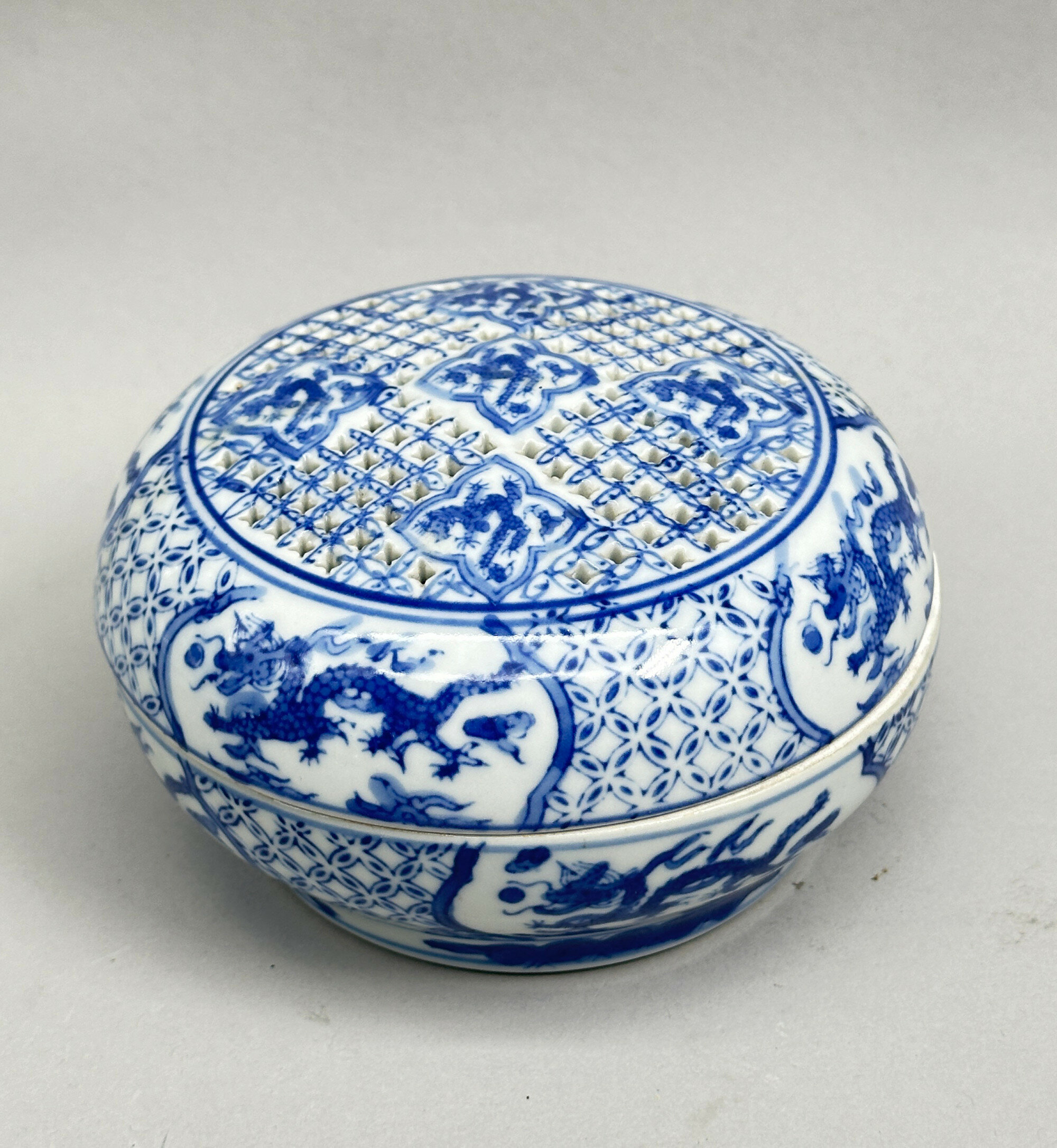
Chinese Blue and White Box and Cover with pierced lid, late C20th
Price: £25The Charles Sadek Import Company was founded in 1936 by the father and son Charles and Norman Sadek and began by importing decorative items from Japan later broadening their range to a wider variety of suppliers including China. These pieces were sold under the ‘Andrea by Sadek’ brand, named after Norman's daughter Andrea. The business continued to a third generation until it was taken over by Fitz & Floyd in 2015.
This box, then, is a typical example of their range of wares, good quality decorative items marketed at an affordable price. The quality of these boxes can vary and this piece seems to be an above average example.
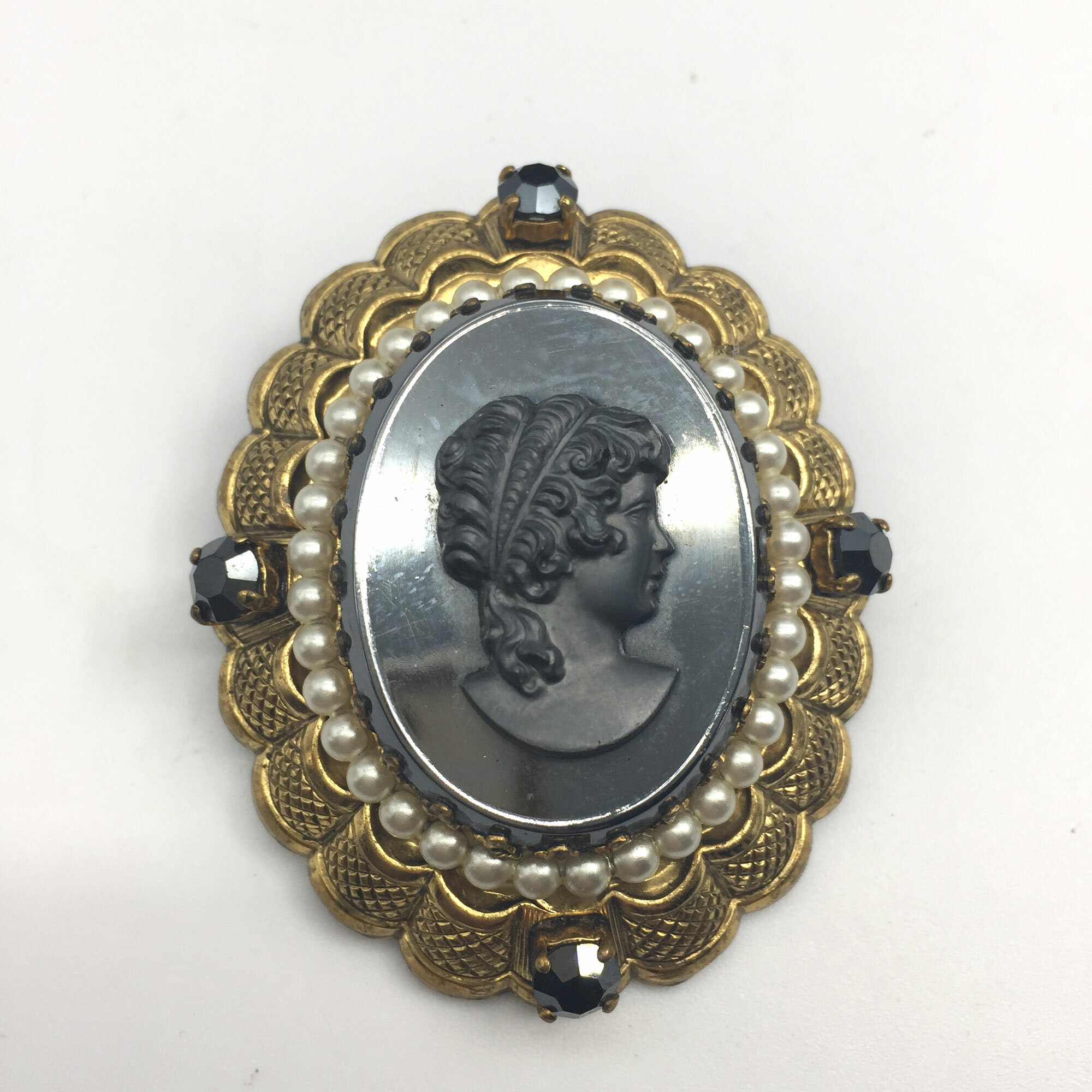
Large costume cameo brooch, marked W. Germany
Price: £15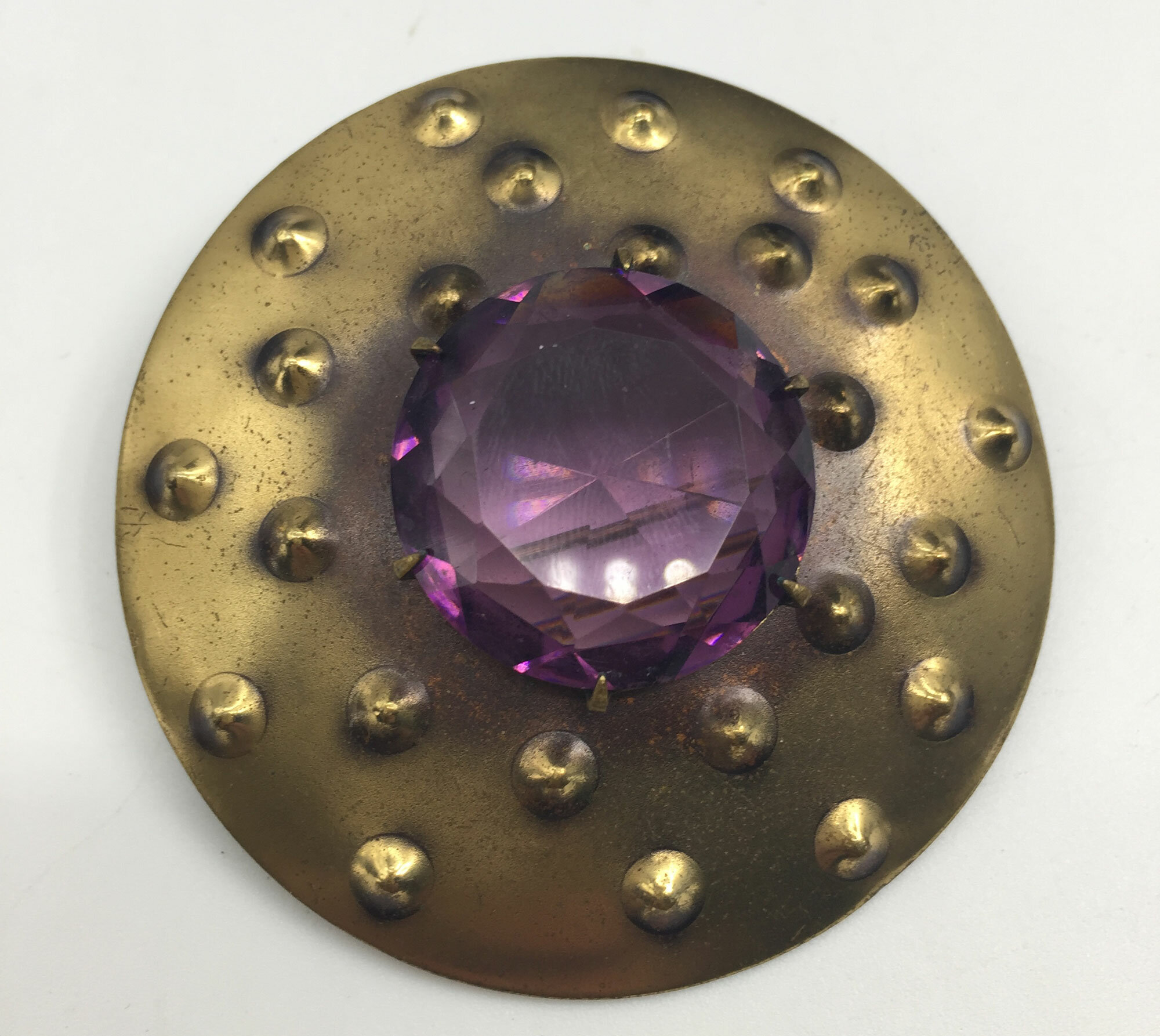
Art Deco Scottish shield brooch
Price: £20
Suite of Taxco - necklace, bracelet and earrings c1960
Price: £475
Taxco Silver and Copper Bracelet, c1940
Price: £55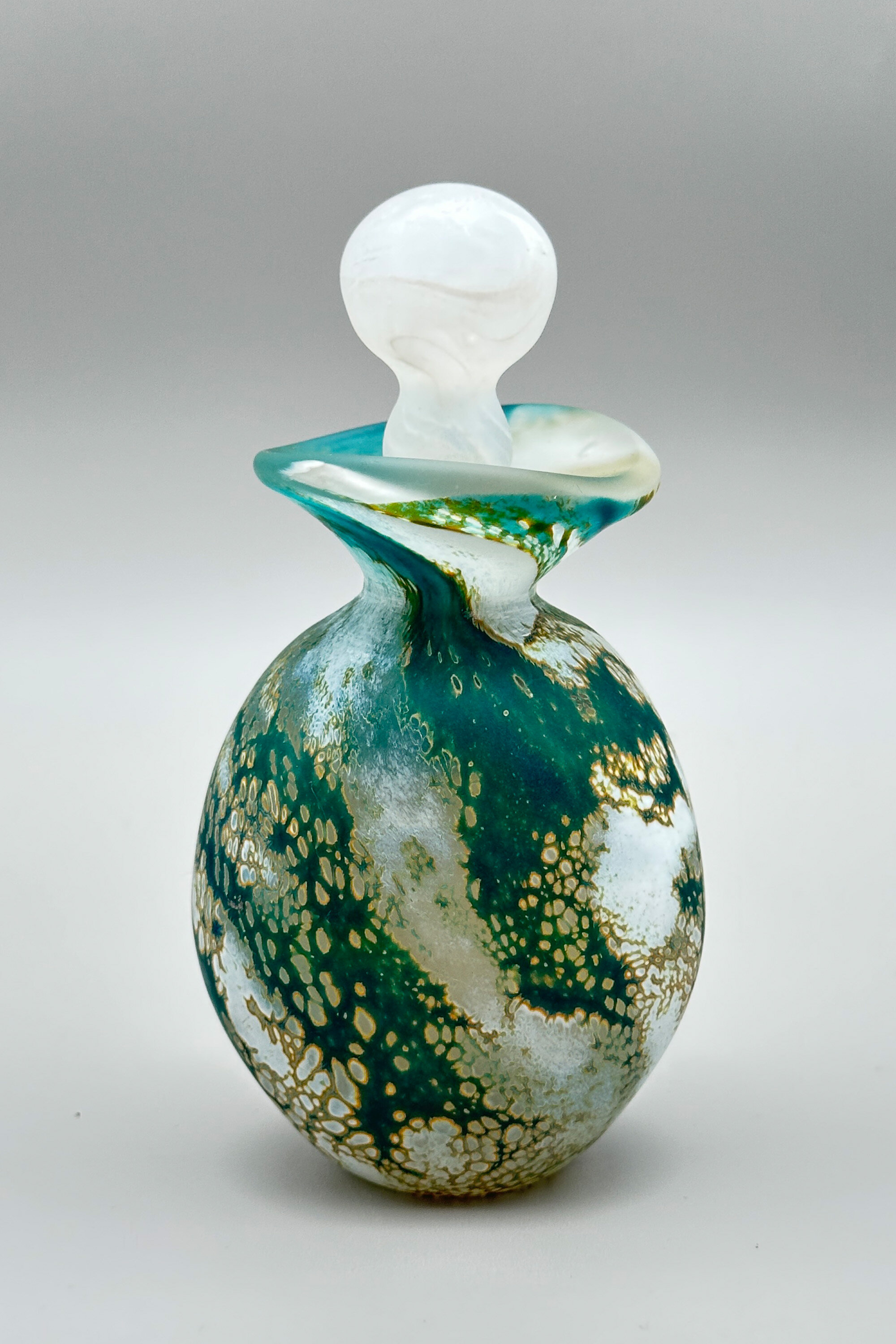
Wylde Green Perfume Bottle, Lesley Ann Clarke Glass, signed and dated 2019
Estimate: £40 – 60
Art Deco Islamic silver bracelet with inset stones
Price: £195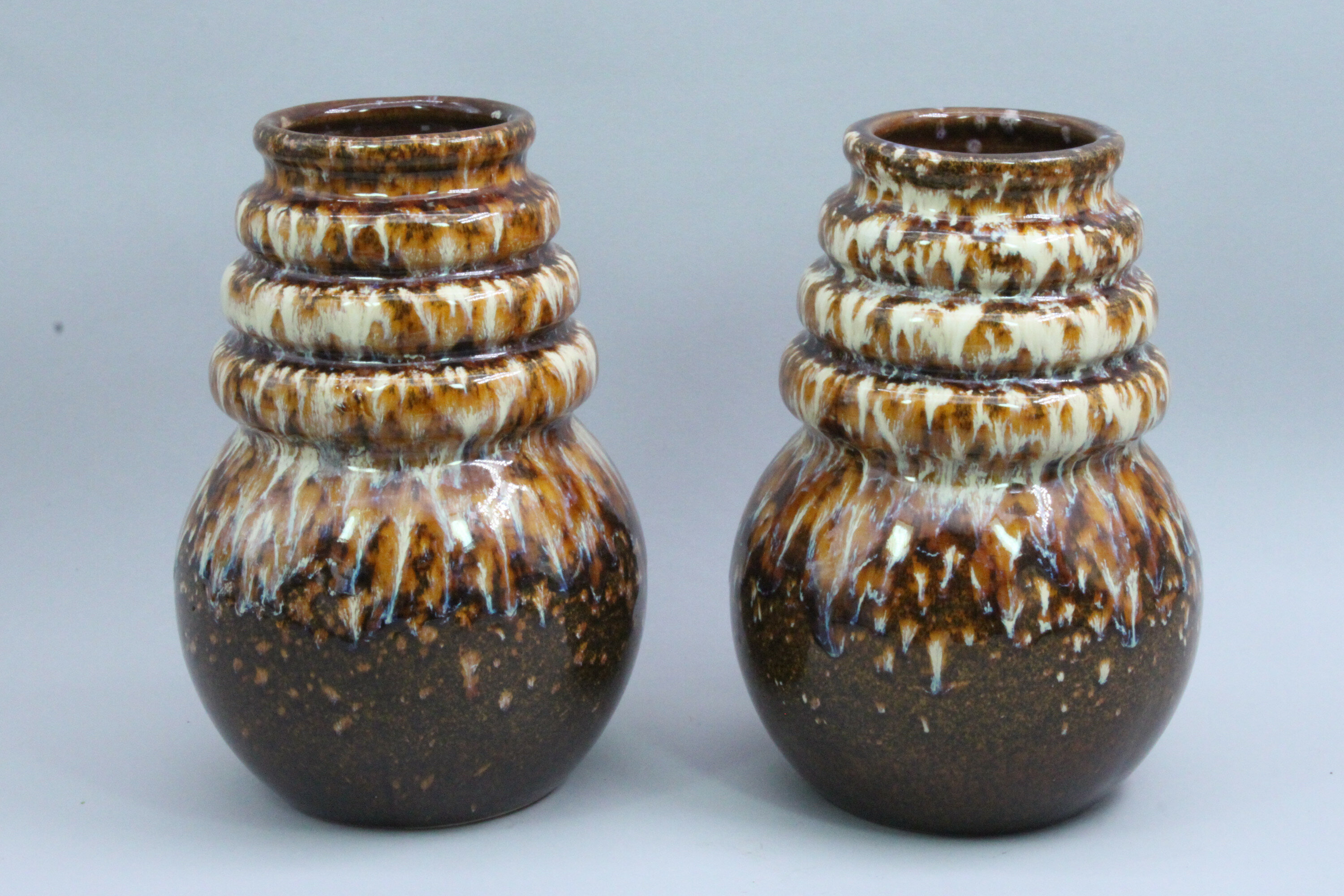
Pair of West German Scheurich Pottery ‘Wien’ Vases, model 269-18, mid 20th Century
Price: £45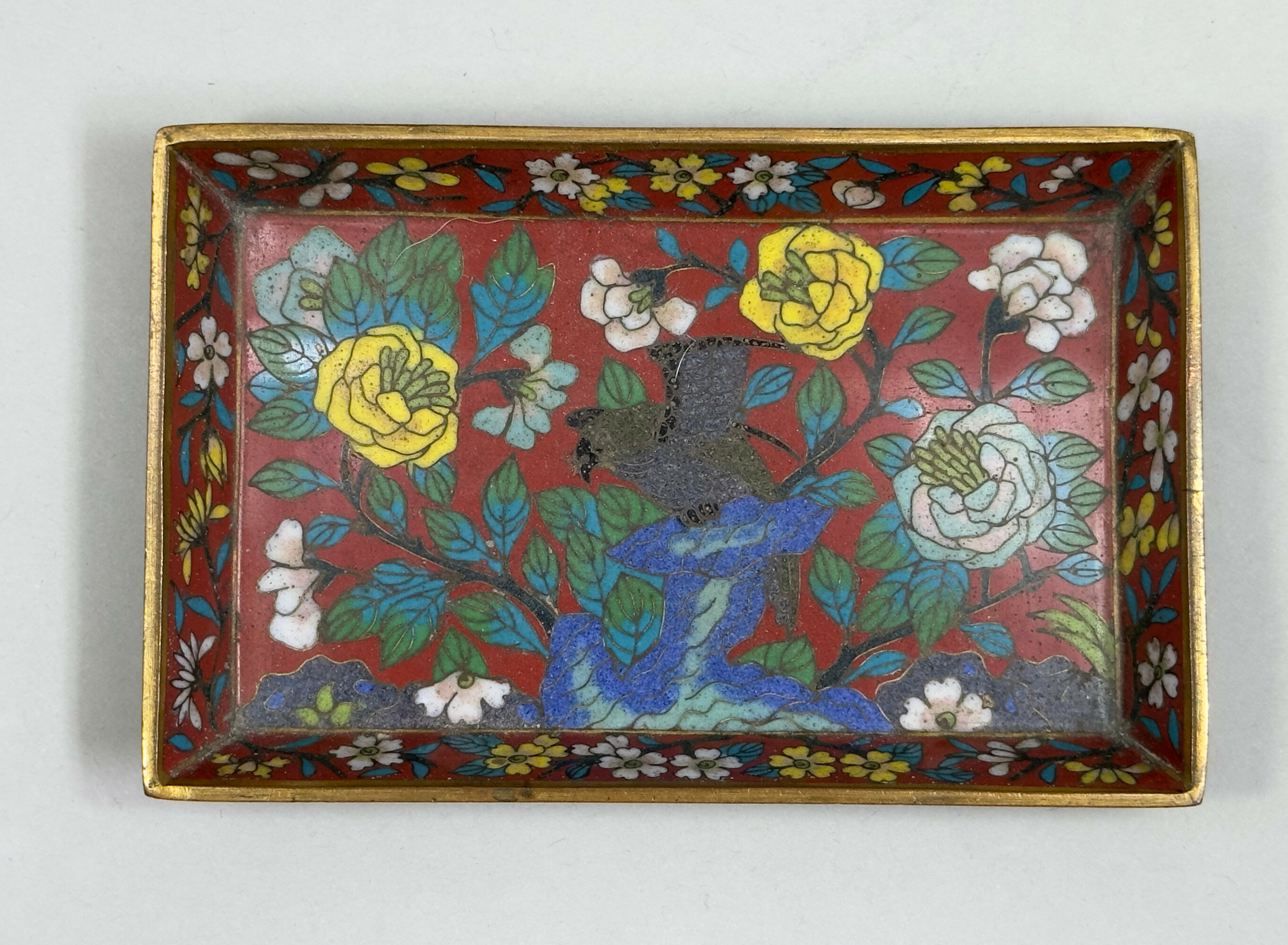
Chinese Cloisonne Small Tray decorated with Flowers and Rocks, 19th Century
Price: £150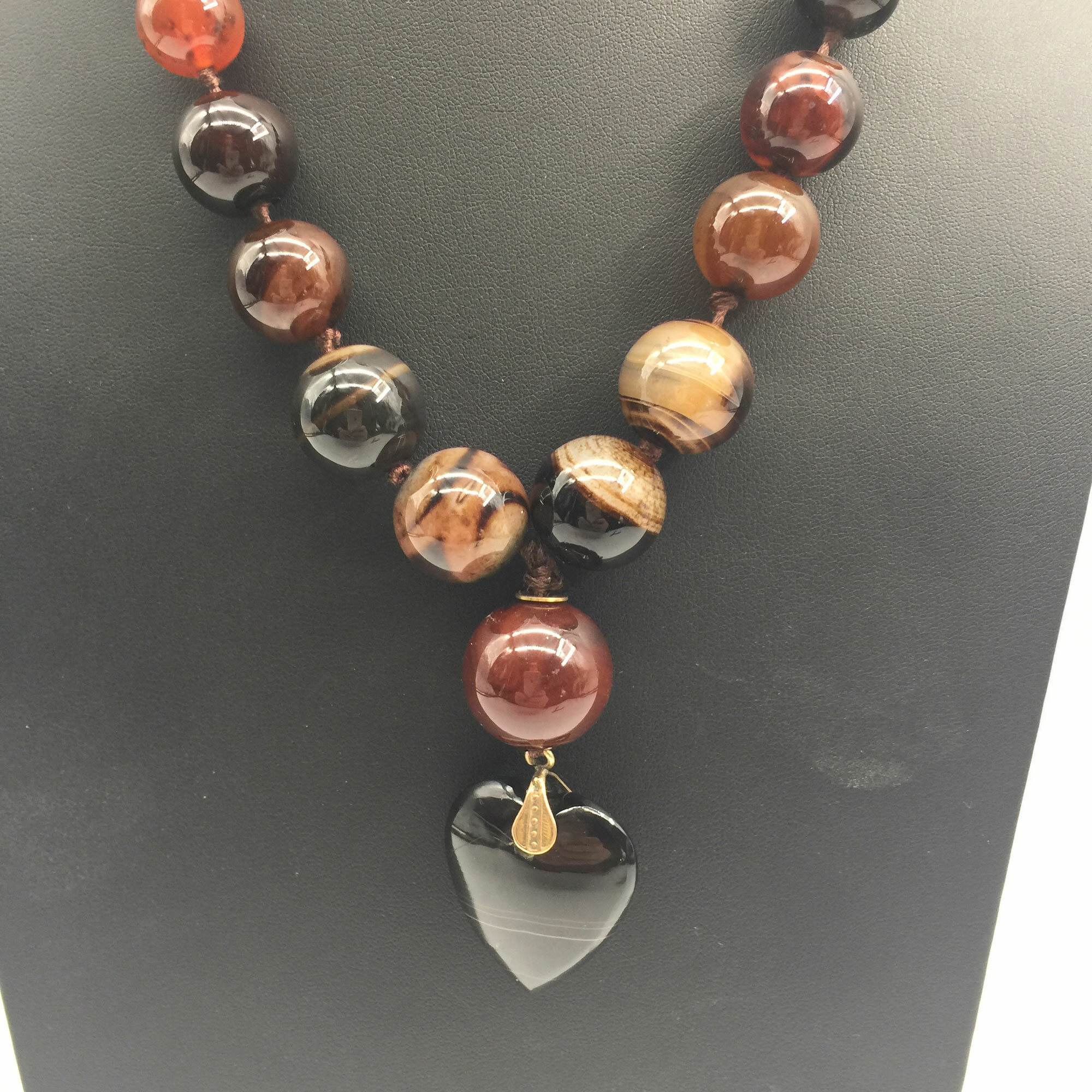
Stunning Victorian Scottish agate necklace
Price: £175
Stunning Amber and Islamic silver necklace
Price: £45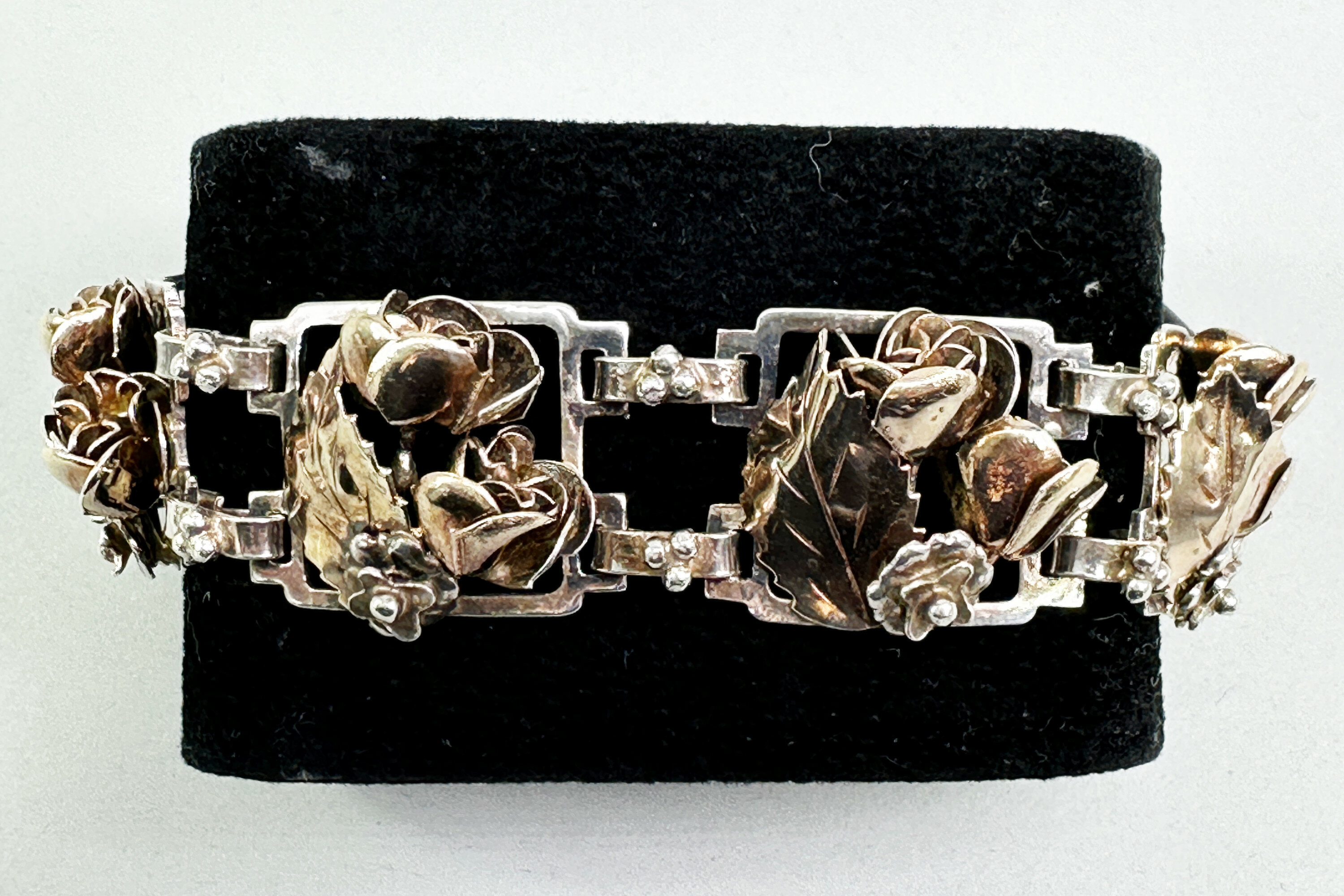
Vintage Hobe 14k gold plated sterling silver bracelet, 1940s
Price: £150Hobe was founded in 1887 by the French goldsmith Jacques Hobe as makers of fine jewellery. The costume jewellery division, Hobe Cie, was added 40 years later by his son, William Hobe, who brought the firm to America in 1927 and was commissioned by Flo Ziegfeld to design and manufacture jewellery for his Ziegfeld Follies costumes. By repute this is the origin of the expression costume jewellery. Production continued from the 1930s to the 1990s although there are a few later reproductions. While all their pieces were marked, dating is sometimes difficult but the floral design sterling silver pieces, one of their most collectible ranges now, date to the 1930s and 1940s and this bracelet, with the addition of the gold vermeil detail probably belongs to the latter period of this group. Its opulent and florid design is typical of Hobe’s work making it a stylish addition to a collection of their pieces. Other examples of their work can be seen elsewhere on this site and in this sale.

Fun lot of two Indian silver elephant brooches c1930
Price: £45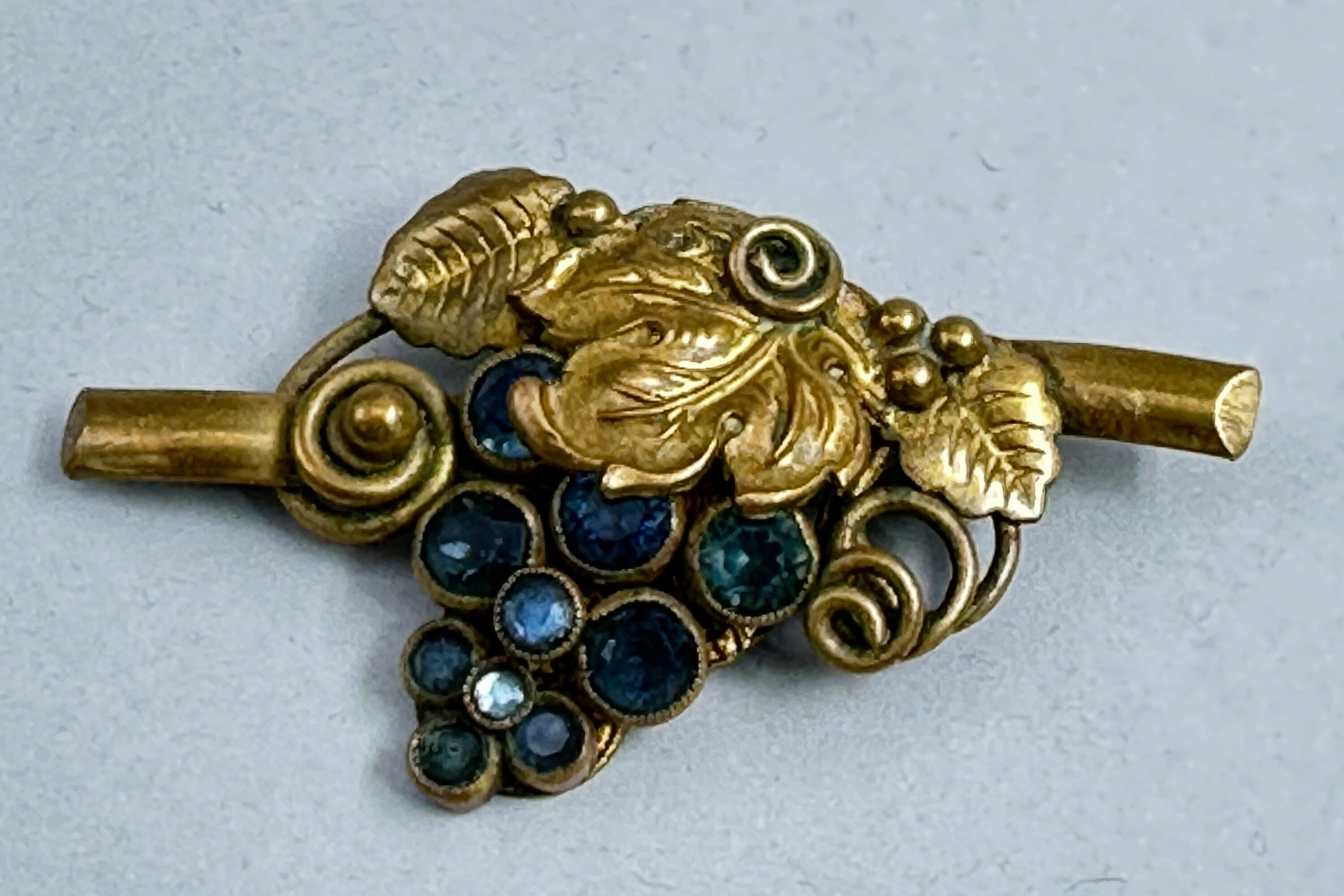
Rare early Czech glass brooch c1920
Price: £65
Vintage Carved wood bust of a Lady, Bali, Indonesia, second half C20th
Price: £75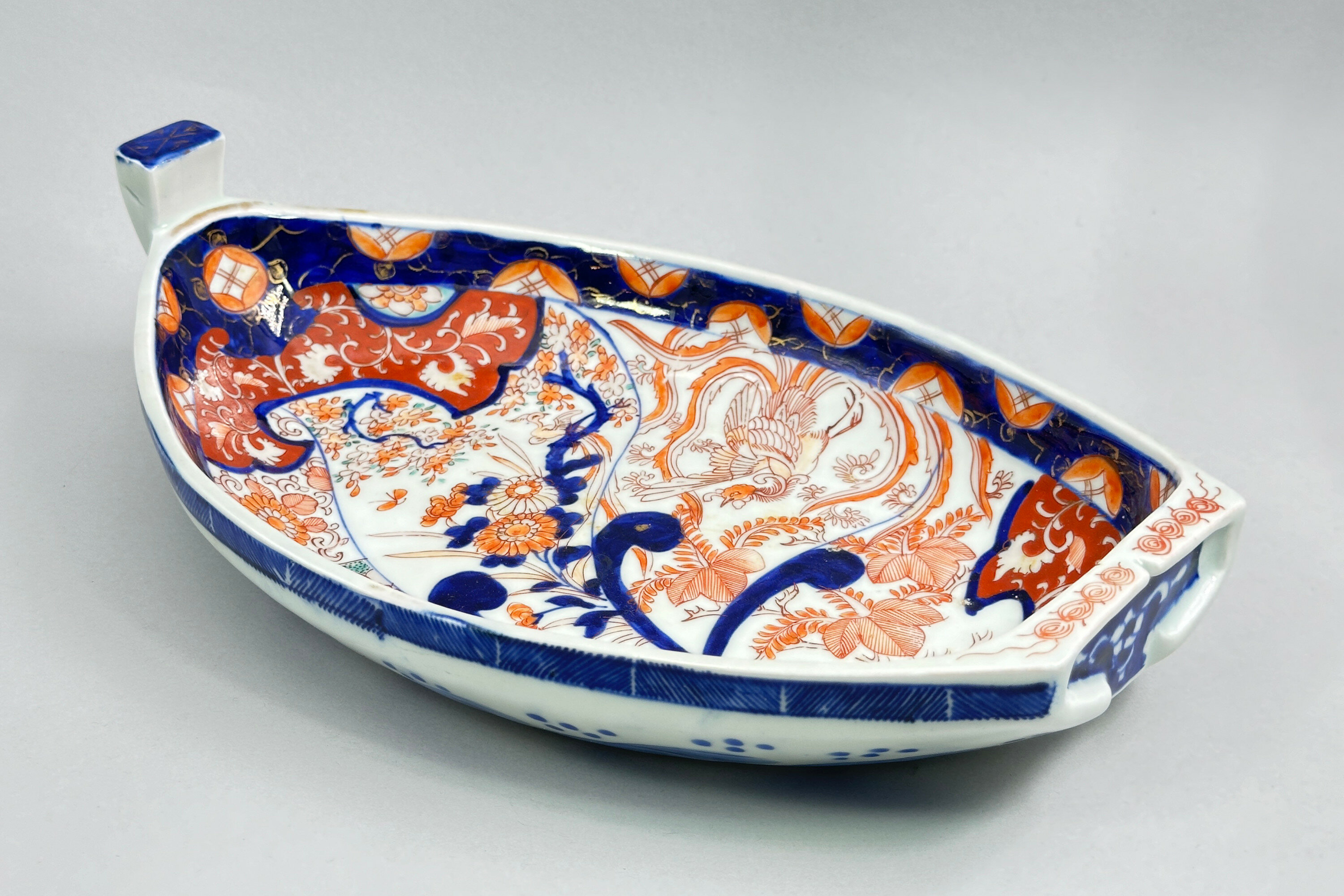
Japanese Imari Dish in the form of a Treasure Boat ‘Takarabune’, Meiji Period, circa 1900
Price: £250In Japanese folklore, the Takarabune or "Treasure Ship", is a mythical ship piloted through the heavens by the Seven Lucky Gods during the first three days of the New Year. Ceramic boat shape dishes were produced during the Meiji period (1868-1912) in both Arita and Imari porcelains. Paste of the foot rim and style of decoration suggest a circa date here towards the end of the nineteenth century.
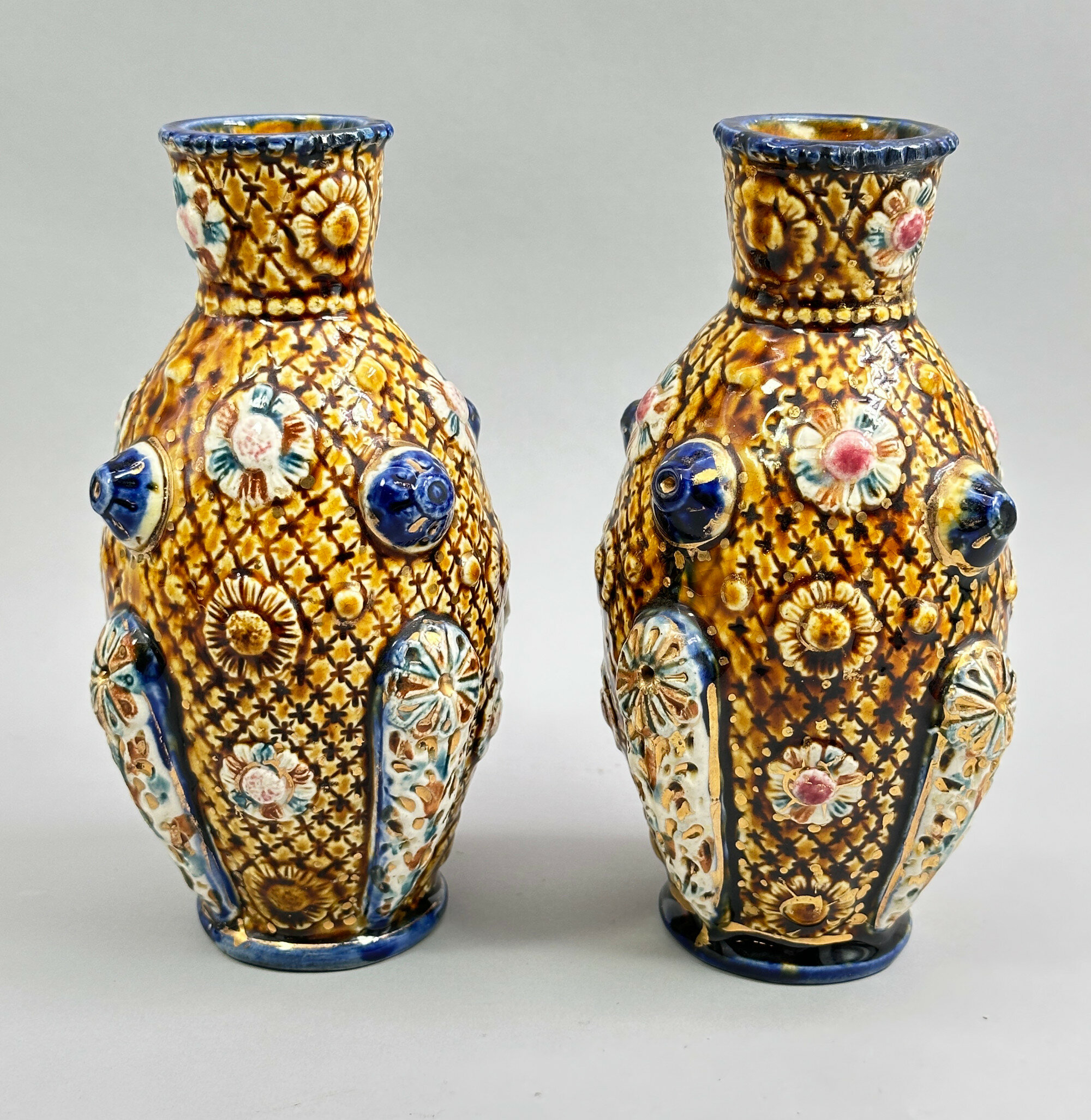
Pair of Alhambrian Ware English Majolica Vases with raised decoration circa 1880
Price: £30
Pair of Japanese Prints, C20th
Price: £25PLEASE NOTE THAT THERE IS FREE UK SHIPPING ON THIS ITEM. For international buyers the shipping cost will be reduced by the UK shipping cost, so don't worry if you are outside the UK, you still receive this benefit!

Turquoise Native American Cuff Bracelet, 1960s
Price: £95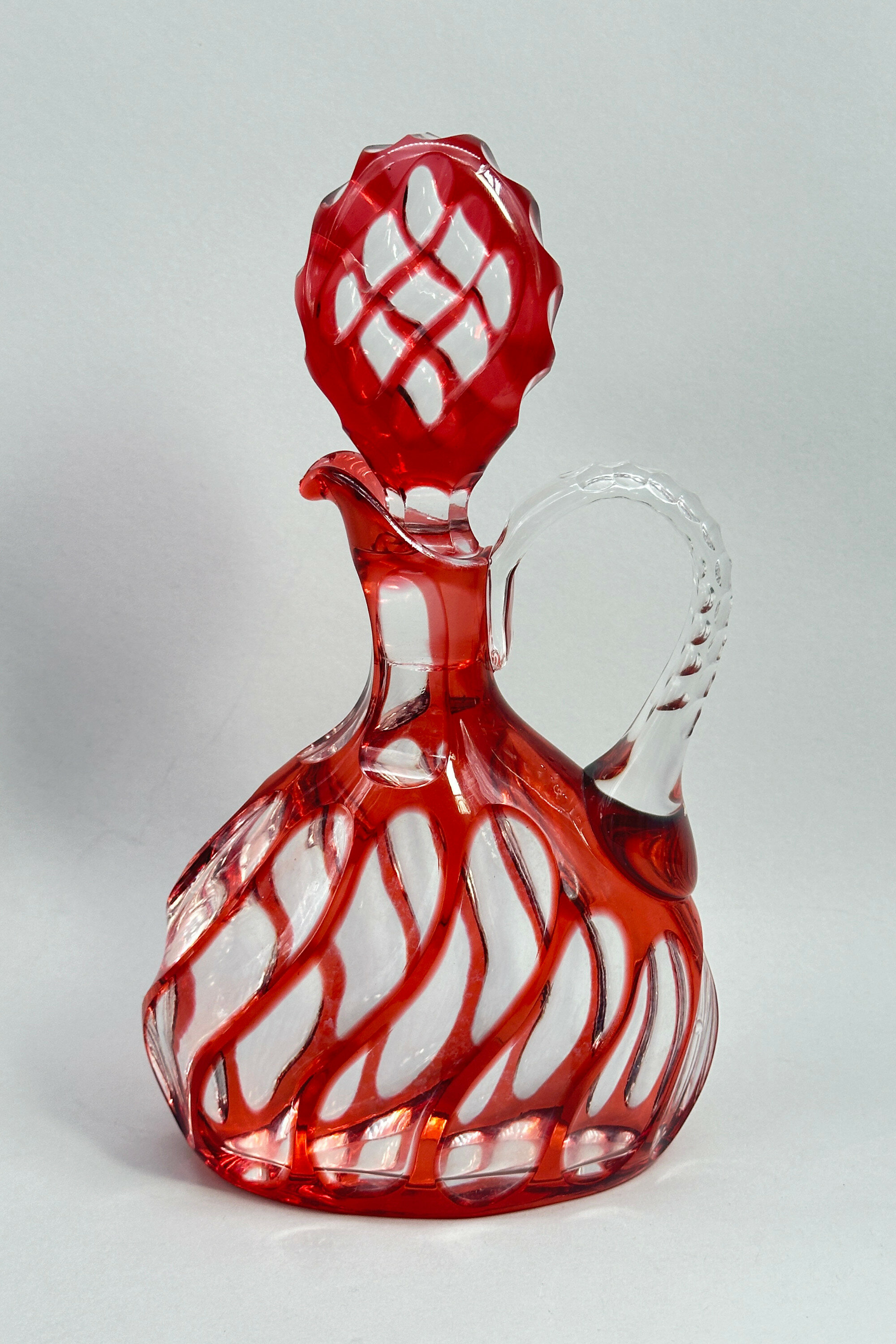
Swirl design Cranberry glass Decanter and Stopper, probably Italian mid C20th
Price: £45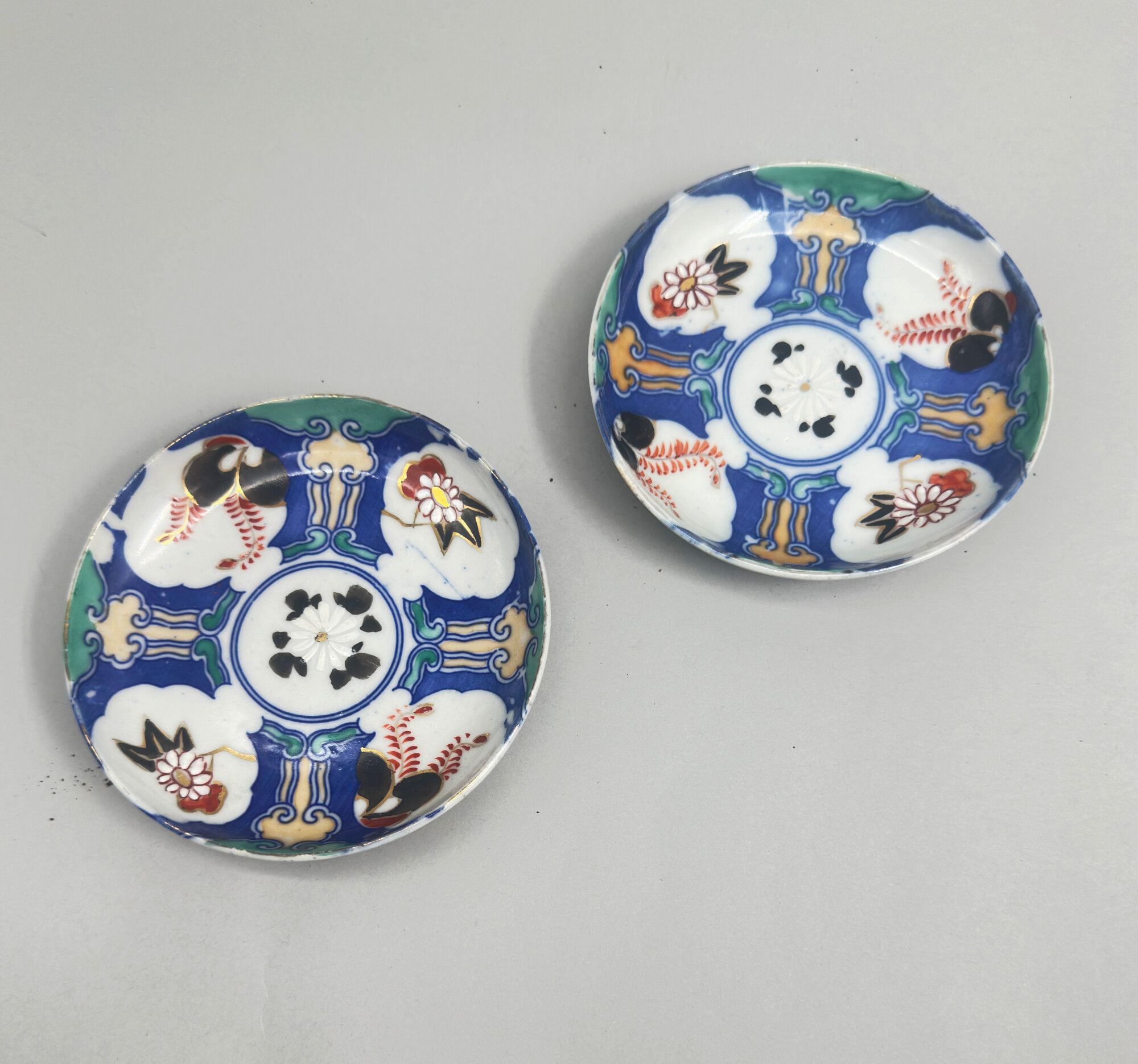
Pair of Japanese Arita small Dishes circa 1880
Price: £40The town of Arita in the former Hizen Province, northwestern Kyūshū island, was a major centre for the production of porcelains in Japan. Best known for blue and white pieces it also produced polychrome wares as well, including the familiar imari colourings. While similar to Imari, the wider palette of colours used here is usually termed ‘Arita’ and the decorative appeal of the style is clear. These bowls probably come from an original set of five and with slightly coarser decoration than usual were probably made for the domestic market. The paste of the foot implies a dating to the Meiji era (1868 - 1912) probably around 1880.
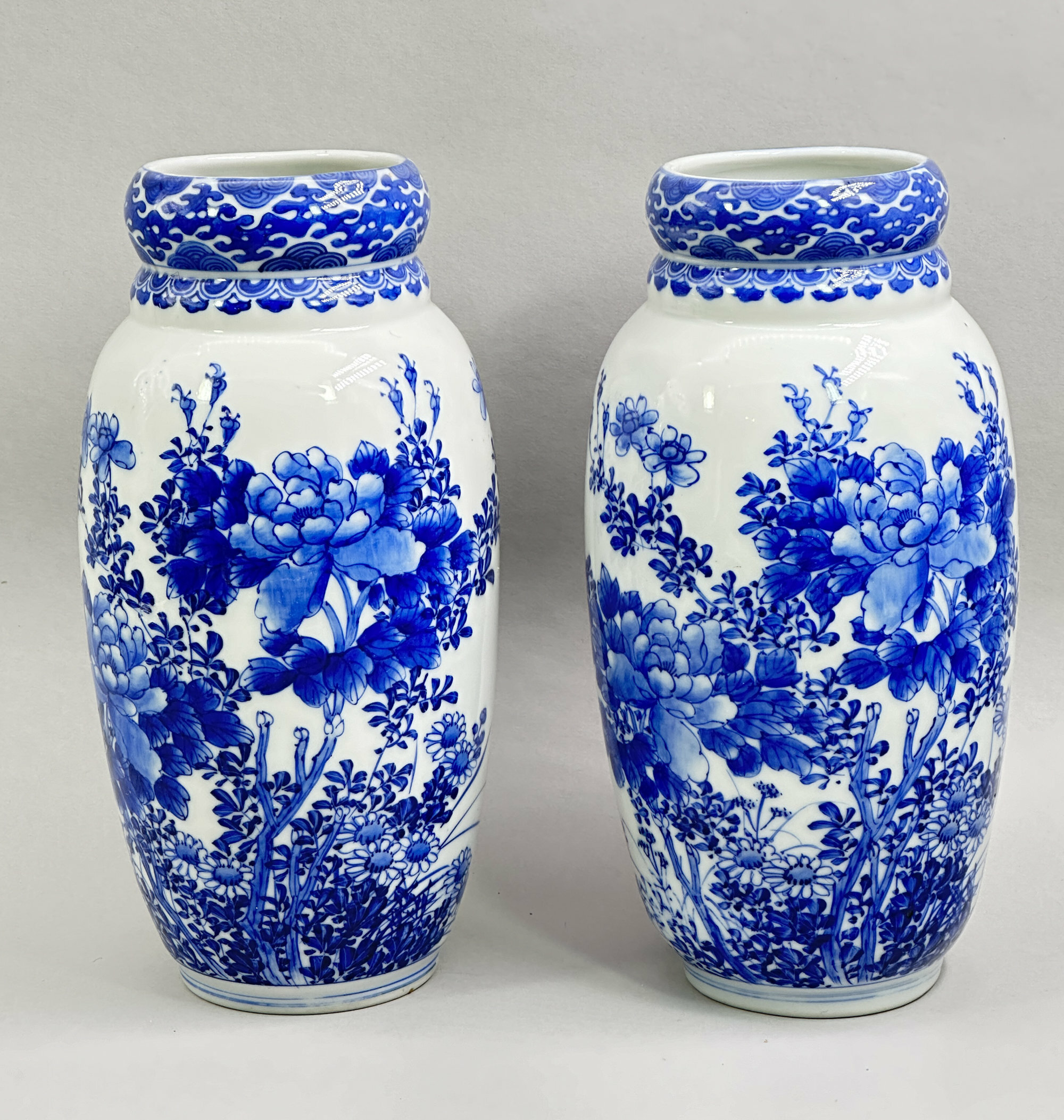
Pair of Japanese Blue and White Seto Ware Vases, early C20th
Price: £240The finely drawn brushwork here and the distinctive bright blue are characteristics of pieces made at Seto in Japan in the 19th and early 20th centuries. The city of Seto is located in the Aichi Prefecture and was the location of one of the Six Ancient Kilns of Japan. Pottery was produced there from the 13th century onwards. The kilns took part in the export of decorative wares to the West from the second half of the nineteenth century onwards producing a wide variety of forms, in particular pairs of vases, but with a speciality in flat plaques and table tops, for which they gained something of a monopoly. Their pieces are usually marked, to include the characters for Seto, and this pair of vases may have originally been signed themselves but with the marks partially obliterated in the firing process. The quality here matches anything else produced by the factories but the light weight and thinly potted body suggests a dating to the early 20th century rather than before, probably during the Taisho period (1912-1926). Nevertheless the skill in craftsmanship is obvious and contributes to a highly attractive pair of ornaments for a contemporary interior.

Pair of slender green glass Vases with silver decoration, possibly French early C20th
Price: £45
Miniature Staffordshire flatback model of two spaniels and a barrel, second half C19th
Price: £55
Jade roundel bead necklace
Price: £15
Antqiue Scottish agate specimen brooch/pendant
Price: £55
Victorian Scottish agate brooch
Price: £65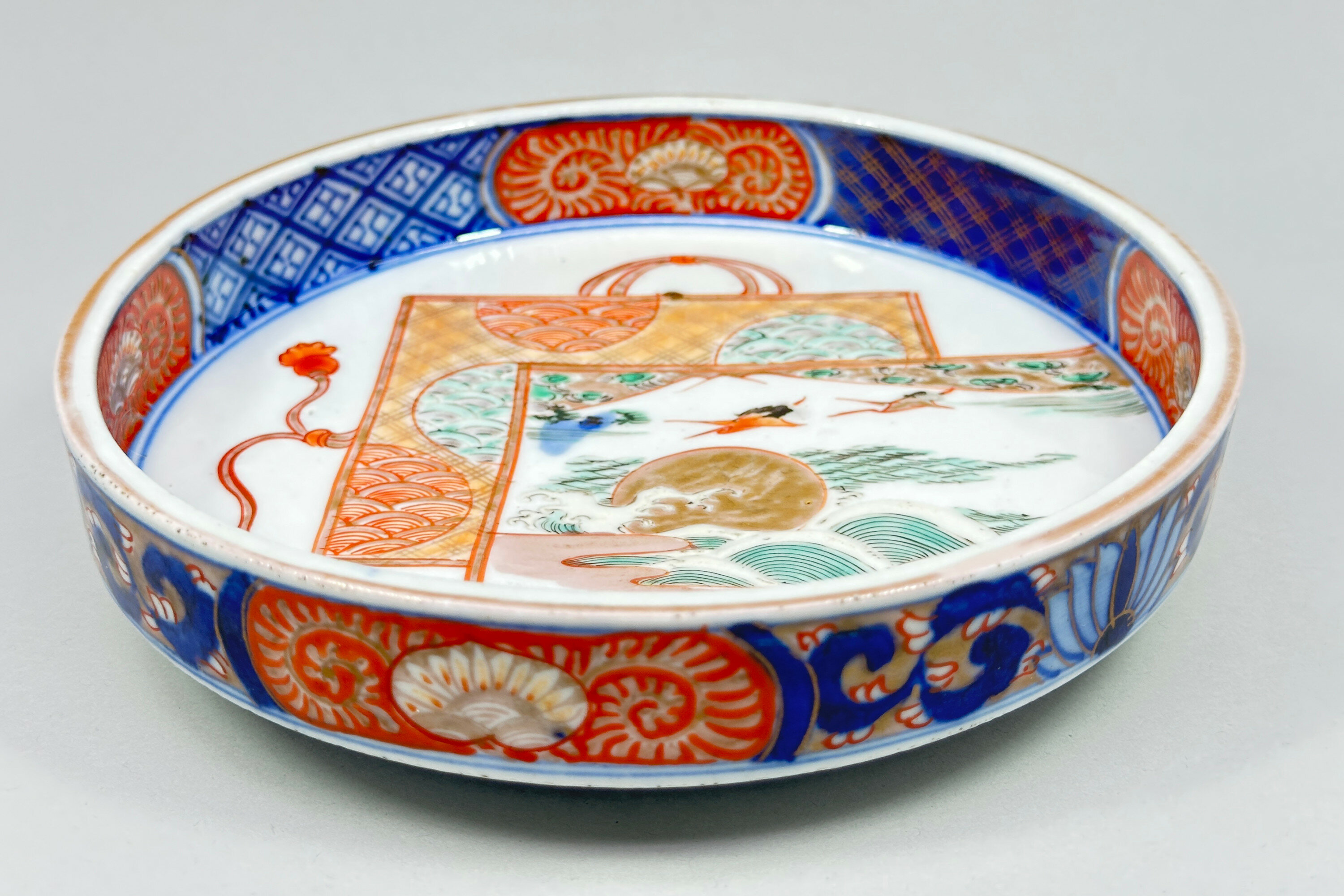
Japanese Arita shallow Bowl circa 1880
Price: £55The town of Arita in the former Hizen Province, northwestern Kyūshū island, was a major centre for the production of porcelains in Japan. Best known for blue and white pieces it also produced polychrome wares as well, including the familiar Imari colourings. While similar to Imari, the wider palette of colours used here is usually termed ‘Arita’ and this bowl employs not only the colourings but also many of the decorative elements found in these wares. The angular form, though, is unusual. Dating is to the Meiji era (1868-1912) probably around 1880.
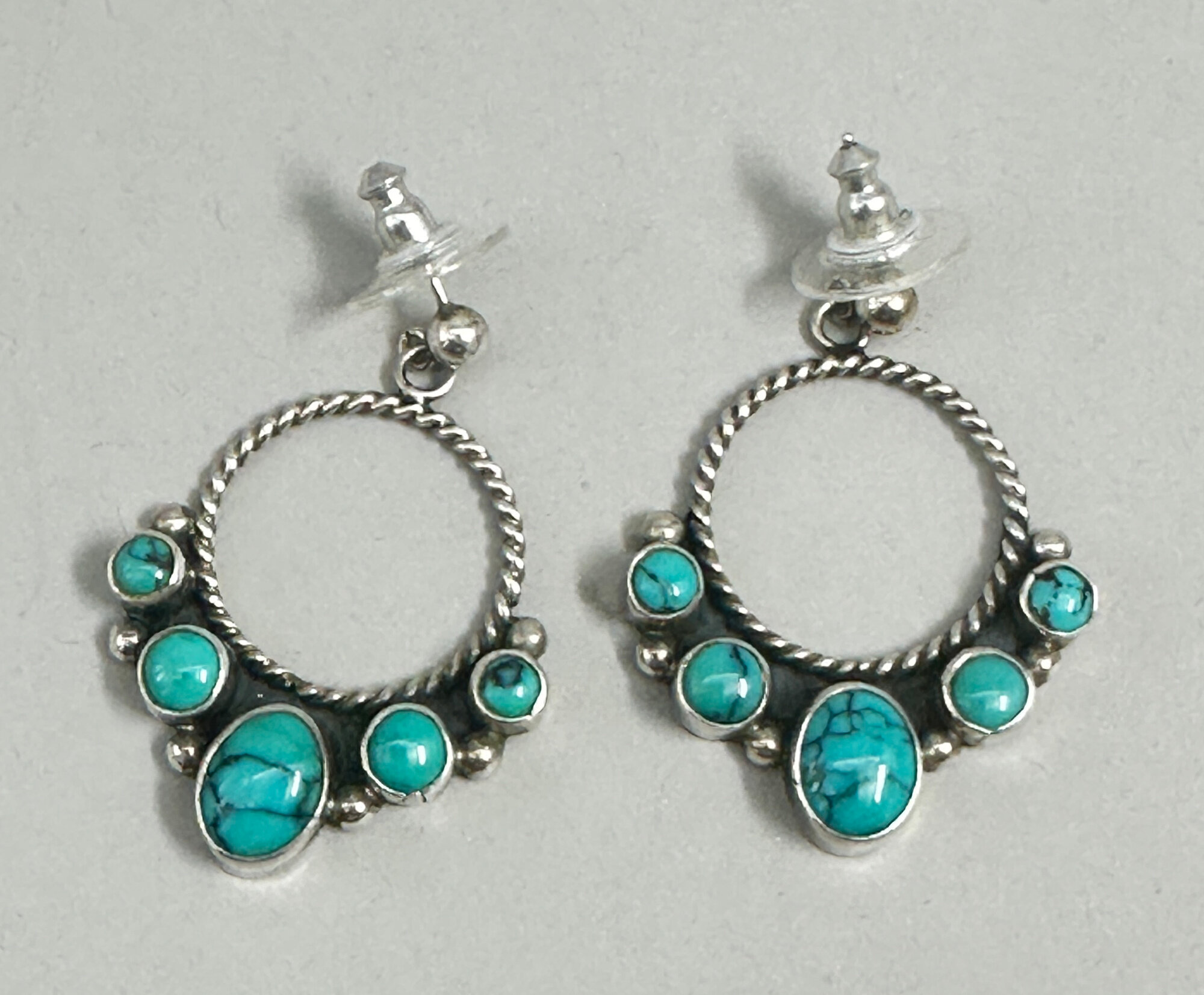
Pair of Navajo Kingman turquiose earrings, signed, 1970s
Price: £65
West German Vase, Model No 517-38, Scheurich, 1960s
Price: £55Although not marked as such, this vase has all the hallmarks of the firm Scheurich Keramik which started production in 1954, rather later than most of its competitors, but soon became the largest producer of commercial art pottery in Germany. Their pieces rarely carried the factory name but usually the model number followed by the height in centimetres with ‘W.Germany’ below, as here. Model ‘517’ can be found in a variety of different glazes but the pattern and colourings here, more muted than some of Sheurich’s work and with a matt finish, are particularly pleasing and complement the elegant form most successfully. Dating is to the 1960s.
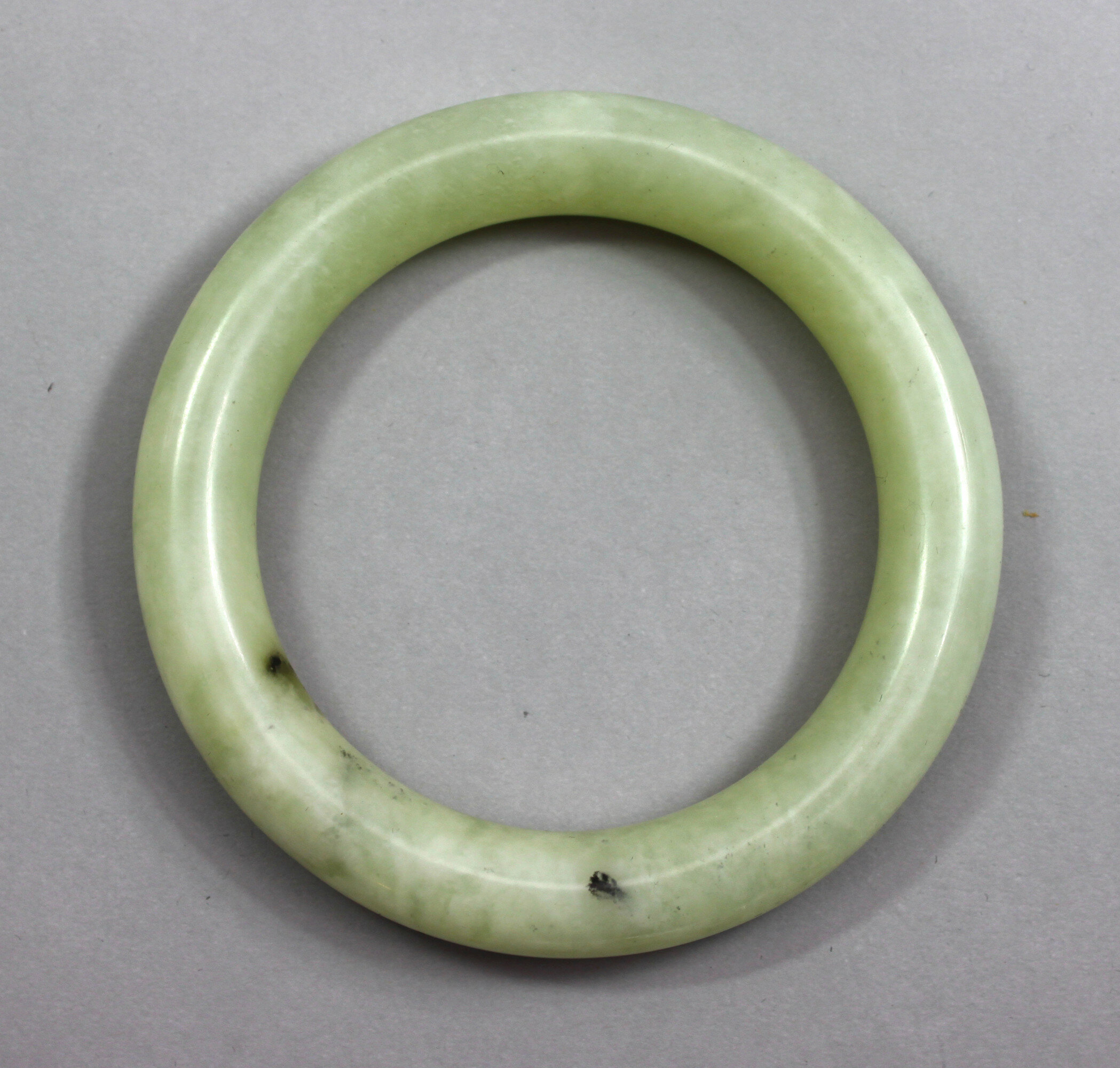
Chinese Pale Celadon Jade Bangle, probably Nineteenth Century
Price: £45Jade is usually divided into two types, nephrite jade and jadeite jade. The latter is heavier and slightly harder, making it more difficult to scratch. The weight of this piece suggests that we do have jadeite here. The stone was selected for carving on the basis of its attractive appearance and the finish, which bears no trace of machine tooled manufacture, suggests a pre twentieth century dating, but certainty in these matters is notoriously difficult
The size of this piece is unusually large, suggesting that it would have been intended for a male wearer. This too suggests an earlier rather than later time of manufacture. The stone is exceptionally pleasant to the hand and would have been an elegant accompaniment to any wardrobe.

Constructed necklace with jade, egg yolk amber and cherry amber
Price: £250
Three Chinese Canton Enamel Dishes, Nineteenth Century
Price: £45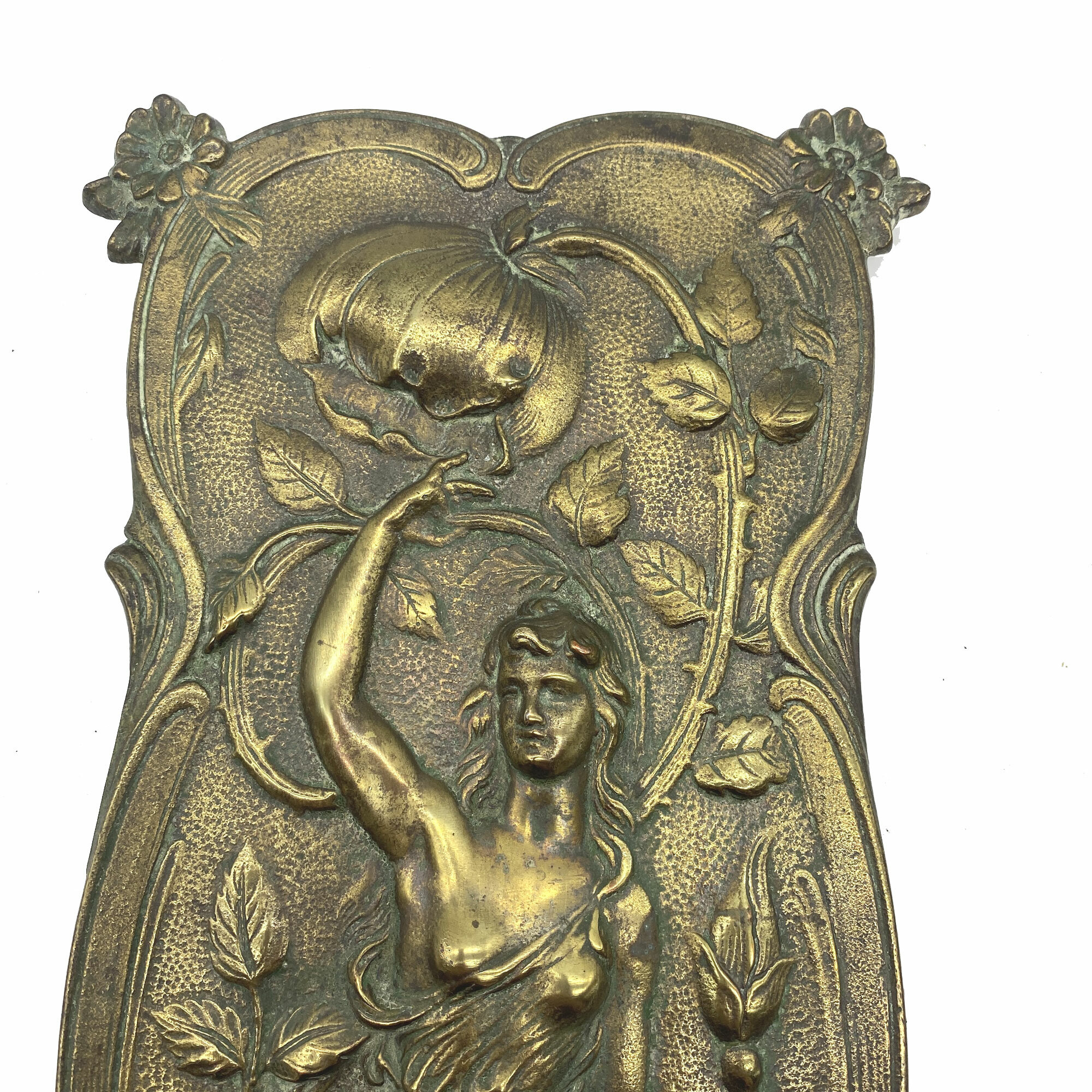
Art Nouveau Bronze Plaque c.1900
Price: £75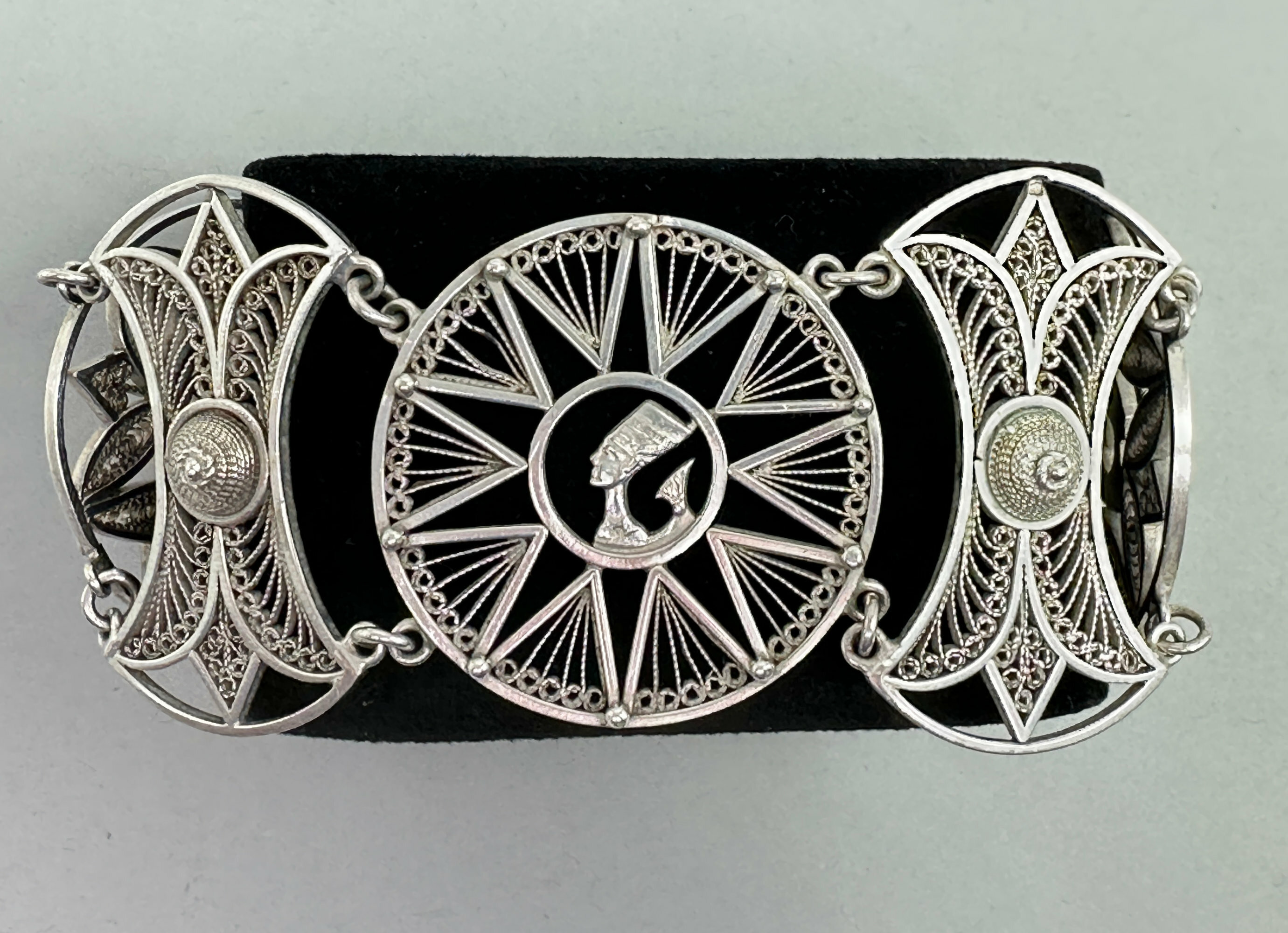
Egyptian Revival filigree cuff bracelet 1930s
Price: £95
Continental Figure of a Cellist, Conta and Bohme, Germany late C19th
Price: £55
Japanese Arita Blue and White Bowl, first half C20th
Price: £25This ‘swirling’ pattern is sometimes found on late nineteenth century polychrome plaques. Dating here is probably later, perhaps to around 1920, in the middle of the Taisho period (1912 – 1926), but care has been taken with this piece and the mark, which unfortunately cannot be deciphered, no doubt denotes the studio which created it.
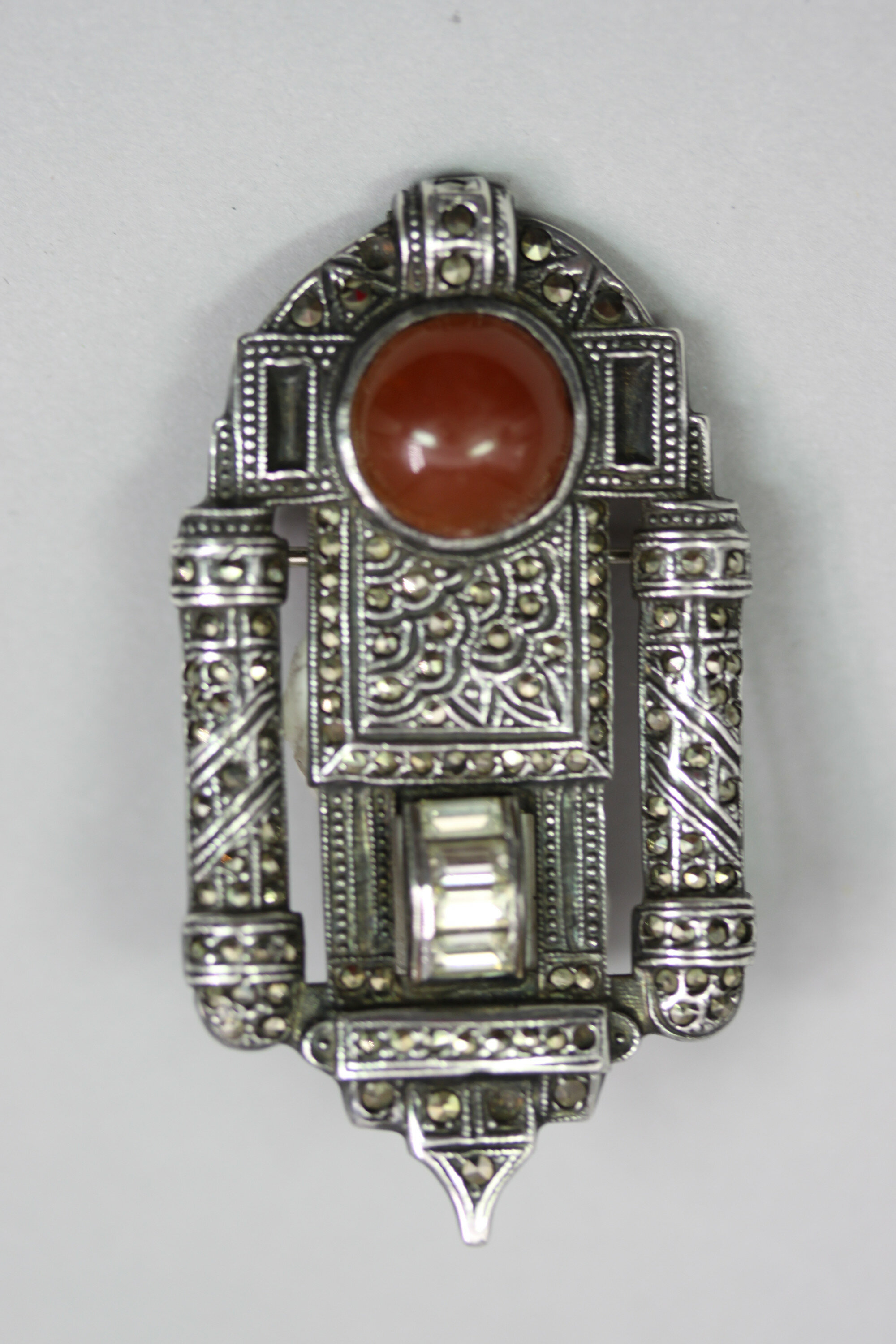
American Art Deco silver and marcasite brooch
Price: £35
Paris tourist novelty bracelet c1950
Price: £35
Tibetan turquoise and silver necklace 1930s
Price: £45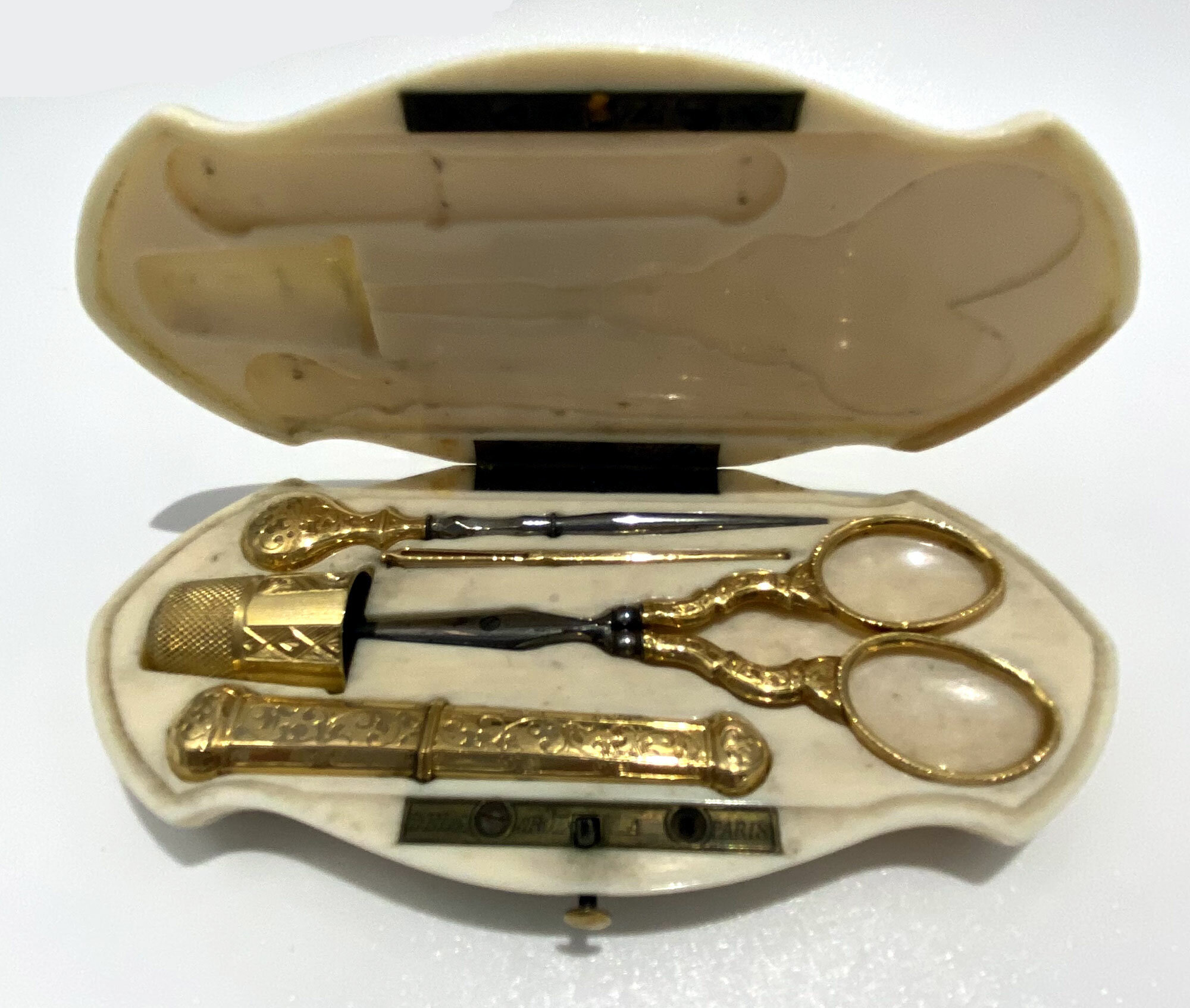
Set of 5 matching 18ct gold sewing tools in fitted case, August Boileau, French c.1850
Estimate: £100 – 200
Stunning Art Deco onyx and rock crystal necklace
Price: £250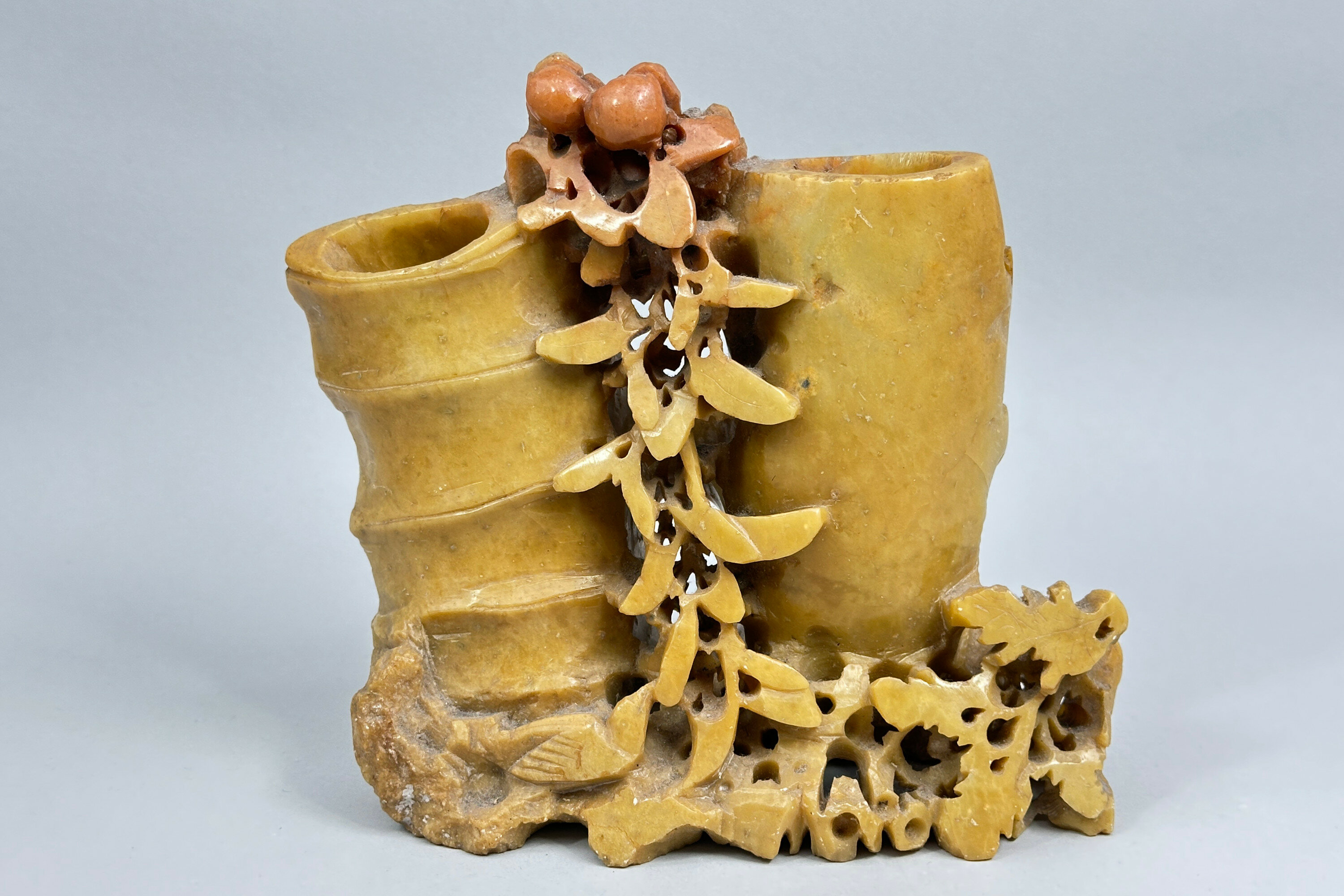
Chinese Soapstone Double Brushwasher, C20th
Price: £45
Stunning rope and tassel necklace, signed, c1990
Price: £45
Pair of chandelier silver earrings 20th century
Price: £35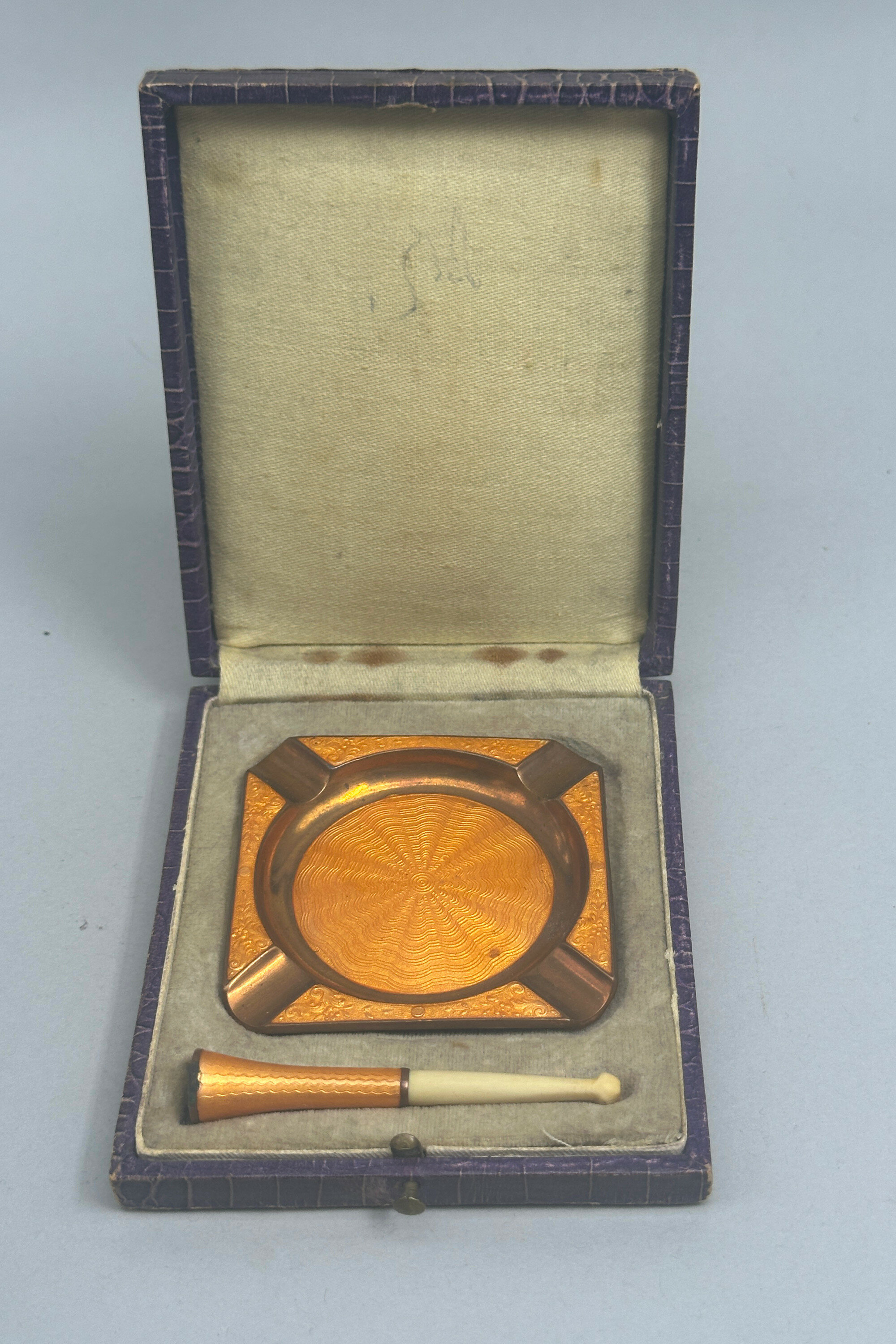
Art Deco Guilloché Copper Ash Tray and matching Cigarette Holder, boxed, c1930
Price: £35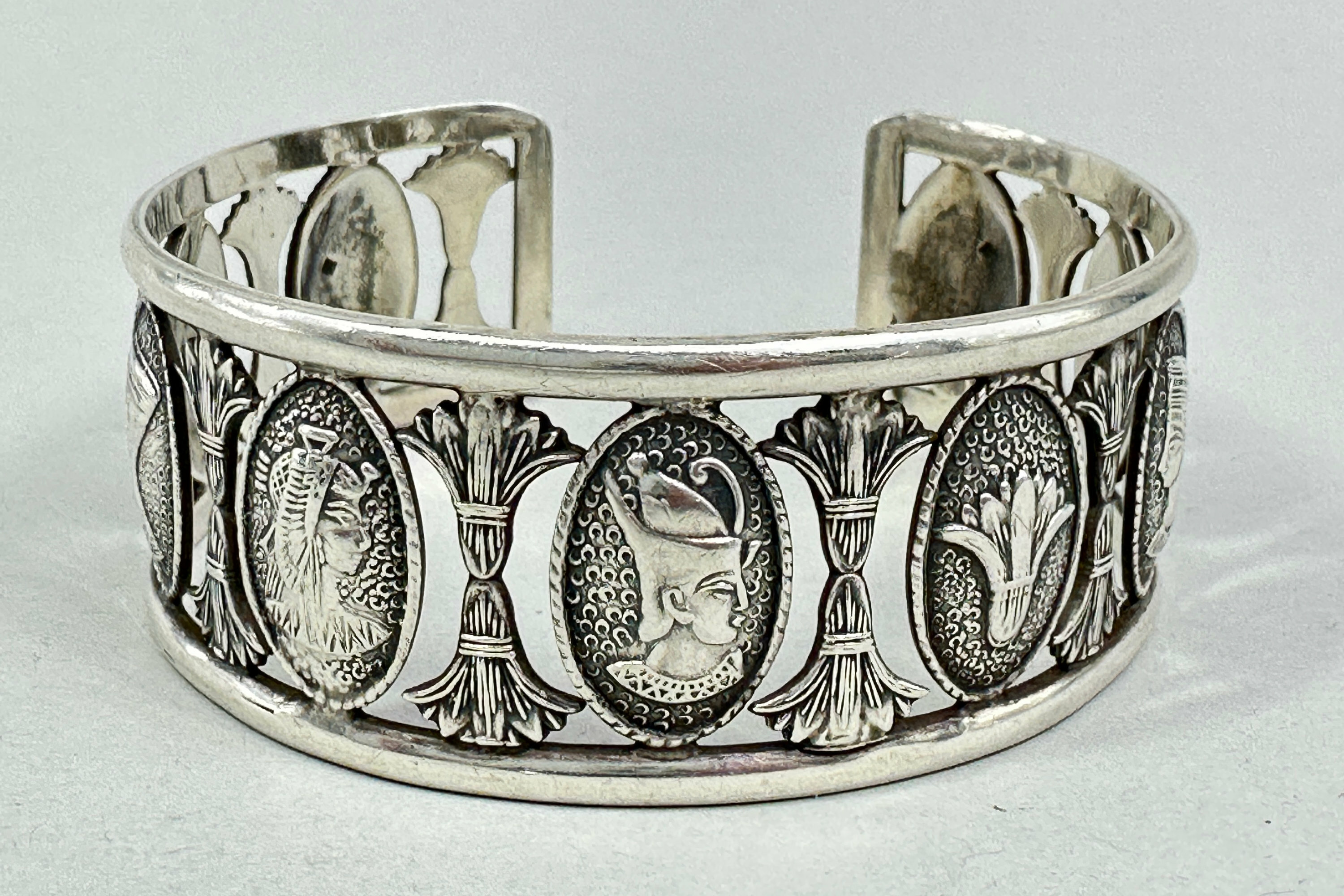
Egyptian silver cuff bangle with portait plaques of Pharoahs
Price: £85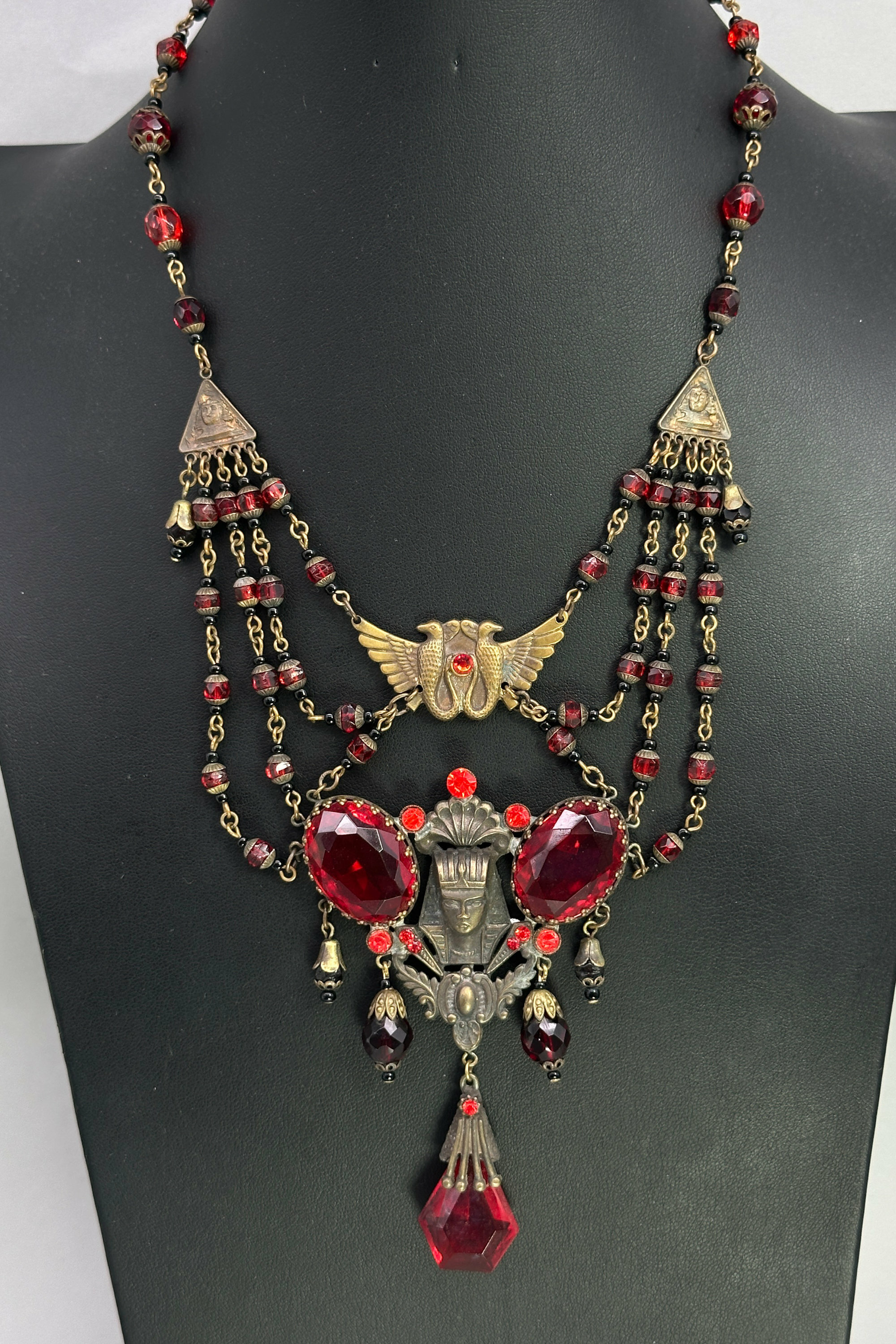
Early Egyptian Revival necklace with ruby glass stones c1900
Price: £175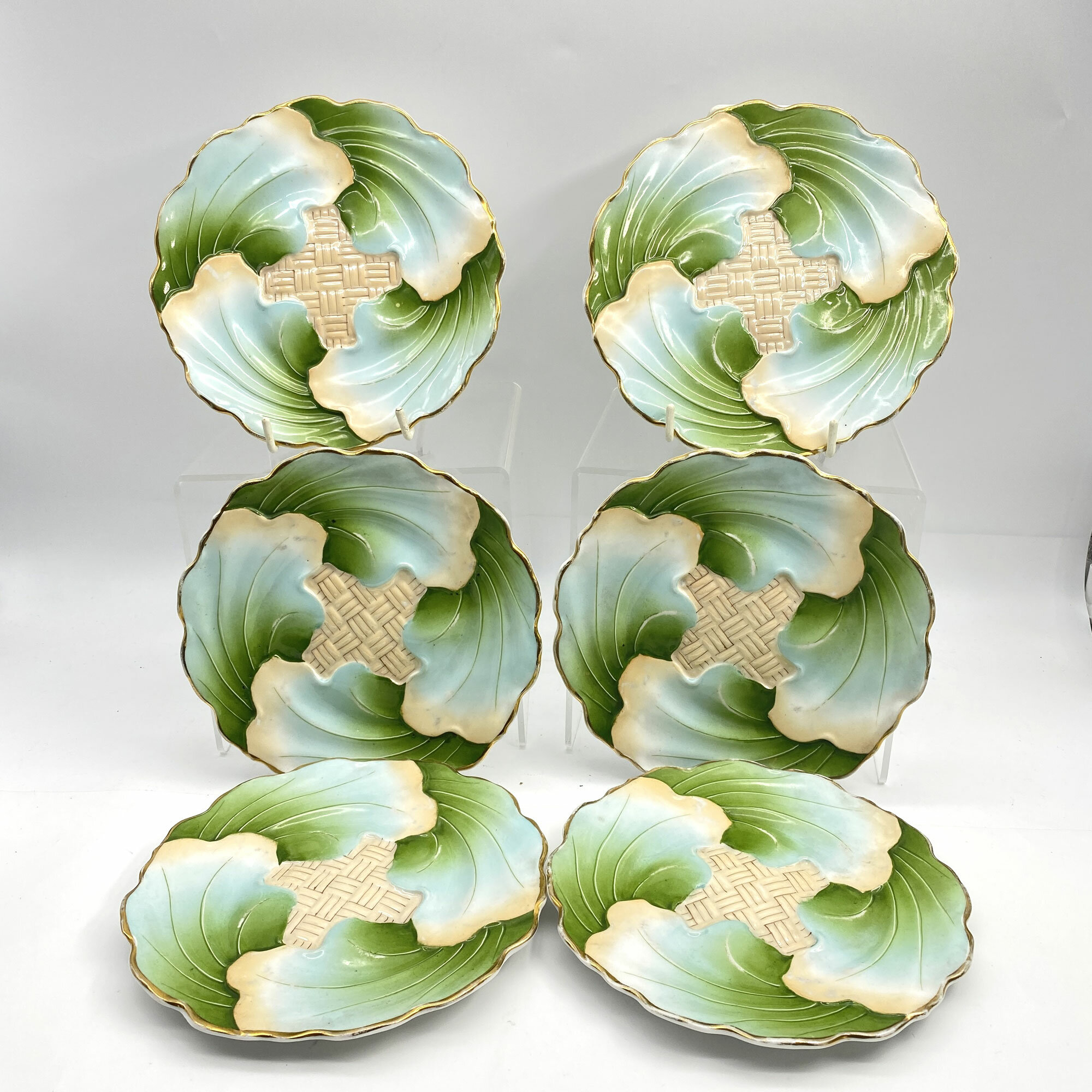
Set of 6 small Art Deco style plates by C.T. Altwasser, Silesia, 1920s/1930s
Price: £75

A Large Islamic Pewter Ewer, C20th
Price: £45
Two Corgi Silver Jubilee Toys Boxed, (41) State Landau, (417) London Bus, 1977
Price: £45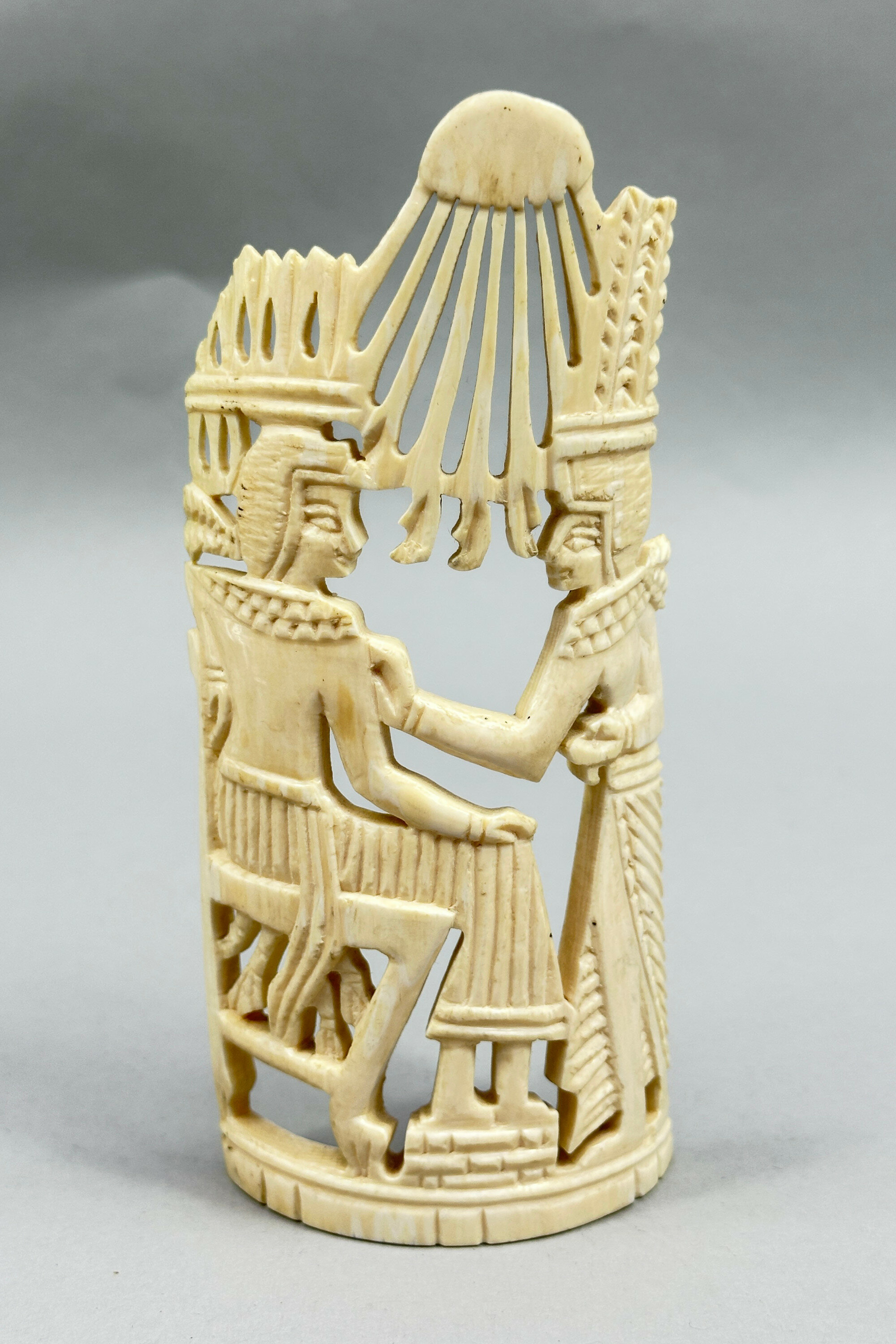
Egyptian table decoration depicting a Pharoah and Attendant, c1940
Price: £45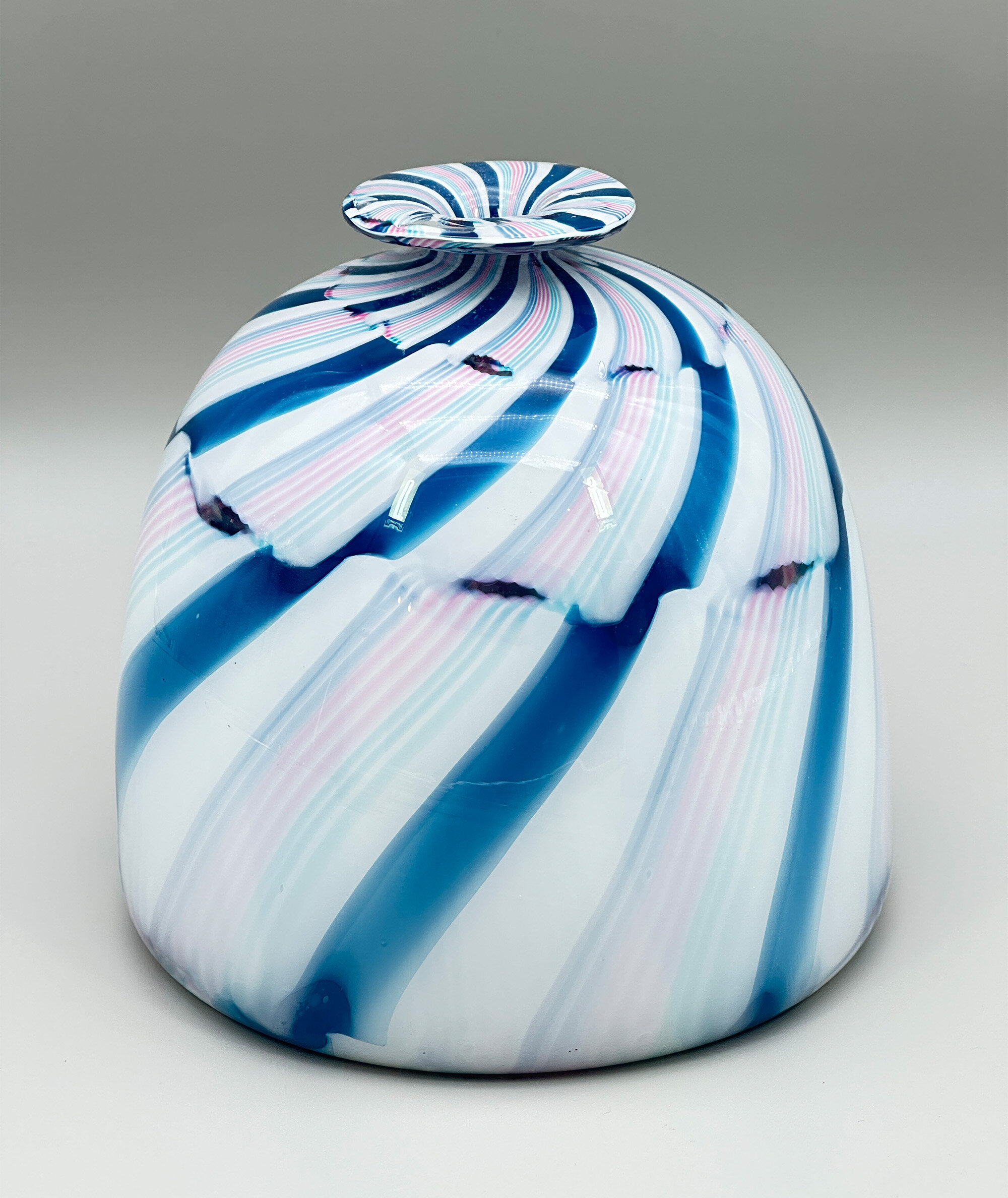
Beehive form glass vase with a swirl design, probably by Charlie Meaker, late C20th
Estimate: £60 – 80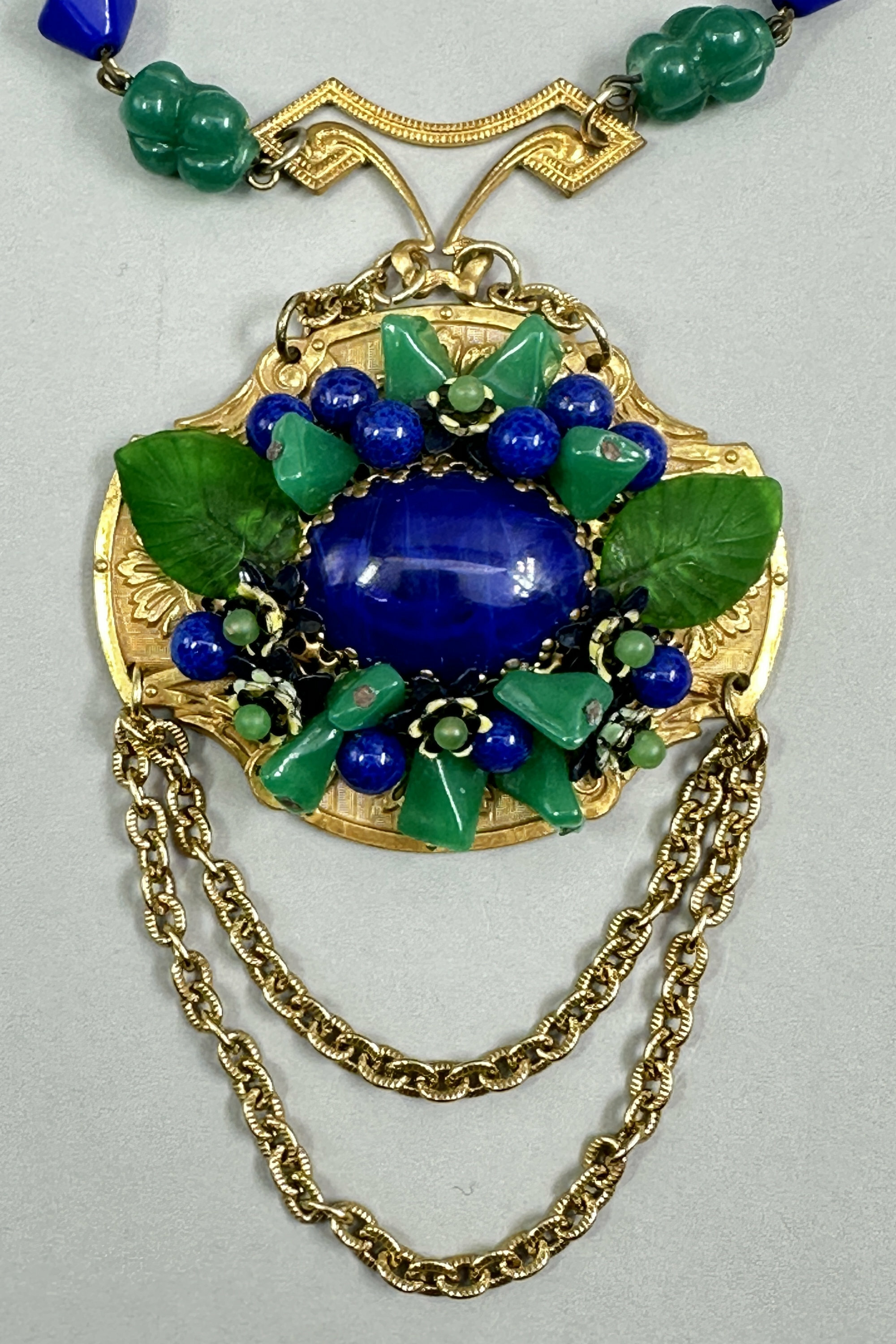
Regency style statement necklace c1950
Price: £125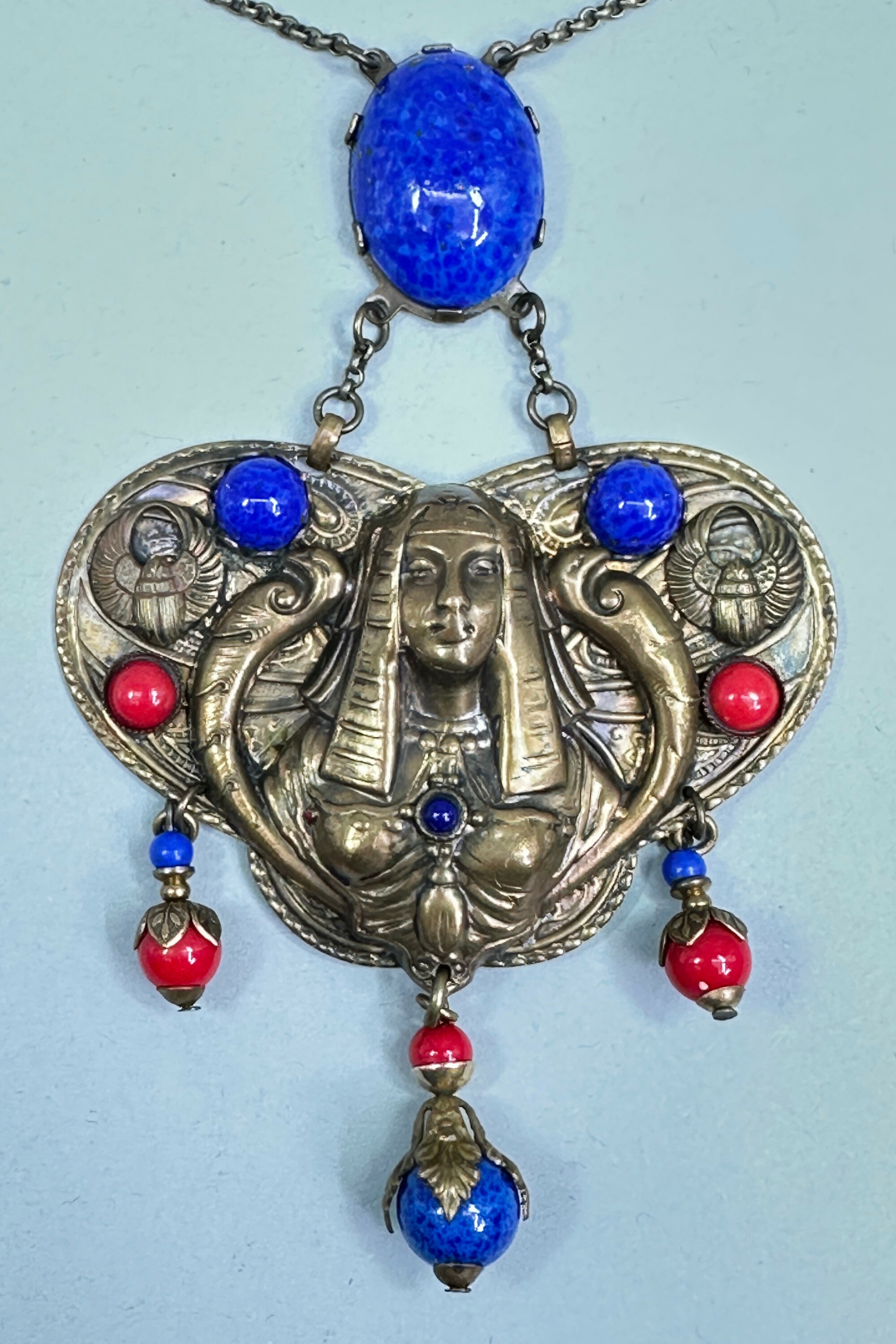
Czech Egyptian Revival Necklace with glass mounts and drops, Edwardian circa 1910
Price: £150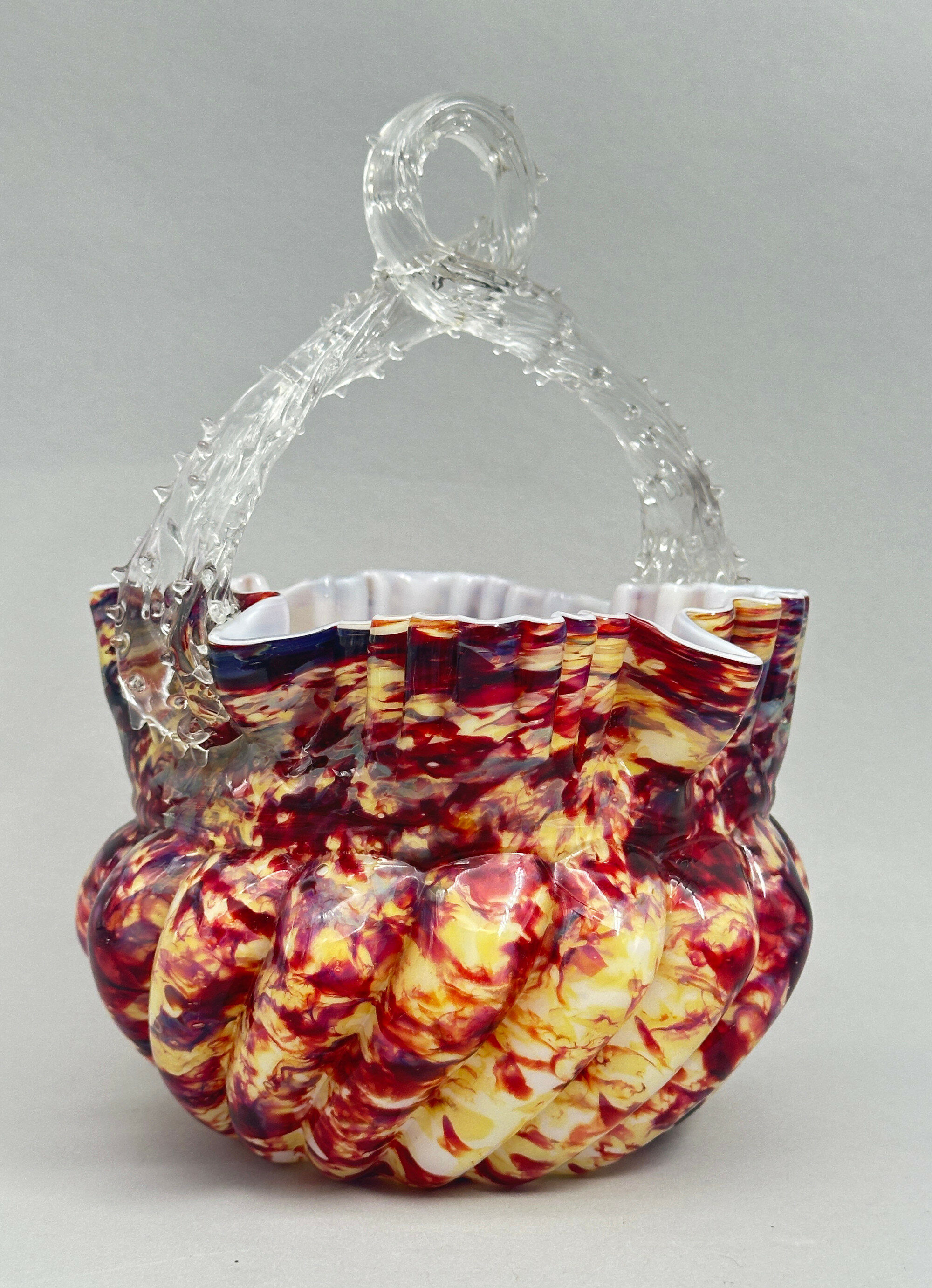
Spatter Glass Basket with thorn rope twist handle, probably Stourbridge, late C19th
Price: £75The 'spatter’ technique was known from Roman times but enjoyed something of a renaissance in the Victorian era when there was a general revived interest in the glass making techniques of the ancient world. Similar baskets are normally associated with the glassmakers at Stourbridge, Worcestershire, a centre of glass production since the 1600s, and this seems the most likely source of this piece, with a dating to the late nineteenth century. It is an excellent example of the type and remains in fine condition.
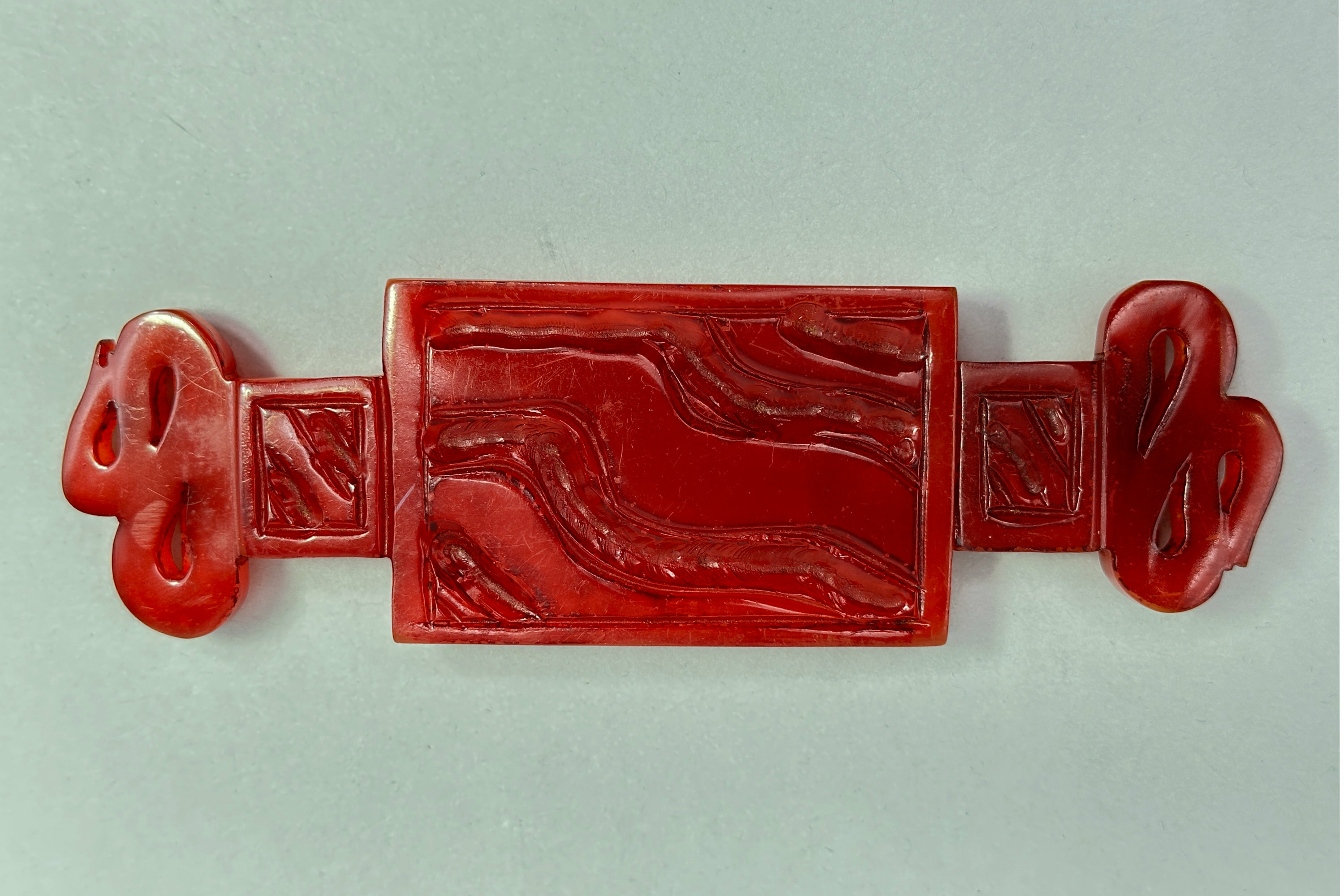
Rare large ruby red Bakelite buckle, American 1930s
Price: £75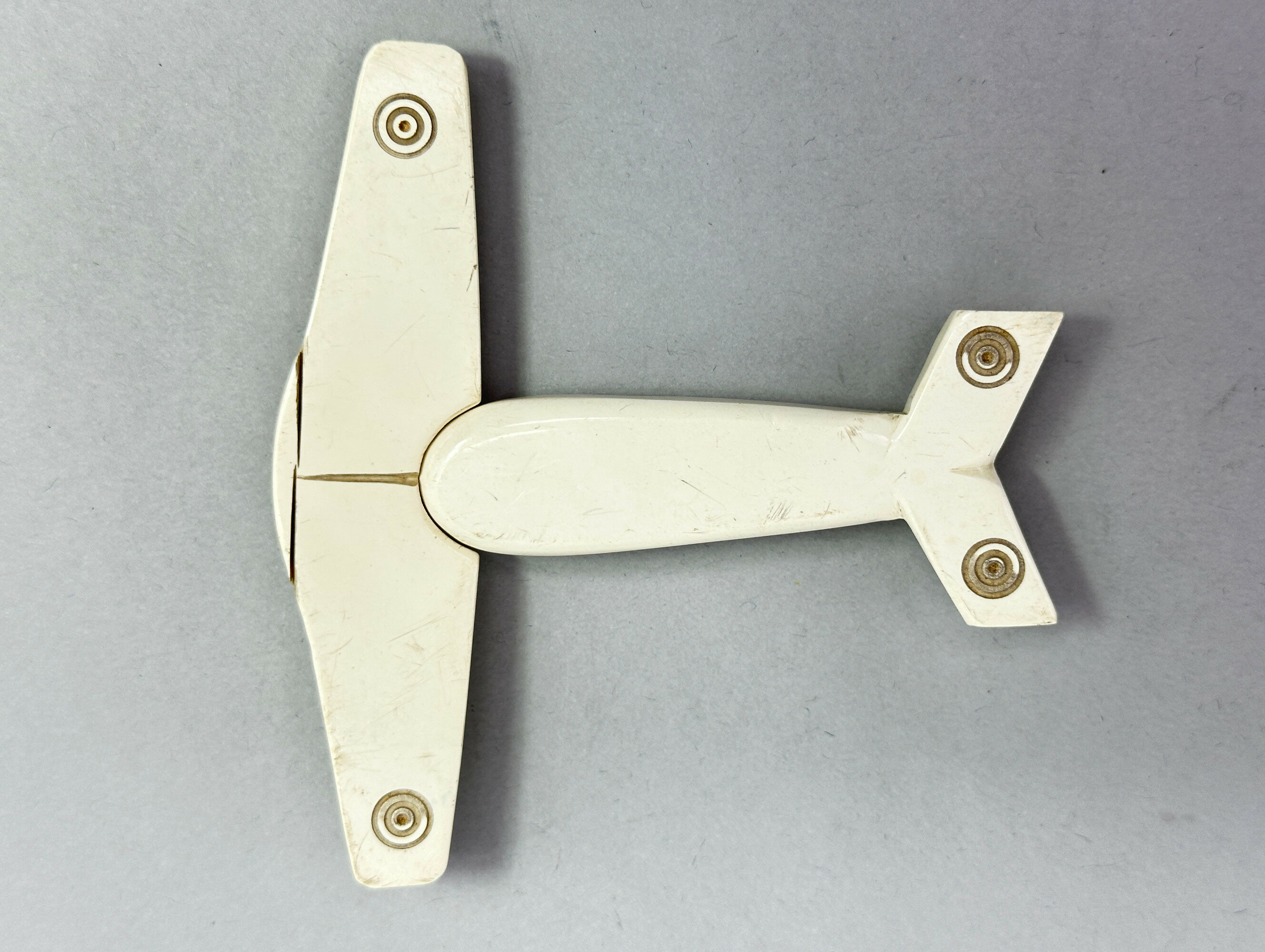
Striking Bakelite buckle in the shape of an airplane, American 1930s
Price: £45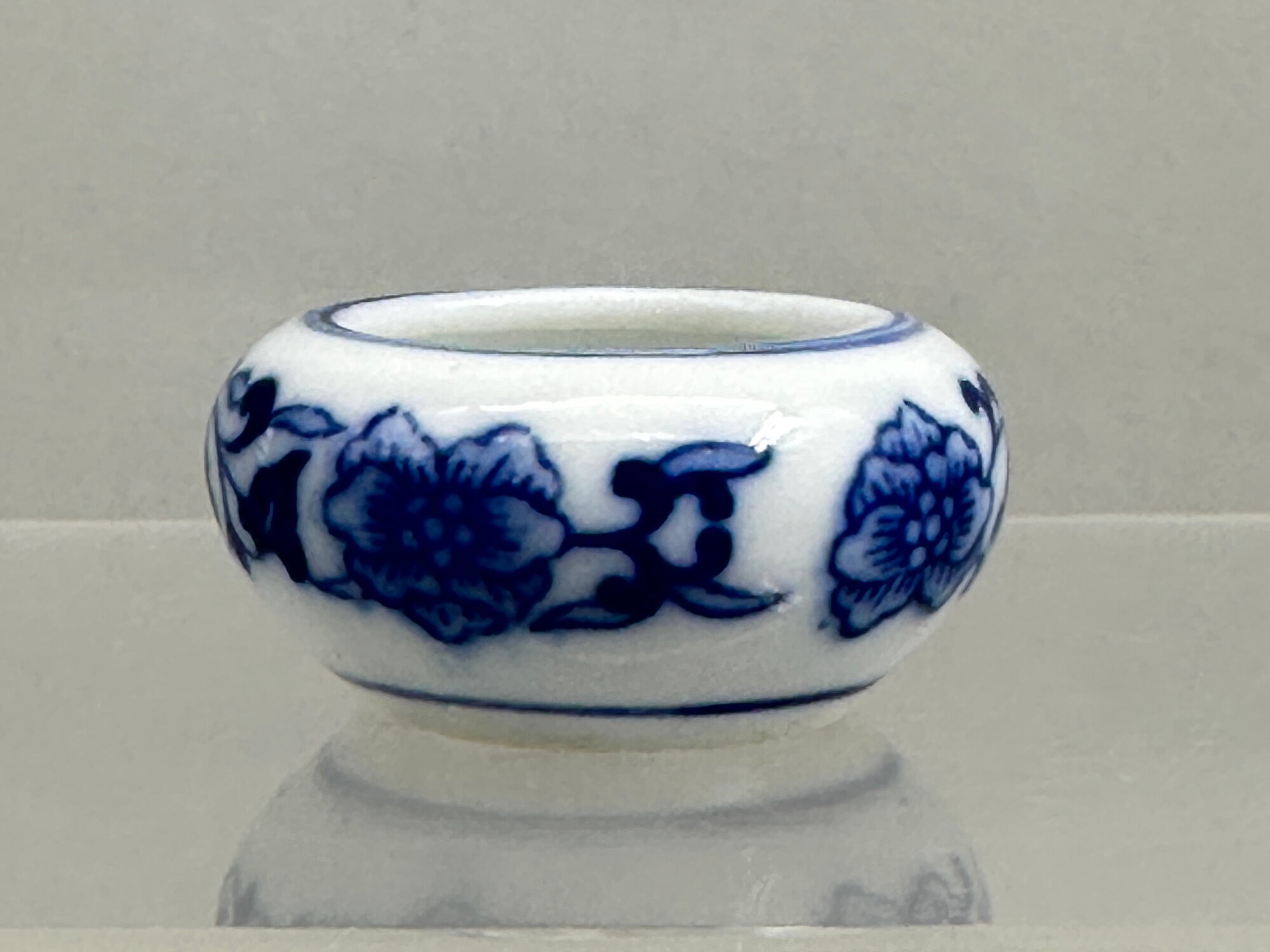
Small Chinese Blue and White Brushwasher, C20th
Price: £25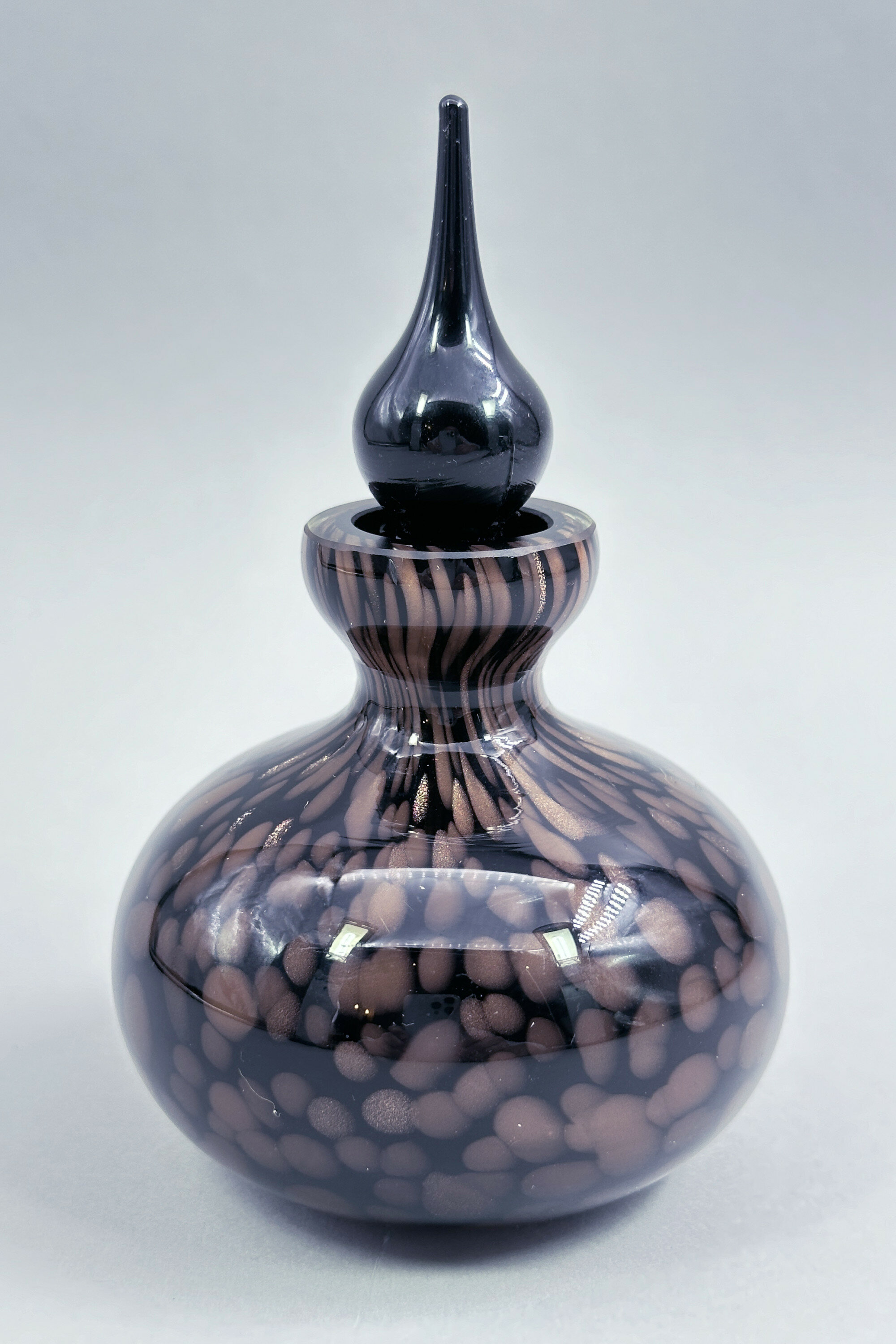
Black and Gold Copper Glitter Art Glass Scent Bottle, probably Murano late C20th
Price: £55
Chinese Doll of a man dressed in traditional costume, early C20th.
Price: £95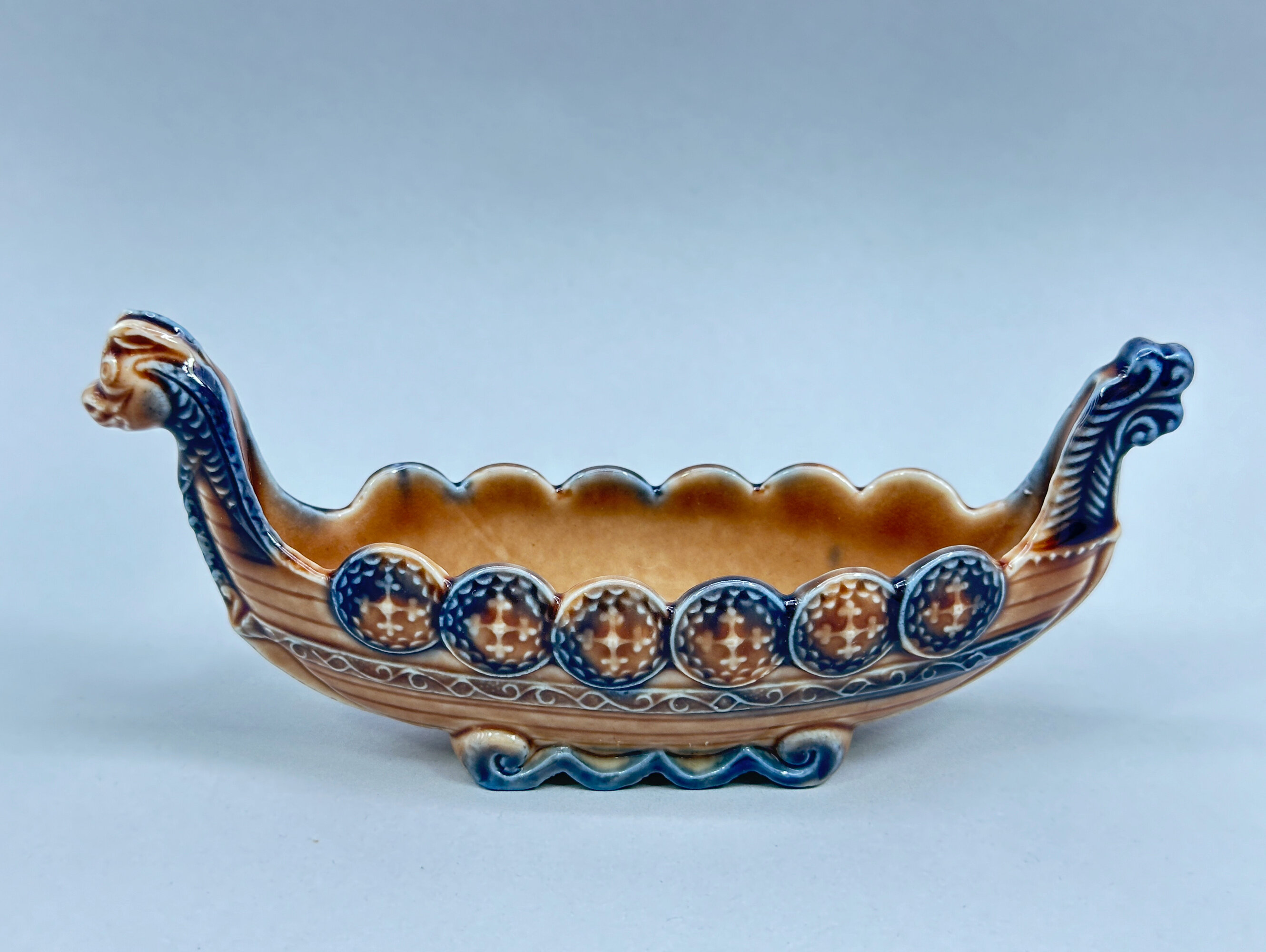
Ceramic Model of a Viking Longboat, Wade, 1950s/1960s
Price: £25Wade Ceramics Ltd was a manufacturer of porcelain and earthenware, headquartered in Stoke-on-Trent, England. Founded in 1867, it was run by various members of the Wade family until the death of George Anthony Wade in 1987 after which there was a succession of management buyouts. Despite substantial investment in 2009, the firm eventually went into administration in 2022. Wade produced a wide variety of ceramics, including the well known Wade Whimsies animal figurines.
Many of their pieces were designed to act as small containers for flowers and trinkets and this piece is a particularly amusing example of the type. Two colour ranges exist, one as here and one with much darker tones which is held to be later. Dating here, then, is most likely to the 1950s/1960s when the Wade production lines were in full swing and enjoying considerable popularity.

Art Deco beaded bag with celluloid frame
Price: £25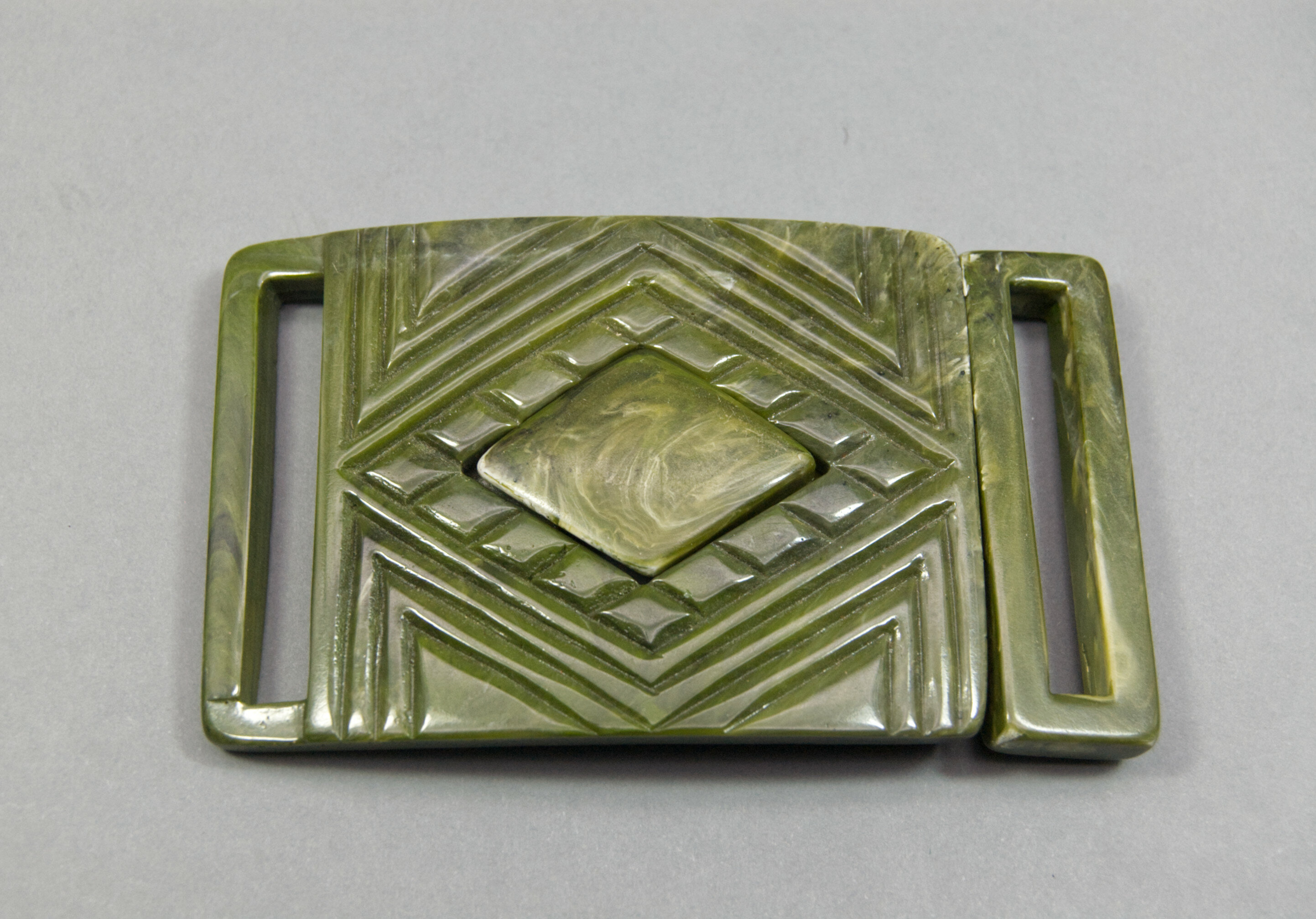
Large Art Deco green Bakelite Buckle with a label for Harlem Adler, American 1930s
Price: £35
Elegant Modernist pendant 1970s
Price: £15
Pair of Modernist Taxco earrings, c1980
Price: £45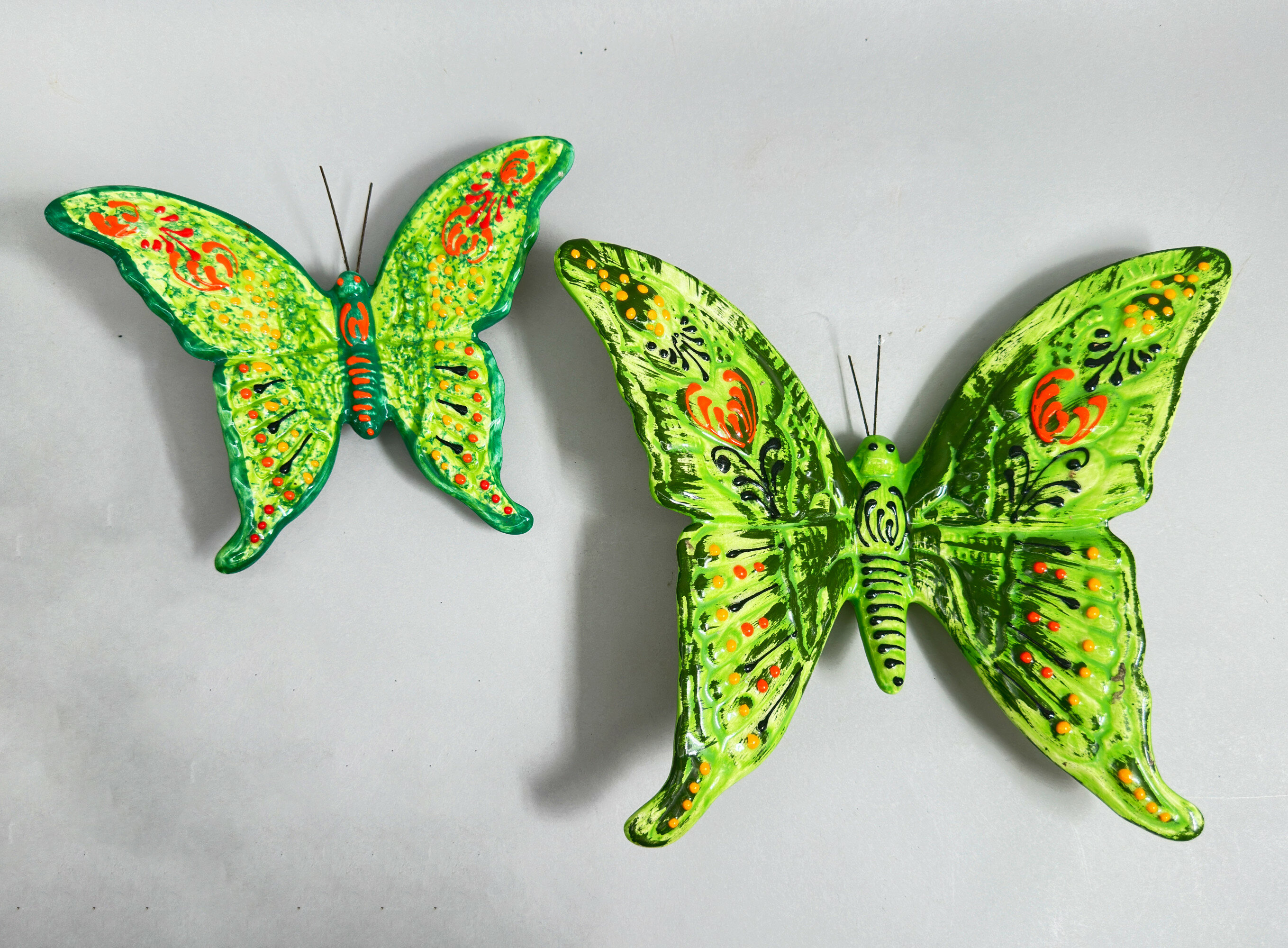
Pair of Ceramic Wall Hanging Plaques, Butterflies, probably continental 1960s
Price: £40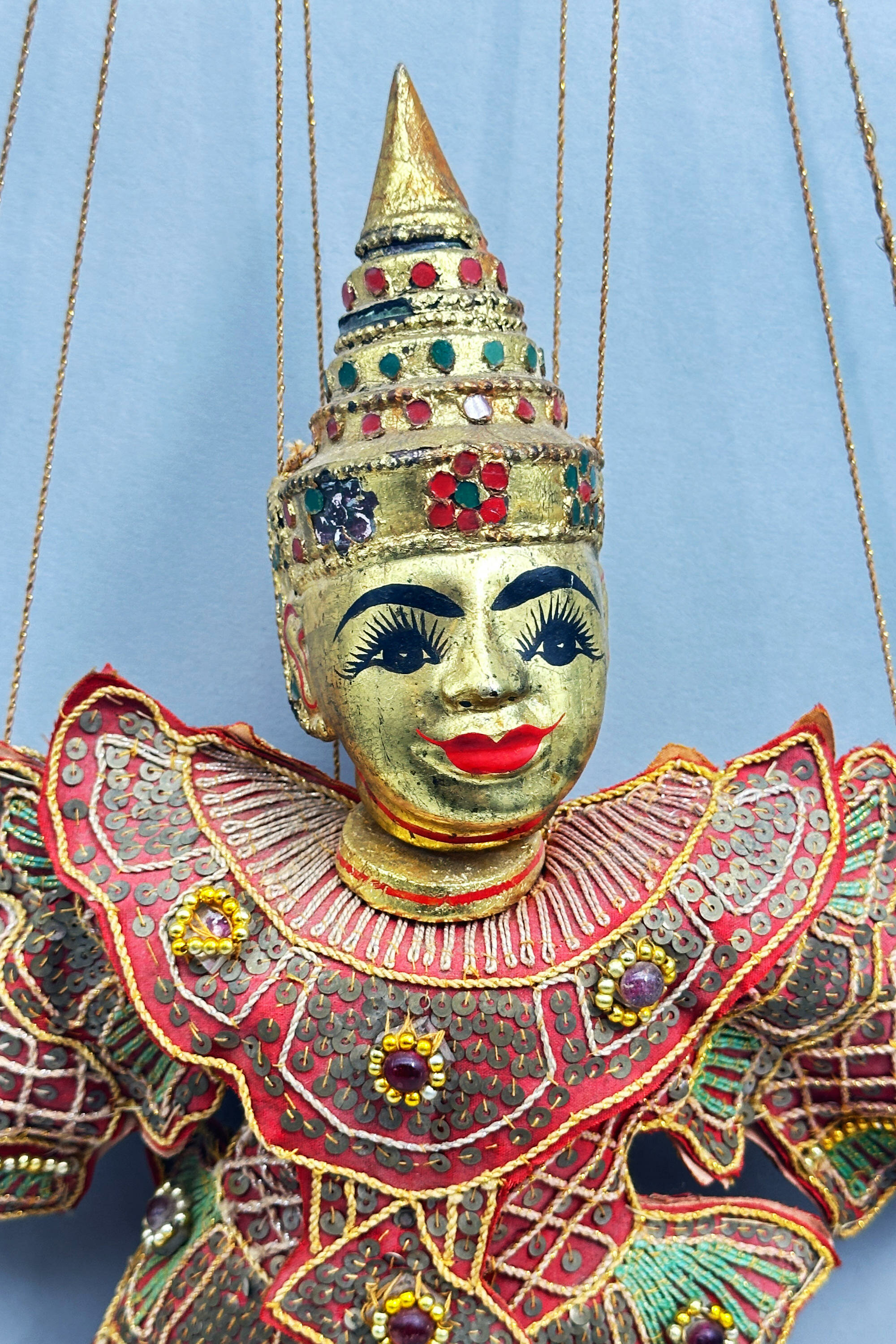
Marionette Figure of a Prince, probably Burmese mid C20th
Price: £45The style of the dress suggests Burma which has a tradition of marionette puppetry (marionettes are a specific form of puppet where the figure is controlled by strings or rods) dating back to the late eighteenth century and still popular today with visitors to the country, now called Myanmar. Termed ‘Yoke thé’, the Burmese marionette tradition allowed political commentary under the guise of of an entertainment display. The standard ‘troupe’ comprised twenty seven characters, both animal and human, and this male figure is probably the ‘King’ (‘Mintayar gyi’). Dating is probably to the mid C20th and a little earlier than the female marionette figure also included in this sale. This figure is rather more majestic as befits his regal status.
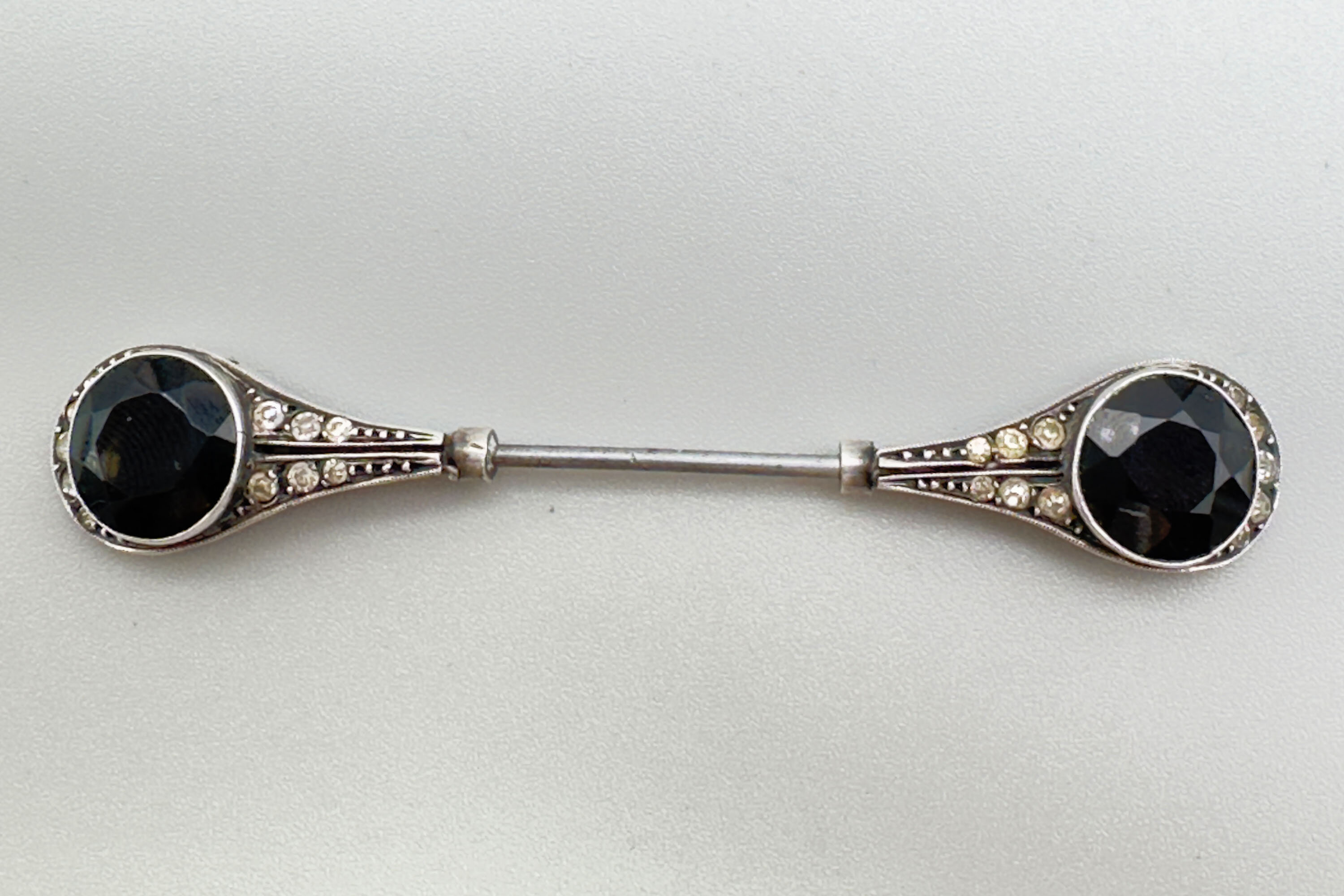
Art Deco double ended stick pin with amethyst and diamonds c1920
Estimate: £80 – 100
Art Deco glass bead necklace
Price: £20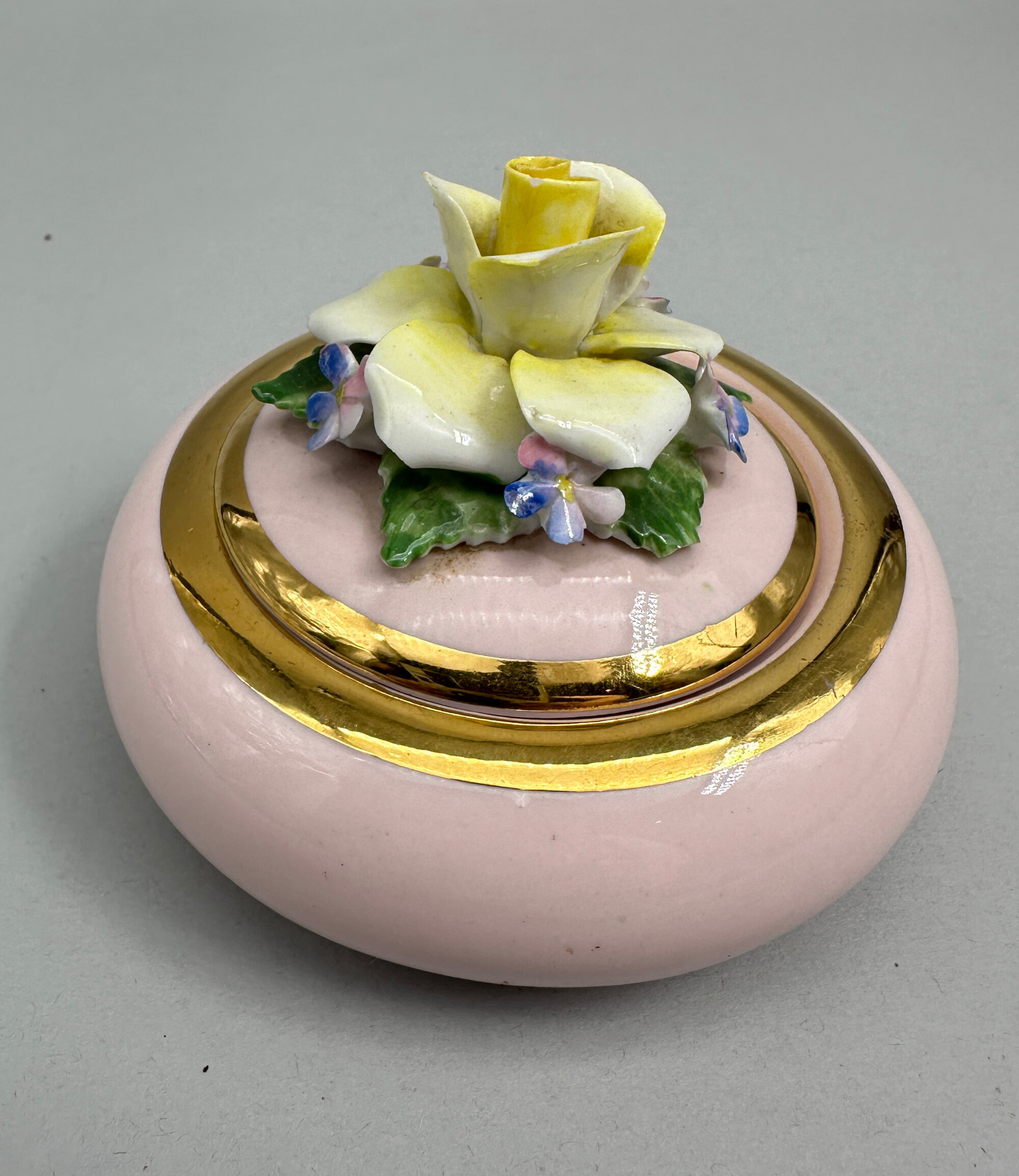
Pink porcelain powder box, Radnor Bone China, English Staffordshire, 1950s
Price: £15Radnor was the trade name used by Hall Bros (Longton) Ltd. Hall Brothers was a China manufacturer based at the Radnor Works, Longton, Stoke-on-Trent, England which traded from 1947 until its liquidation in 1972. It produced figures, birds, toby jugs and floral ware, mainly small porcelain boxes which were distinguished by their decoration of finely modelled flowers (see image XX for an advert from the 1960s). This box is a typical example and survives in excellent condition with just a very small amount of near inevitable damage to the petals.

Set of ring and earrings with obsidian mask motif, Mexico, 1950s
Price: £45
Victorian marquetry miniature table top games table
Price: £75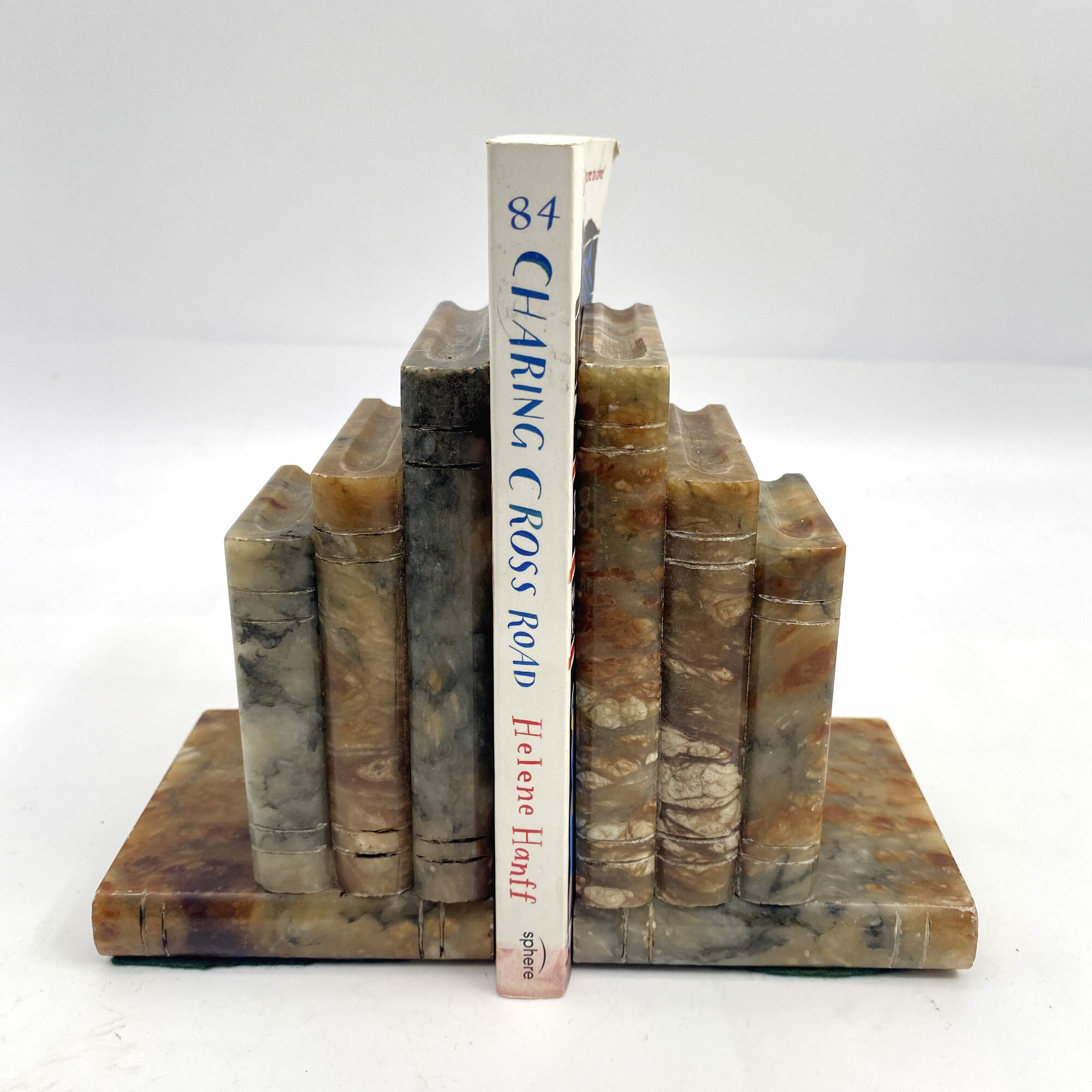
Pair of Italian Art Deco style alabaster Bookends in the shape of books, first half C20th
Price: £75
Japanese Fukagawa Jug and Stand decorated lotus, signed, circa 1900
Price: £45The Fukagawa kilns produced the best quality Imari items made in Japan in the late nineteenth century for export to the West. Their history starts with Ezaiemon Fukagawa who in 1856 became head of his family's porcelain business and in 1875 founded Koransha (The Company of the Scented Orchid) in Arita, Japan, to produce tableware for export. In 1894 the modern Fukagawa company was founded by Chuji Fukagawa, with the Fukagawa trade mark of Mount Fuji and a stream, as its trade mark. Dating of these pieces is therefore towards the end of the Meiji period (1868 - 1912) probably around 1900. While the decoration is similar to that found on other Fukagawa pieces there are few, if any parallels, and tea ware pieces by the firm are not very often seen.

Porcelain Mug : Buckingham Palace 1997
Price: £10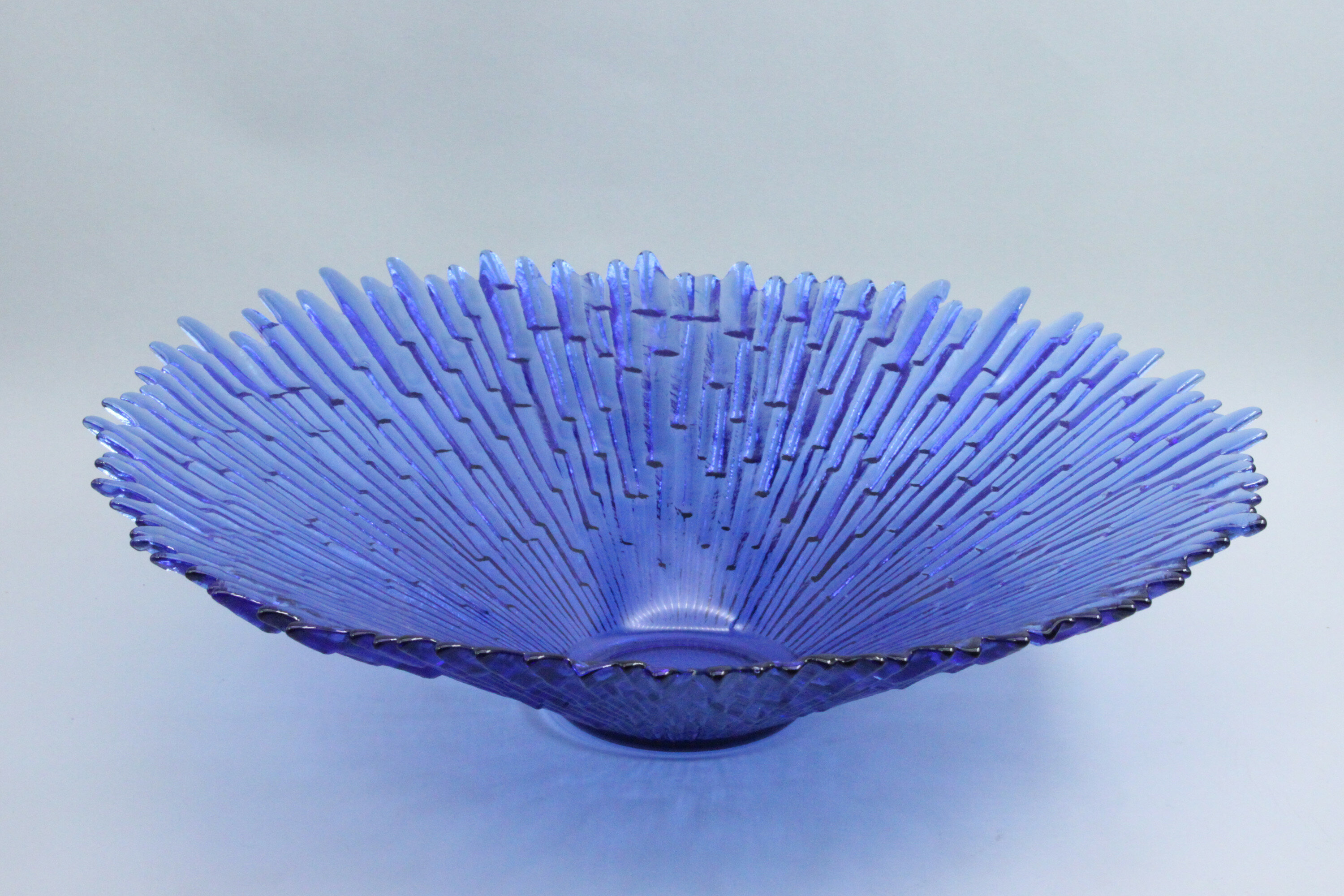
A Blue Glass Icicle Bowl, designed by Tauno Wirkalla for Humppila Finland, late C20th
Price: £150Tauno Wirkalla was the brother of the celebrated Finnish designer Tappio Wirkalla and like him favoured an ‘ice glass’ effect in his designs. He was one of the designers for the Humpilla Glassworks in Finland which was founded by the Helander brothers in 1952 and was then subject to various takeovers, finally being acquired by the firm Nuutajarvi (for whom the Helander brothers had originally worked) in 1986. Wirkalla produced many ‘ice glass’ designs for Humppila, some of which are signed and some still surviving with their factory labels, which is not the case here. This bowl is of an exceptionally large size and has miraculously survived undamaged with all its pointed edges intact. A truly distinctive centrepiece recreating the style of an earlier era.
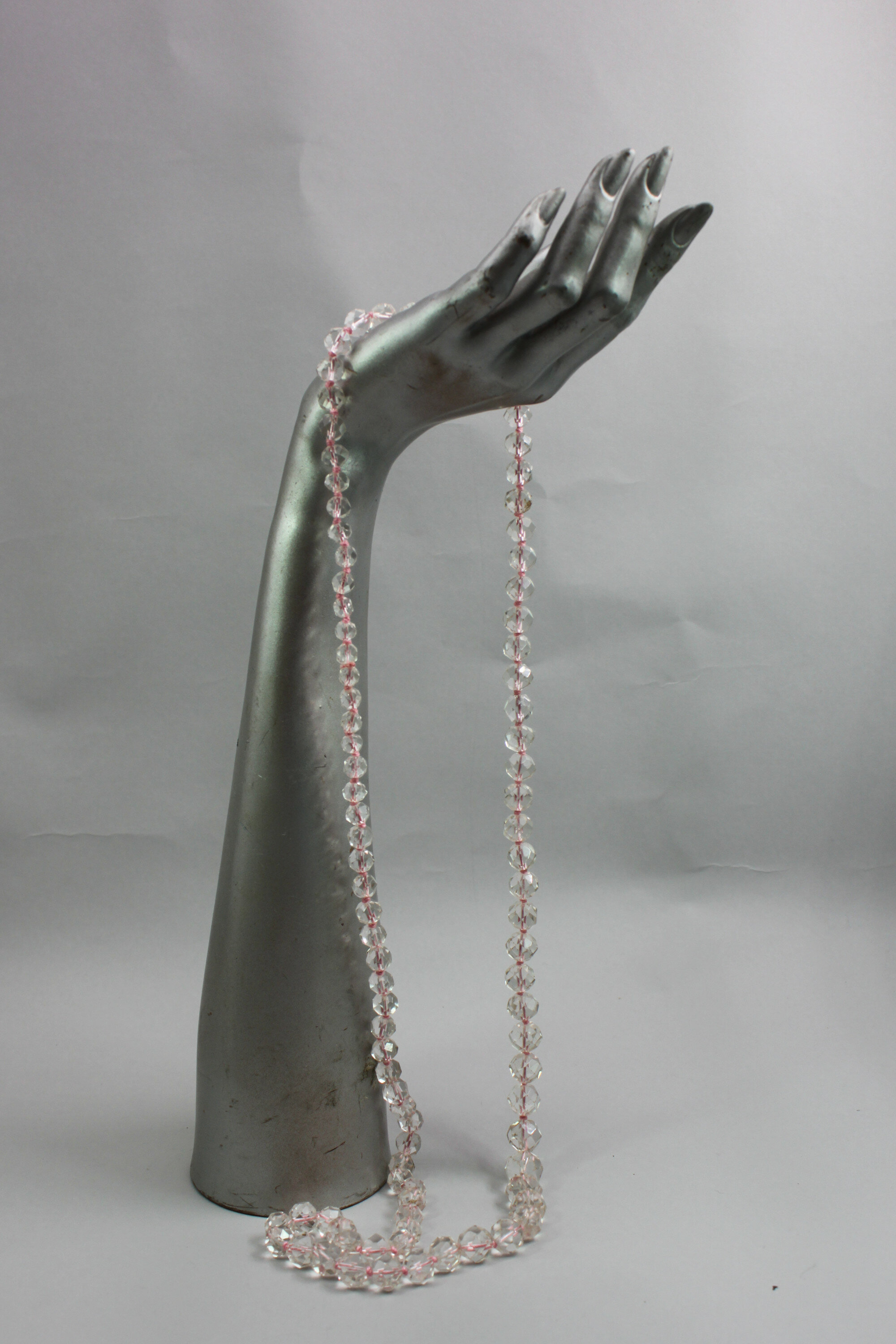
Stunning opera length string of rock crystal beads
Price: £35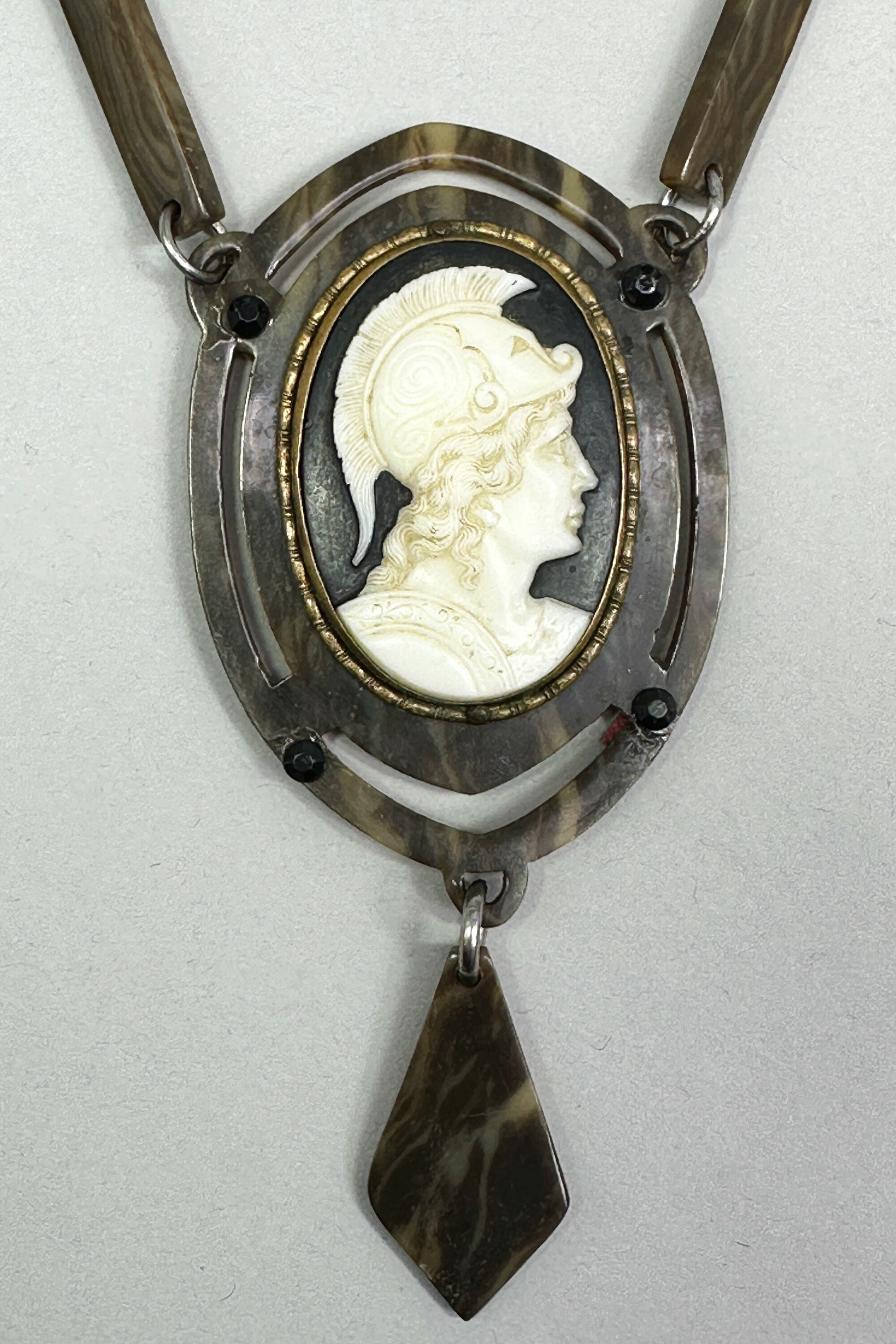
Outstanding brown swirl Bakelite Necklace with faux cameo, French 1920s
Price: £45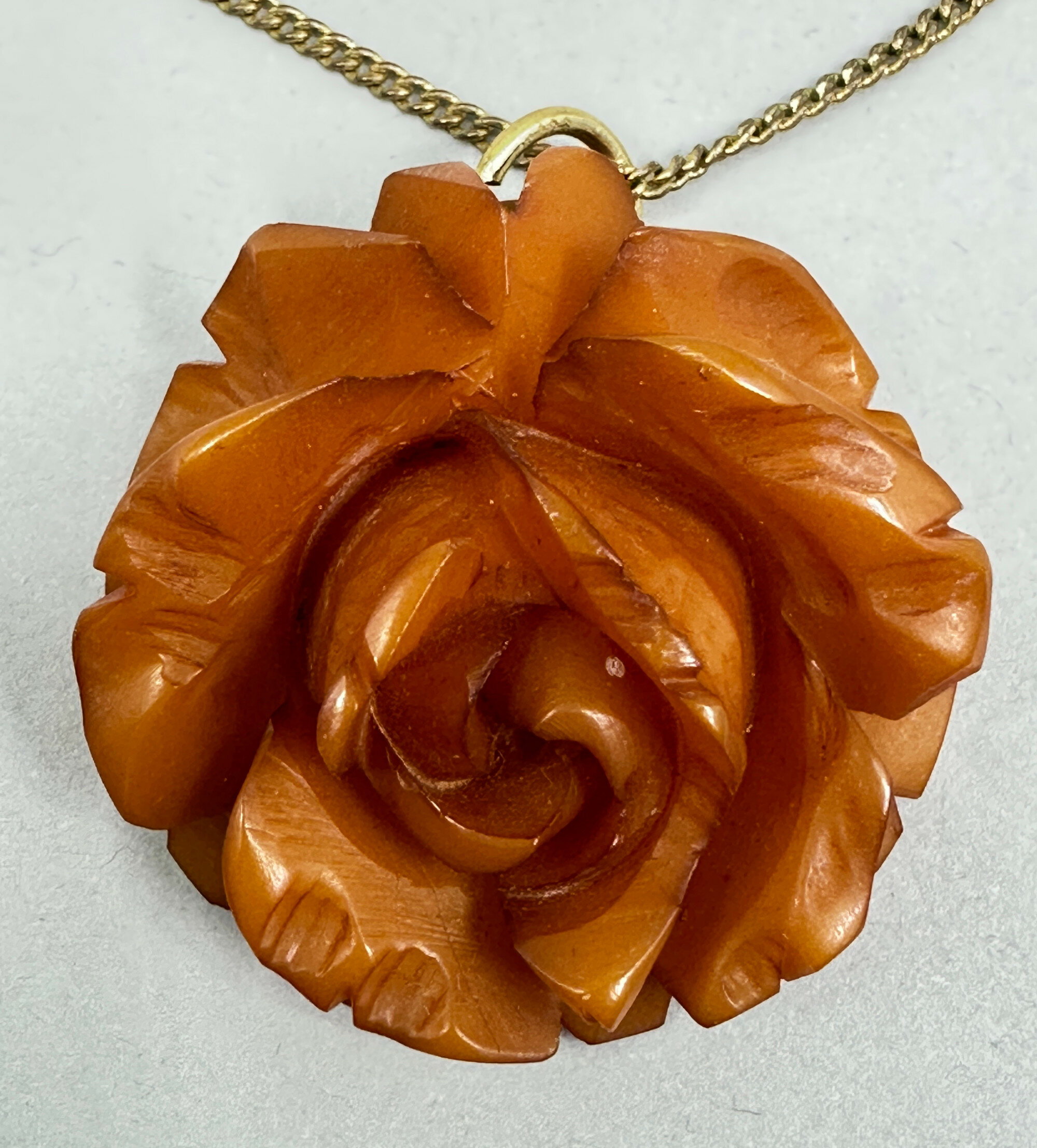
Attractive carved Orange Bakelite Bloom Pendant on modern gold tone chain, British 1930s
Price: £15
Chinese Famille Rose Bowl decorated with ladies, Qianlong mark, Republican period
Price: £45PLEASE NOTE THAT THERE IS FREE UK SHIPPING ON THIS ITEM. For international buyers the shipping cost will be reduced by the UK shipping cost, so don't worry if you are outside the UK, you still receive this benefit!

Small Chinese Bronze Vase of Ku Form with Elephant Head Handles, Qing Dynasty circa 1800
Price: £75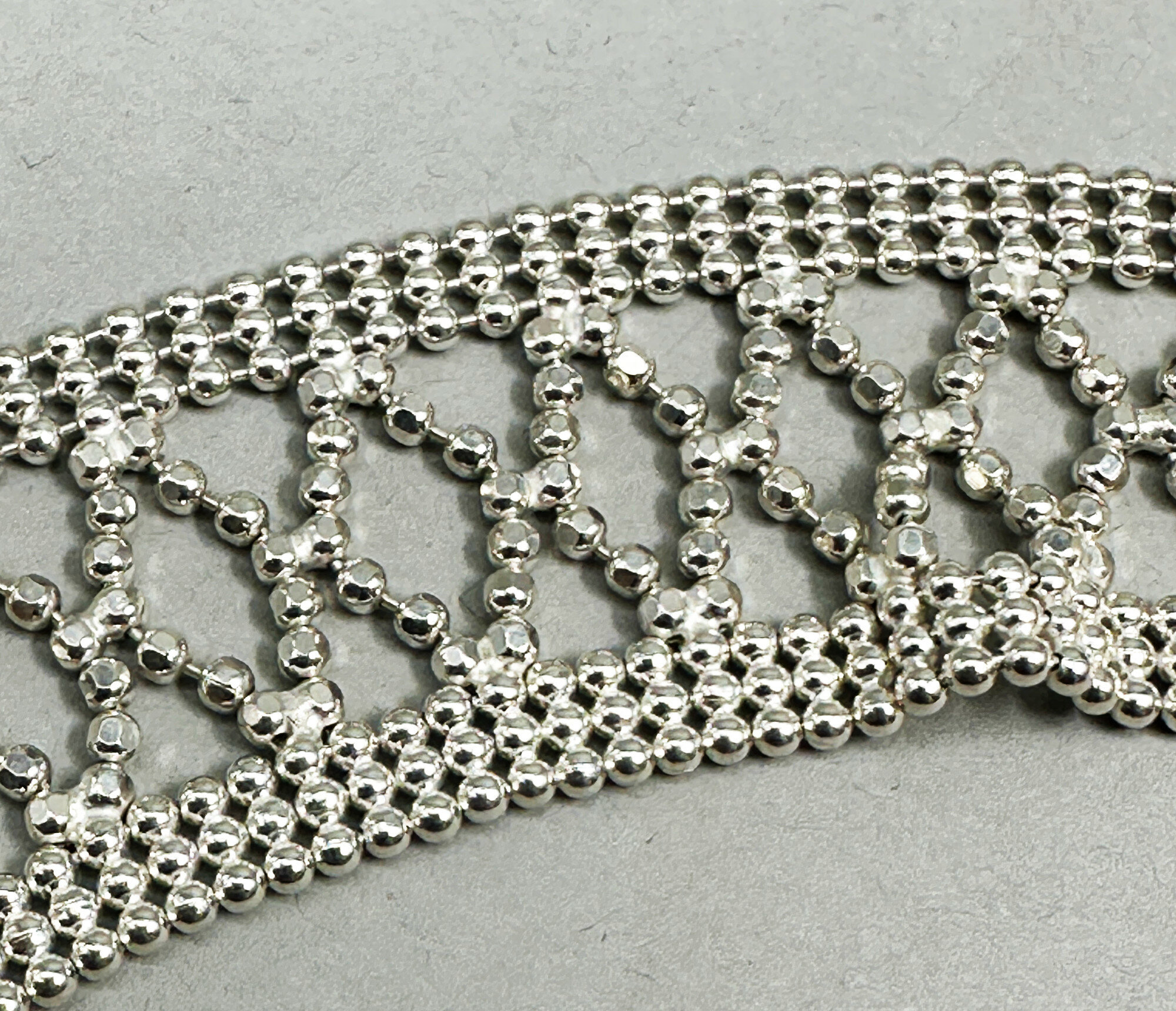
Diamond cut millegrain silver bracelet, 20th century
Price: £45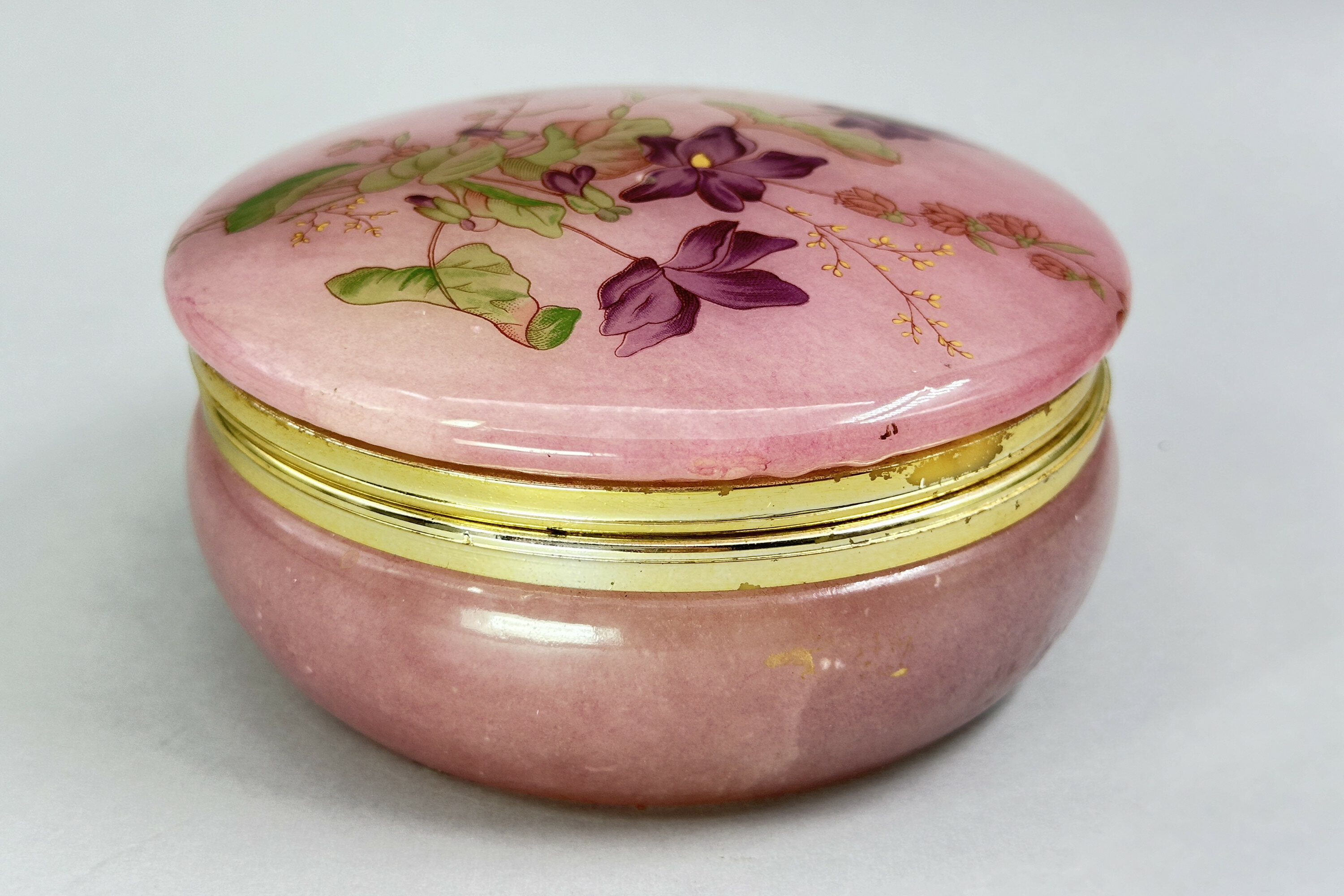
Pink Alabaster Box and Cover, Italy late c20th
Price: £25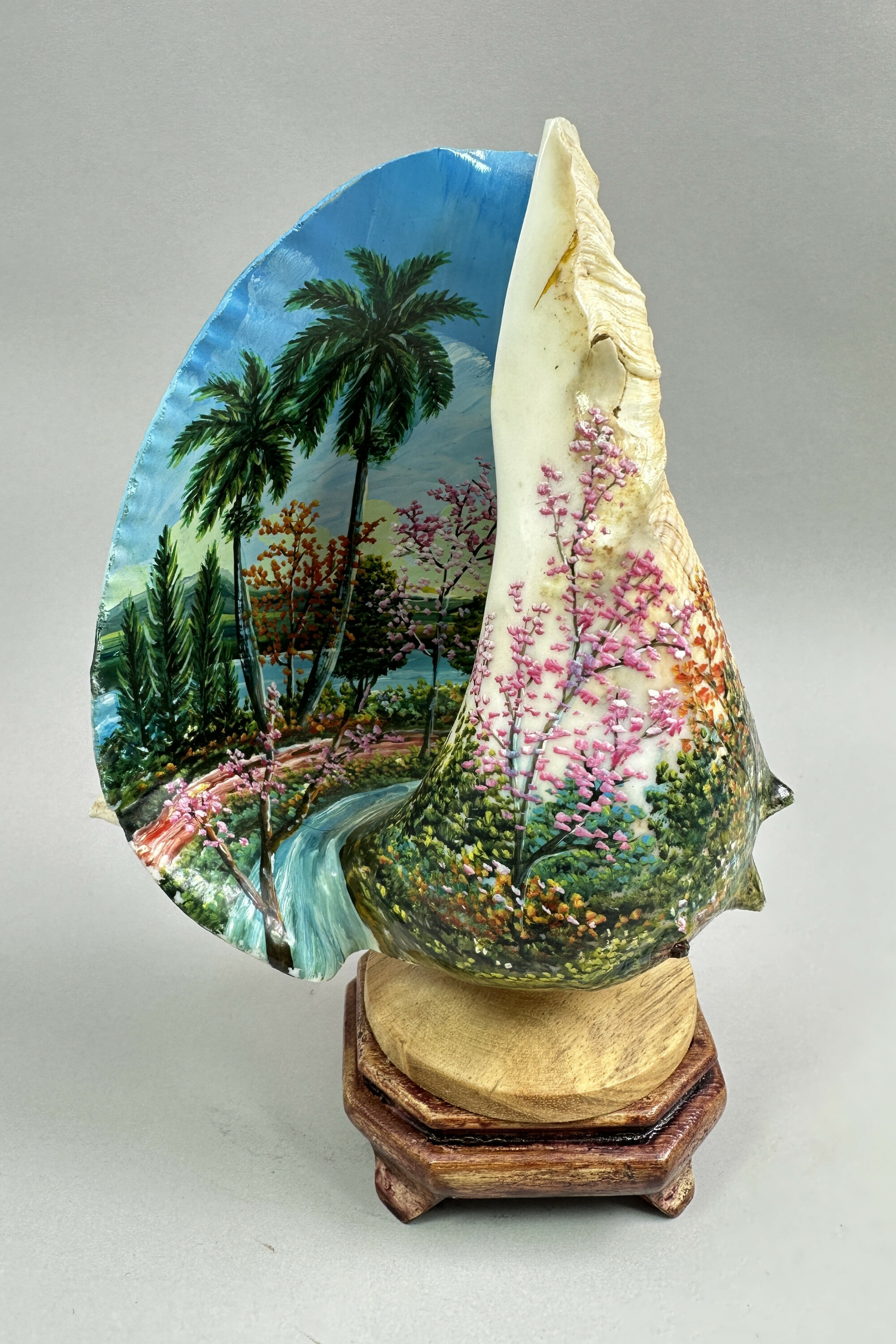
Kitsch Style Conch Shell with painted landscape decoration, C20th
Price: £45
Chinese Reverse Painted Glass Globe depicting tigers, Modern
Price: £45
Art deco style necklace with large blue stone c1970
Price: £50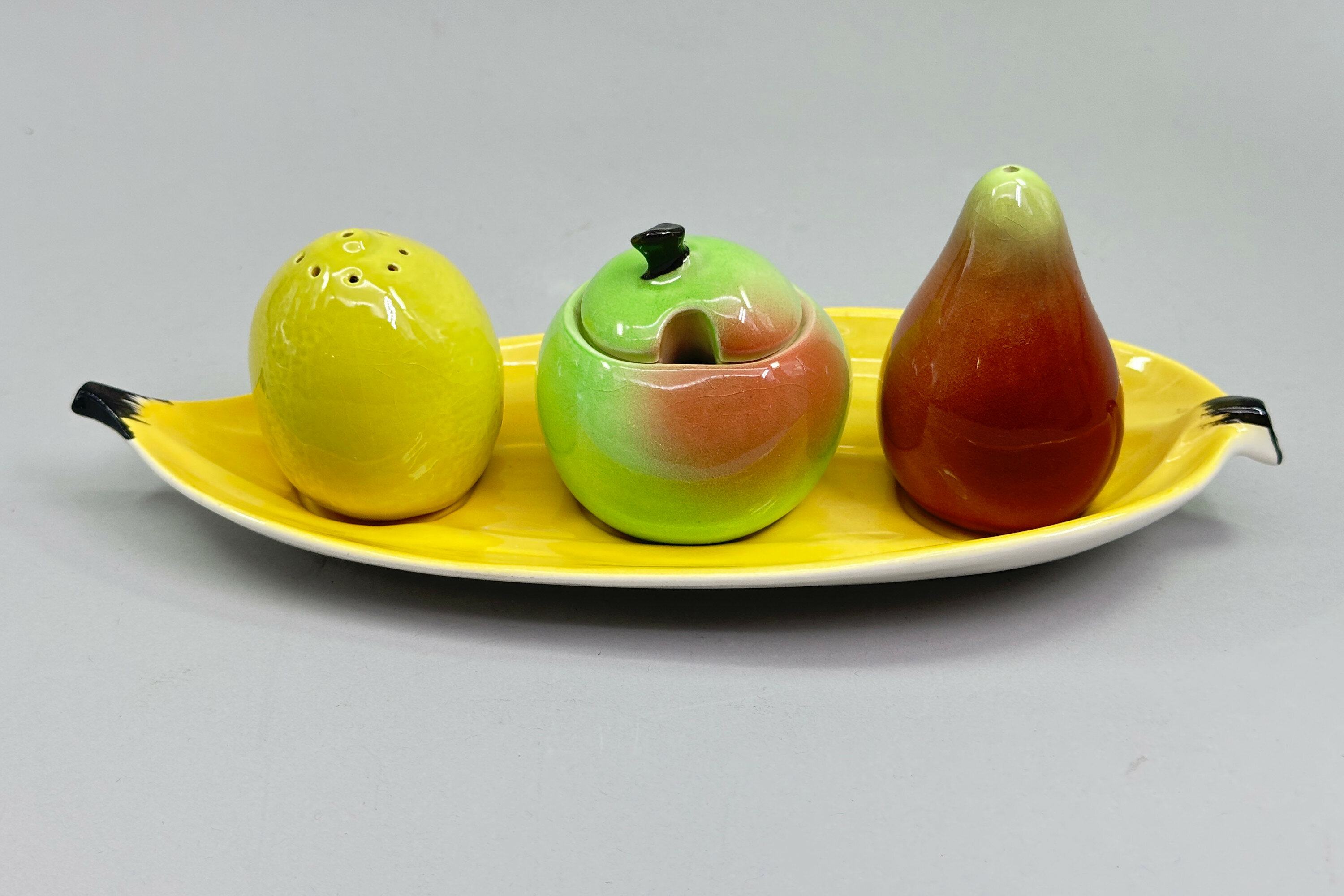
Carlton Ware fruit Cruet Set, Australian Design, 1950s
Price: £35Carlton Ware was the trade mark used by the pottery manufacturer Wiltshaw and Robinson, whose premises were located in Stoke on Trent, four years after the firm’s establishment in 1890. The well known script mark was introduced in 1928. The firm mostly concentrated on decorative giftware and new methods of production introduced in the 1920s put it at the forefront of the earliest Art Deco pottery pieces produced, firstly with designs originating from Tutankhamun’s tomb and then with pieces with an Oriental chinoiserie influence. Tablewares were also produced and this cruet set is an example of the imaginative designs made after the second world war and most likely dates to the 1950s. The appeal is obvious and today this set, complete with the original stoppers for the salt and pepper, can fulfil both a practical and decorative function.
Some examples appear to have an original matching spoon for the mustard pot; if that is the case, then it is absent here, but the spoon often illustrated looks quite generic and may not necessarily have been an integral component.

Massive Victorian Carnelian Cameo Shell
Price: £55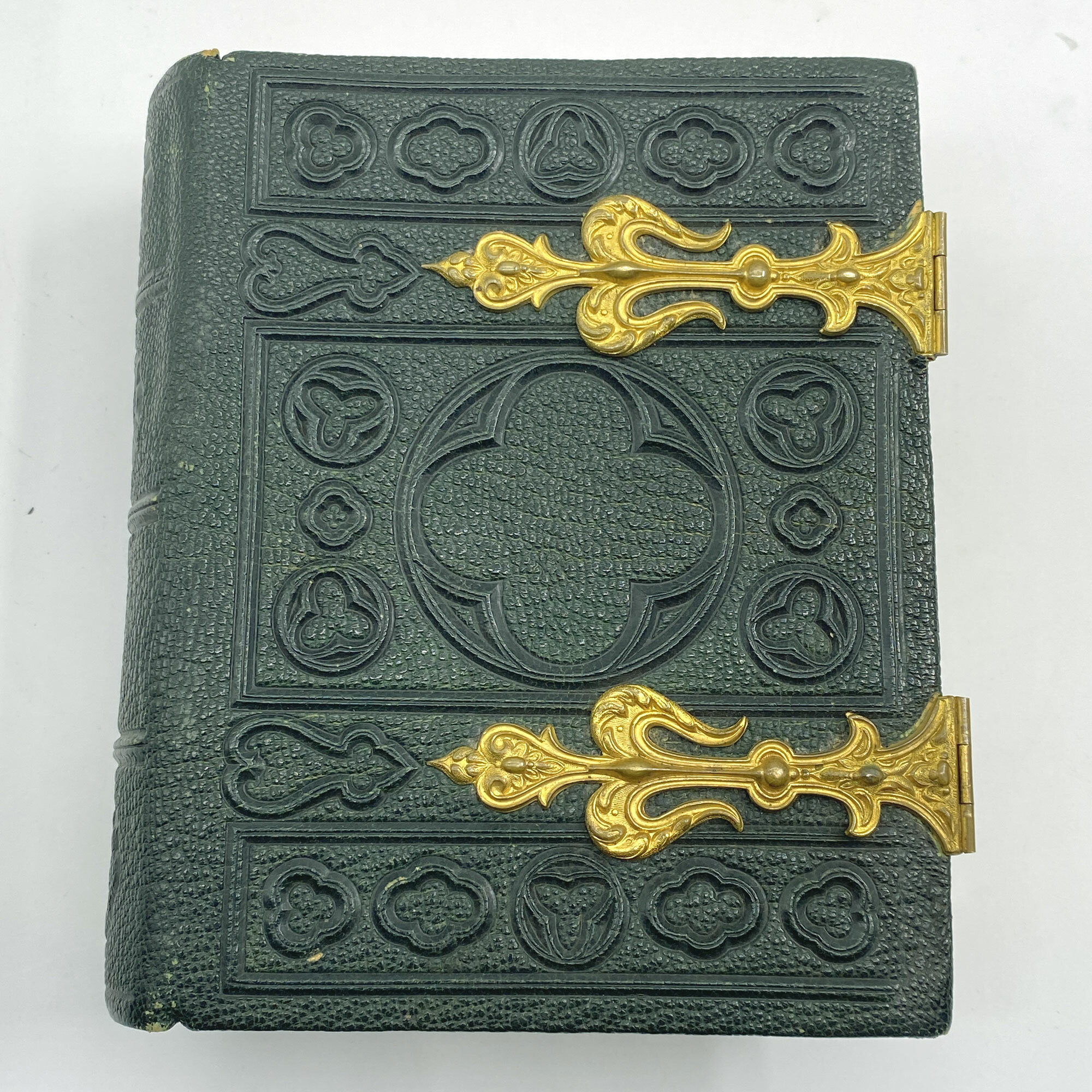
Victorian leather bound photo album made by Mechi and Bazin c.1870
Price: £110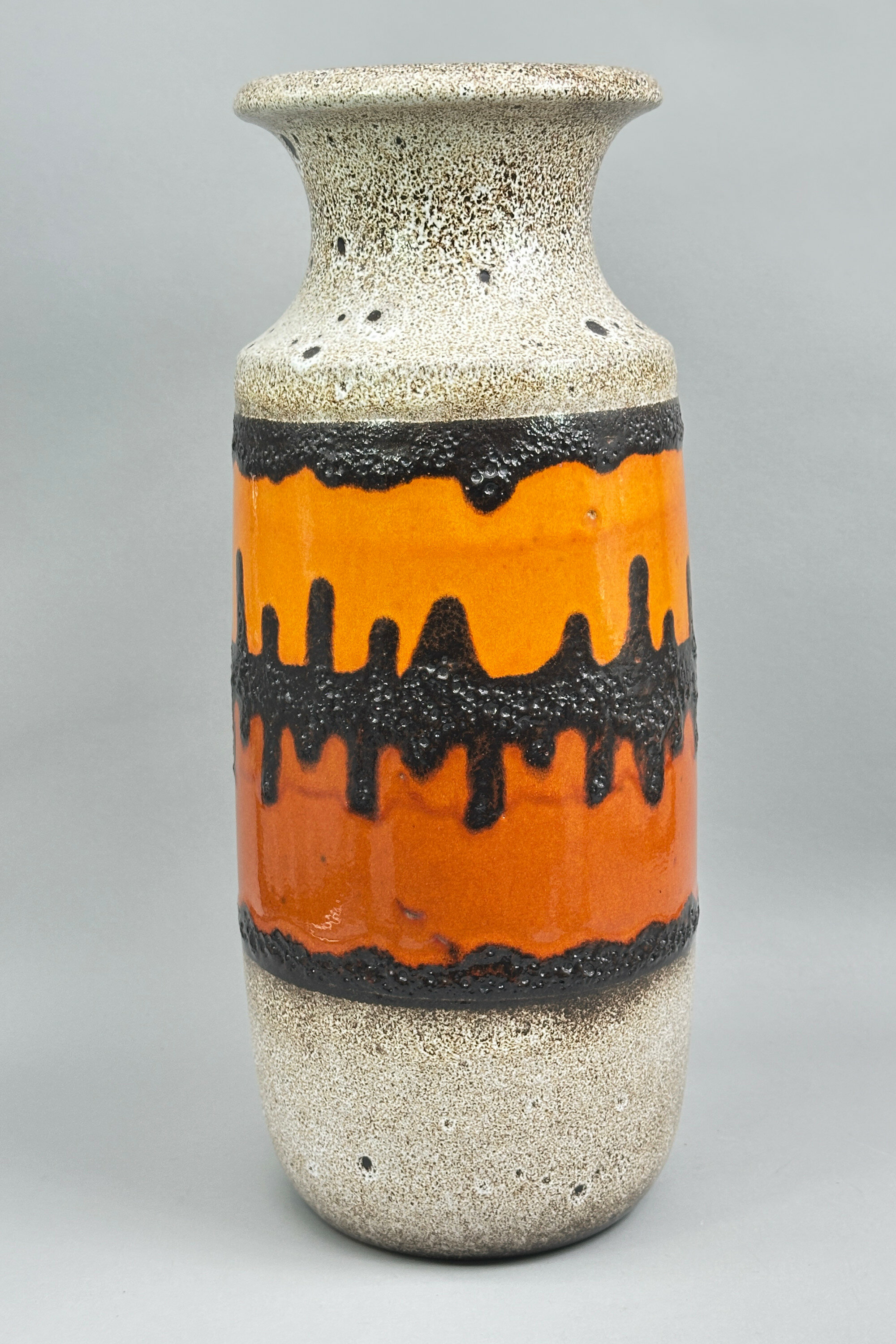
West German Studio Pottery Vase, Scheurich 259-41, 1970s
Price: £150……………………………………………………………………………………….....................................................................................… .
It took time for Germany to rebuild after the Second World War and it was not until 1949 that the country regained its national identity. The production of ceramics slowly revived and began to gain momentum in the 1950s eventually reaching a total of over one hundred companies and studio potteries. Some of the concerns produced a substantial output including Carstens, Bay, ES, and Dümler & Breiden but the most prolific of all was Scheurich. In 1927 Alois Scheurich established with a partner a company named ‘Scheurich and Greulich’ (S&G) which focused on producing low cost ceramic and glass items (see image 7). The success of this business provided the springboard for the creation of ‘Scheurich KG Keramikfabrik’ in 1954. While it commenced production rather later than some of its competitors it soon grew to overtake them and the glaze colourings for which it became best known were produced in the 1970s. Eventually the firm changed direction yet again and is now known for producing ceramic garden ornaments which have an international appeal.
Most of the Scheurich pieces are marked, nearly always with two sets of numbers ‘XXX-XX’ and the wording ‘W.GERMANY’, although there are variants. The firm’s name can appear in addition, as here, where we see as well ‘SCHEURICH KERAMIK’, and it is thought that this indicates a later dating to the 1970s/1980s. The first three numbers are the model number and the last two the height in centimetres, here ‘259-41’. ‘259’, as with nearly all the model numbers, was made with a wide variety of glaze colourings and effects. Equally, similar colours and patterns were used on different models. The shape is one of the firm’s most successful. The cylindrical body narrows gently towards the base and has a well defined shoulder with a concave neck and an inturning rim. The bright orange at the centre is bordered with and divided by irregular black ‘crusty effect’ bands. These are an excellent example of the apocryphally named ‘lava’ glaze for which Scheurich was so well known. Either side of this are two sections of grey speckle glaze which complete the whole. The vase is glazed brown inside and at the base which has the factory markings in raised lettering. Similar glaze combinations can be found on other pieces but the result is rarely as successful as here and the colour scheme used enhances the classic simplicity of the shape, loosely derived from a Chinese original.
This is a vase to appeal to decorators and collectors alike and is very much a ‘one off’ example of these popular wares standing rather apart from its many companions.

Ceramic and Bronze figure of a Blue Tit, Albany Worcester, late C20th
Price: £35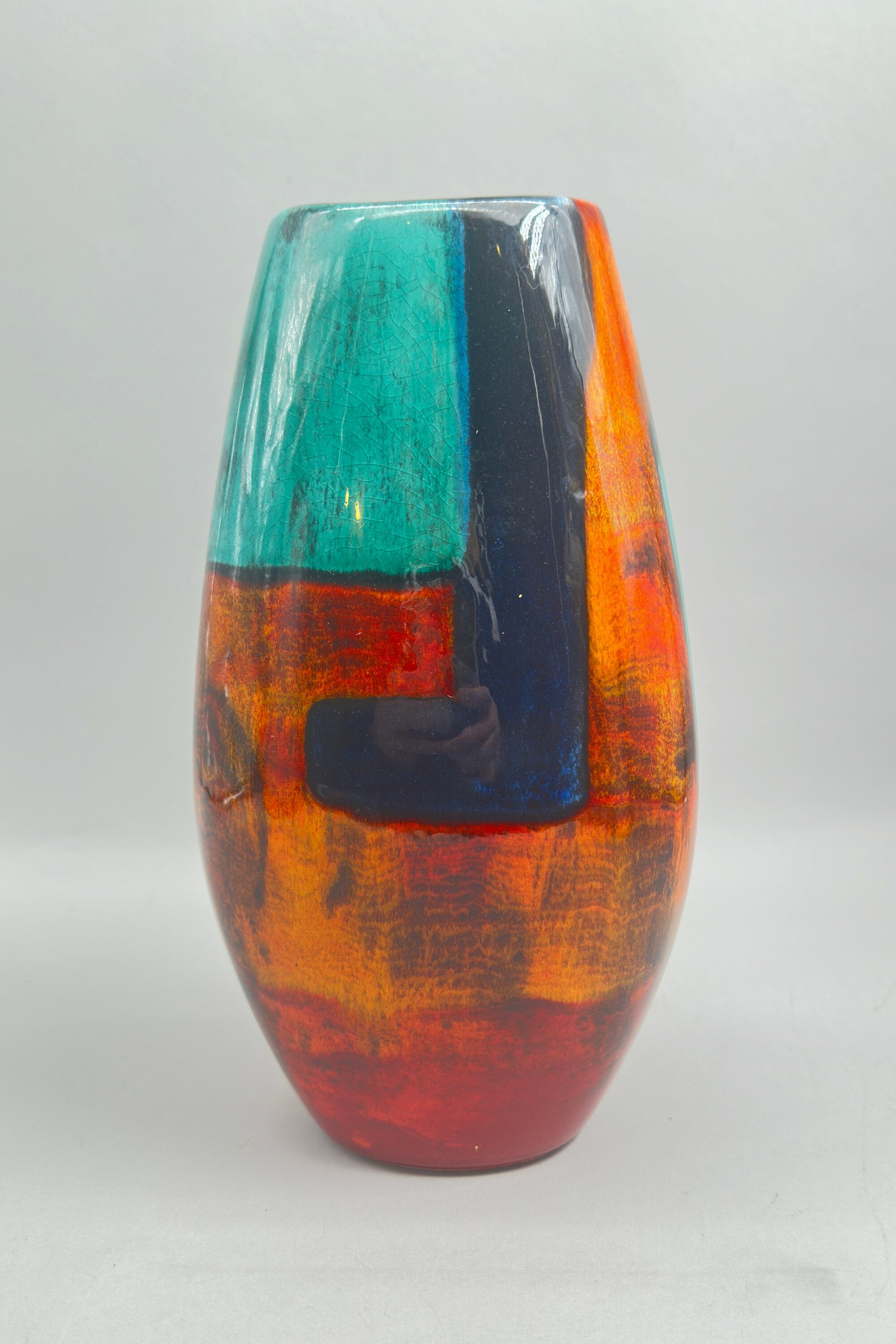
Poole Pottery Gemstones Vase, late C20th
Price: £75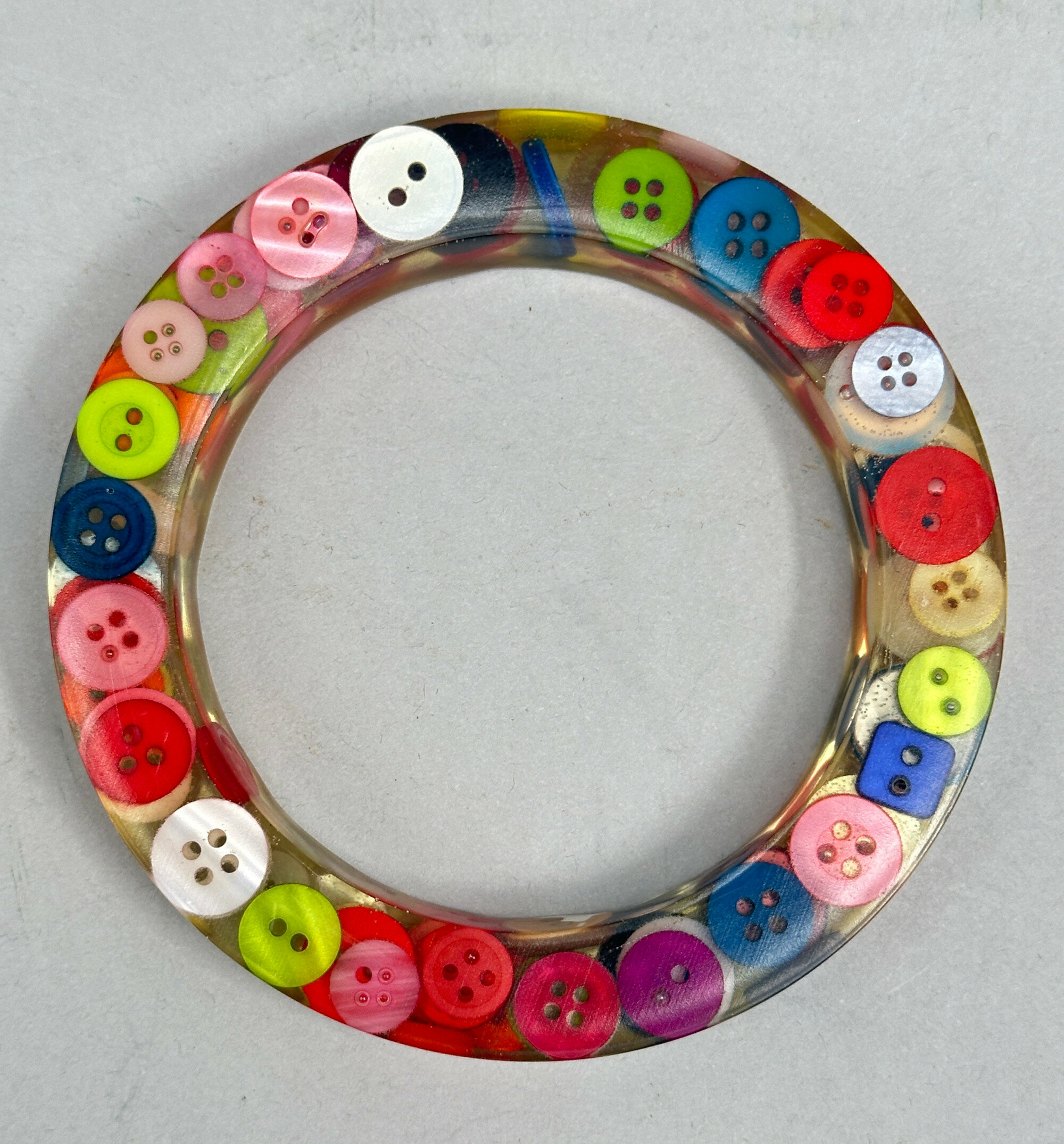
Fun 1970s button bangle
Price: £25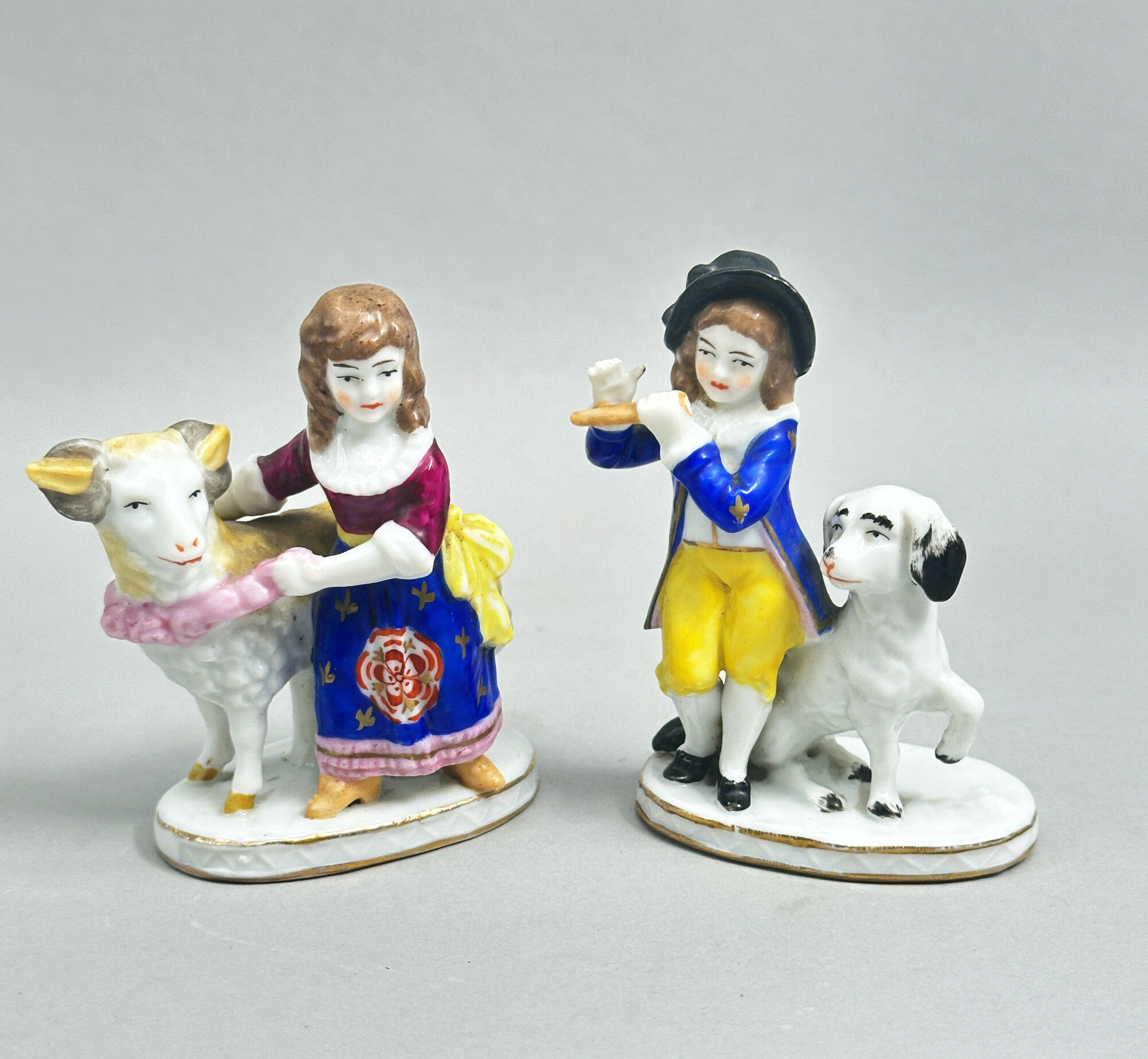
Pair of Chelsea style Figures of a Country Couple, probably Samson late C19th
Price: £55
Jakob Bengal Art Deco galalith and metal necklace
Price: £45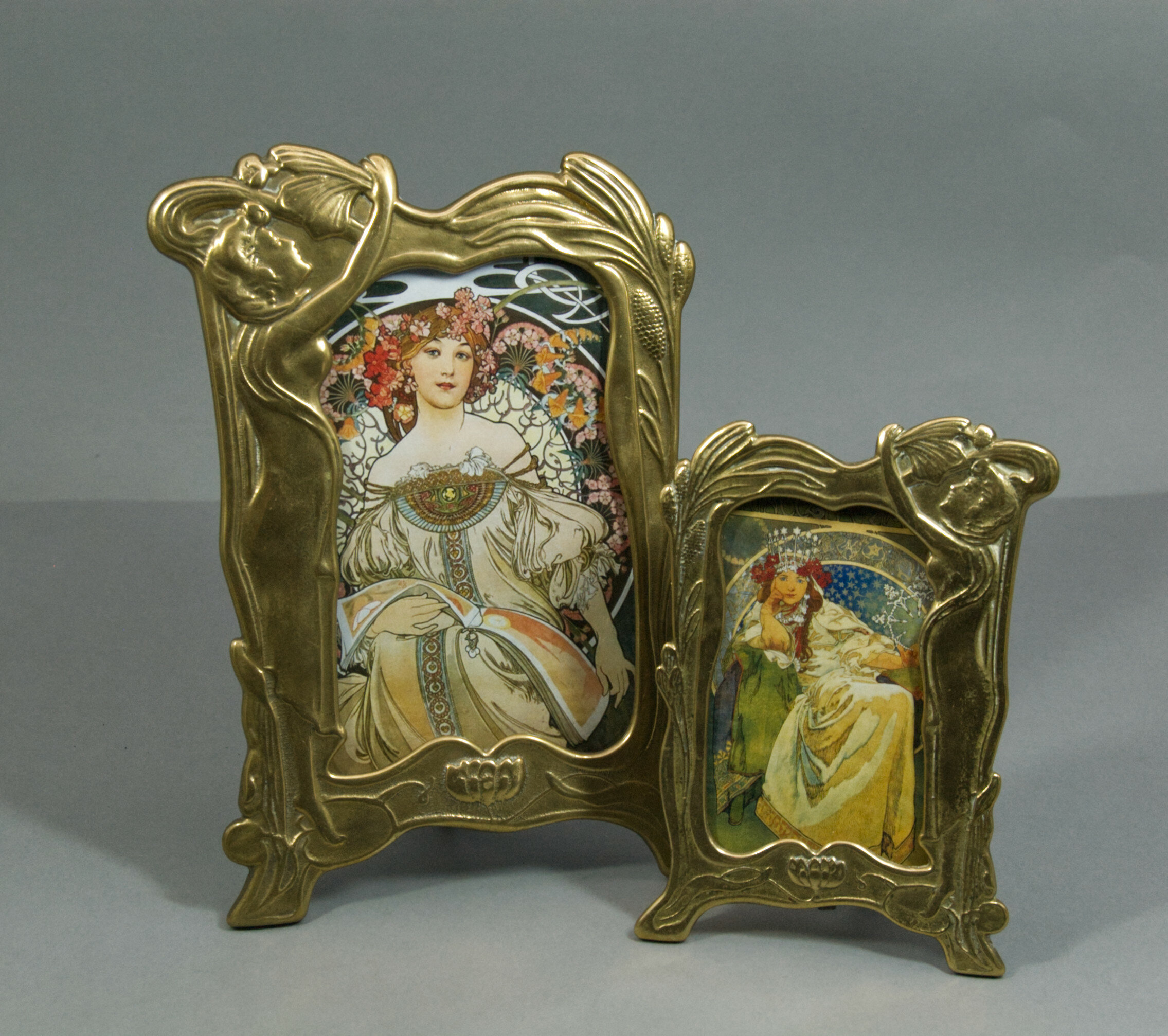
A Complementary Pair of Gilt Metal Art Nouveau style picture frames, 20th Century
Price: £45